5 Volumes
Constitutional Era
American history between the Revolution and the approach of the Civil War, was dominated by the Constitutional Convention in Philadelphia in 1787. Background rumbling was from the French Revolution. The War of 1812 was merely an embarrassment.
Culture: The Flavors of Philadelphia Life
Philadelphia began as a religious colony, a utopia if you will. But all religions were welcome, so Quakerism mainly persists in its effects on others, both locally and in America, in Art, clubs, and the way of life.
Sociology: Philadelphia and the Quaker Colonies
The early Philadelphia had many faces, its people were varied and interesting; its history turbulent and of lasting importance.
Religion
New volume 2012-07-04 13:22:31 description
Nineteenth Century Philadelphia 1801-1928 (III)
At the beginning of our country Philadelphia was the central city in America.
Religious Philadelphia
William Penn wanted a colony with religious freedom. A considerable number, if not the majority, of American religious denominations were founded in this city. The main misconception about religious Philadelphia is that it is Quaker-dominated. But the broader misconception is that it is not Quaker-dominated.
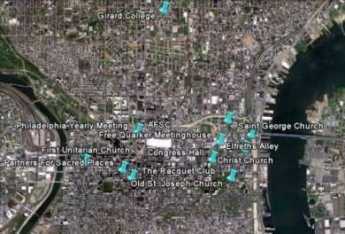
|
| Religion Walk Tour |
Puritan Boston & Quaker Philadelphia
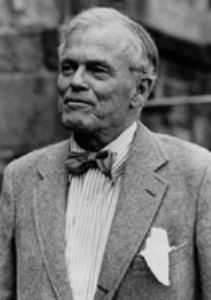
|
| Professor Digby Baltzell |
Digby Baltzell had something of the defiant rebel in him. He surely didn't imagine his employer, the University of Pennsylvania, was pleased to have him a document that Harvard is a better college than Penn. Nor were fellow members of the Philadelphia Club pleased to confront scholarship that his city's gentry was too devoted to money-making to accept the ardors of public leadership. Nor would his relatives in the Society of Friends enjoy accusations their religion impaired the pursuit of excellence in all fields of the city's endeavor. Later articles will here take up some unfair assaults, and defend Quaker simplicity and Peace Testimony. Some blame must, of course, be shared, some mitigating circumstances acknowledged. And let it be said in Baltzell's support that it truly is remarkable how many cultural features do get passed down for ten or more generations. Or even longer; look at the persistence of ancient Chinese, Indian, Esquimo, Viking, Roman, Christian and other cultural heritage. The Quakers got to Pennsylvania early, they are now vastly outnumbered. Many Quaker ideas continue to influence present inhabitants, some ideas probably hold us back. Substitute "Puritans of Boston" for "Quakers" in the foregoing sentence, and conclude by saying "some of those ideas probably give Bostonians an edge". Those two rather unexceptional declarations summarize a controversial book, although they do not completely capture its overall censorious flavoring.
To a certain extent, Digby is his own worst enemy. While alive, he was one of the world's most charming raconteurs, a walking encyclopedia of local lore. Like a good docent in a museum, he could walk into a room hung with portraits, and charm any audience for an hour; presumably, his sociology lectures at Penn held the same magnetism for his classes. In a book for popular readers, however, it is overdone to go on about the same point for six hundred pages. He needed a better editor, or perhaps he needed to permit a better editor to make him restrain his tendency to multiply illustrations beyond the point where the reader loses the thread of the argument. Not all readers will agree with his argument; they can only be legitimately defeated by focused argument. That's perhaps unrequired of college professors holding the power of grade-point averages over nineteen-year-olds, but it is expected of conversation with other adults. If an editor wants to sell books to a general bookstore audience, he should induce authors to overcome the take-it-or-leave-it habit.
As a general reaction to this book, Baltzell seems to think Quakers do not want to be rich and that consequently, latecomers into the region tend to share this feeling. My own view is that Quakers see they can have almost all of the value of being moderately rich -- by disdaining the trivial luxuries of the middle classes. They do not exactly renounce fame and power but are unwilling to gamble much or sacrifice much, in order to enjoy the comparatively small exhilaration of being very rich. They are now no longer surrounded by junior versions of themselves, but by bank-robbing Willie Suttons who readily attack Quakers for being where the money is, and appear to be pushovers at that. When Quakers then promptly demonstrate they are not pushovers at all, they are treated like outsiders in their own town. In many ways and at most times, the populist crowd gives up trying to understand Quakers and decides they must somehow always behave in ways that others would not. It's hard to achieve much deference in such an environment.
Many of Baltzell's important insights grew out of his position as a Philadelphia and academic insider; he personally knew many of the people he described. However, such an infiltrator runs the constant risk of being viewed as a tattle-tale, so a cover is required. Batzell's technique involved frequent use of quotations from others, not so much to prove a point as to rephrase it. This is another feature of the book which might have benefited from a hard-nosed editor. However this is how he wanted it, and in a post-publication revision, here is a condensation of how he summarizes his argument:
When studied with any degree of thoroughness, the economic problem will be found to run into the political problem, the political problem, in turn, run into the philosophical problem, and the philosophical problem itself to be almost indissolubly bound up at last with the religious problem.
--Irving Babbitt
In the South, ....left-wing Quakers came to the fore in the pine barrens of North Carolina-- to this day, North Carolinians speak of their state as "a valley of humilities between two mountains of conceit."
--E. Digby Baltzell
The world is only beginning to see that the wealth of a nation consists more than anything else in the number of superior men it harbors.
-- William James
I believe that ambitious men in democracies are less engrossed than any other with the interests and judgments of posterity; the present moment alone engages and absorbs them...and they are much more for success than for fame. What appears to me most to be dreaded, that in the midst of the small, incessant demands of private life, ambition should lose its vigor and its greatness.
-- Alexis de Tocqueville
Our rulers today consist of a random collection of successful men and their wives. ....They have been educated to achieve success, but few of them have been educated to exercise power. Nor do they count with any confidence upon retaining their power, nor of handing it on to their sons. They live therefore from day to day, they govern by ear. Their impromptu statements of policy may be obeyed, but nobody seriously regards them as having authority.
--Walter Lippmann
Equalitarians holding...extreme views have tended to believe that men of great leadership capacities, great energies or greatly superior aptitudes are more trouble than they are worth.
--John W. Gardiner
In the Jacksonian era in this country, equalitarianism reached such heights that trained personnel in the public service were considered unnecessary...Thus, in the West, even licensing of physicians was lax, because not to be lax was apt to be thought undemocratic.
--Merle Curti
In the late eighteenth century we produced out of a small population a truly extraordinary group of leaders-- Washington, Adams, Jefferson, Franklin, Madison, Monroe, and others. Why is it so difficult today, out of a vastly greater population, to produce men of that character?
--John W. Gardiner
It is nevertheless certain that the high quality of Virginia's political leadership in the years when the United States was being established was due in large measure to those very things which are now detested. Washington and Jefferson, Madison and Monroe, Mason, Marshall, and Peyton Randolph, were products of the system which sought out and raised to high office men of superior family and social status, of good education, or personal force, of experience in management: they were placed in power by a semi-aristocratic political system.
--Charles S. Syndor
Another clue to the relationship between hierarchy and leadership is suggested by Gardner's list of the Founding Fathers. All of these men were reared in Massachusetts or Virginia; none was reared in the colony of Pennsylvania, though Philadelphia was the largest city in the new nation and contained perhaps the wealthiest, most successful, gayest, and most brilliant elite in the land. Not only had Pennsylvanians little to do with taking the lead in our nation's founding, but the state has produced very few distinguished Americans throughout our history...I shall concentrate here on the commercial cities of Boston and Philadelphia, whose great differences in leadership and authority were far more likely to reflect differences in ideas and values.
--E. Digby Baltzell
Whatever else ...America came to be, it was also an experiment in constructive Protestantism.
--H. Richard Niehbur
All this is only to say that man is a product of his history, where nothing is entirely lost and little is entirely new.
--E. Digby Baltzell
For the wine of New England is ...more like the mother-wine in those great casks of port and sherry that one sees in the bodegas of Portugal and Spain, from which a certain amount is drawn off each year, and replaced by an equal volume of the new. Thus the change is gradual, and the mother wine of 1656 still gives bouquet and flavor to what is drawn in 1956.
--S.E. Morison
New Englanders, ambitious beyond reason to excell.
--Henry Adams
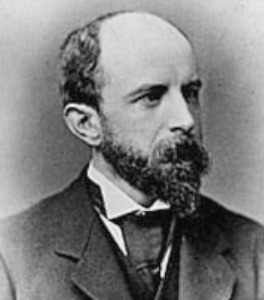
Henry Adams Pennsylvania became the ideal state, easy, tolerant and contented. If its soil bred little genius, it bred less treason. ... To politics, the Pennsylvanians did not take kindly. Perhaps their democracy was so deep an instinct that they knew not what do to with political power when they gained it; as though political power was aristocratic in its nature, and democratic power a contradiction in terms.
--Henry Adams
The reproach I address to the principles of equality is that it leads men to a kind of virtuous materialism, which would not corrupt, but would enervate the soul, and noiselessly unbend its springs of action.
--Alexis de Tocqueville
In our egalitarian age of mistrust, trustworthy men of great ability are increasingly refusing to run for public office or to serve in positions of authority and leadership in our society...In the rest of this book, I shall try to show how and why the Quaker city of Philadelphia, in contrast to Puritan Boston, has suffered from that virus of virtuous materialism for almost three centuries and how its best men, on the whole, have seldom sought public office or positions of societal authority and leadership outside business.
--E. Digby Baltzell
REFERENCES
| Puritan Boston and Quaker Philadelphia: E. Digby Baltzell. ISBN-13: 978-1560008309 | Amazon |
TOAST TO E. DIGBY BALTZELL (1915-1996)
A TOAST TO E. DIGBY BALTZELL (1915-1996)
The Franklin Inn Club, Philadelphia
Annual Dinner, 15 January 2010
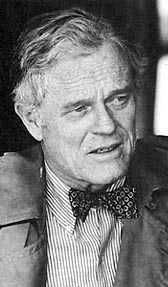
|
| E. Digby Baltzell |
I am grateful that our President, Deborah Goldstein, and the Board have given me this opportunity to make precedent -- tonight to strengthen the tradition of the Franklin Inn Club by raising a new toast, following our 18th century icon, Benjamin Franklin, and the 19th century men who founded the Inn, with a 20th century member. We are, after all well into the 21st century. It is my original privilege to honor a member and author who contributed strongly to American social thinking: E. Digby Baltzell.
Digby and WASPS Let me right away make two statements about Digby and WASPS. His name is associated with that acronym because it appeared in his book of 1964, THE PROTESTANT ESTABLISHMENT; ARISTOCRACY AND CASTE IN AMERICA. But contrary to a popular misconception, Digby did not invent the term WASP. I know, because a Jewish girlfriend from New York City used that term on me critically ("That's what we call people like you") in 1952. And there is good evidence that the term was in use as a put-down, like other American ethnoreligious slurs, two decades before Digby gave his term for White Anglo-Saxon Protestants scholarly standing in his book.
Secondly: however dear his idea was to him, Baltzell gave up on WASP aristocracy before his death. His subtitle had contained his aim: "Aristocracy and Caste in America." He was inspired by Tocqueville's attempt to save the French aristocracy from its own destruction by writing "Democracy in America" during the presidency of Andrew Jackson. Baltzell was concerned about his own aristocratic class. These were prep school and Ivy League educated people with family lineage, trust funds, and above all, what might be called Rooseveltian motivation. Either TR, Republican, or FDR, Democrat, party did not matter. Both Roosevelts had the aristocratic drive to excel: not only to lead but to assimilate other talents into leadership. That was the key to the matter: for a responsible aristocracy perpetuates itself by absorbing into ruling power new immigrant energy and multi-class talents, such as, in the 1930s, Fiorello LaGuardia, mayor of New York City, and Sidney Weinberg of Goldman Sachs.
An aristocracy is irresponsible, however, when it merely replicates its own ethnic and religious features. By protecting itself with clubbishness it ceases to be an aristocracy and rigidifies into a caste. Baltzell, 1964, feared that WASPS in the USA would let that happen, and wrote in the strong hope that they would not. But it was already happening. Looking back, we can see that the game was almost over.
Digby and Me Who was Digby Baltzell? He was born in Rittenhouse Square and grew up in Chestnut Hill to what he called an "impecuniously genteel" family. They sent him off to St. Paul's School in New Hampshire, an exclusive Episcopalian* boarding school formed in an English tradition. In his senior year, his alcoholic father was fired from his insurance company, and soon after died of a heart attack. For college, Digby could not afford Harvard, Yale, or Princeton, where all his classmates went but settled for the University of Pennsylvania. There he got himself through on scholarship, with various jobs such as ticket-taker, usher, and parking lot attendant at Franklin Field. He went on to get a Ph.D. at Columbia and came back to Penn, where he taught for the rest of his employed career.
I never met Digby personally because he died in 1996, the year that I joined the Inn. Yet I identify with the man I just described in some distinct ways. My own alcoholic father, a mellow, dear, and vulnerable man, lost his job as a stockbroker while I was in college. There, at Williams, I was a member of the same hard-drinking fraternity, St. Anthony Hall, as Baltzell had been at Penn. I'm not Episcopalian, but being a Scotch-Irish Presbyterian makes me categorically WASP. I feel like Digby did, that I have been a marginal member of the elite. I became an academic to try to figure out what the hell was going on around me. I have, like him, "an insider's heart and an outsider's mind." That has qualified me not to make a fortune, but to write books.
Digby and Us We all live in a time of social phenomena Digby never reckoned with -- of Bill Clinton as a white trash national leader; of John Kerry, a Catholic agnostic from St. Paul's School who lost the election of 2004 to G.W. Bush, a retrograde pseudo-Texan who had renounced his father's waspismo. Personalities that Baltzell might barely have imagined: Oprah Winfrey, a multicultural pop icon who is incidentally black; and the Afro-Saxon lawyer-intellectual whom we have chosen President of the United States, Barack Obama.
Baltzell finally gave up the attempt to invigorate his idea of a responsible ethnoreligious elite. He realized, and said, "what the Jews have done since World War II is the great untold story." And when he died he was preparing to undertake a book on the end of the Protestant establishment. He recognized that it had been replaced by a meritocracy based on professional performance, which, I think, is far more congruent to American social dynamics. I conclude that Baltzell's last and never completed project was an admission that his three books on the WASP establishment were a failed effort to firm up a transient power structure. I believe that Baltzell had been trying to implant in America a British notion of ruling class flavored with Tocquevillean nostalgia for a lost French aristocracy. Our nation has wholly different components from those, and he was bound to fail. Even as he struggled to make the point, he acknowledged the multi-cultural society around him, while expressing a vivid fear that multi-culturalism enshrined meant moral relativism, which would, in turn, mean an unworkable political system. On that last, he may yet prove correct. And he was surely astute in recognizing the importance in America of a professional meritocracy. If any of us, nonetheless, still yearns for an aristocracy of some kind, I would recommend Jefferson's idea of "a natural aristocracy based on talent and virtue."
Digby, although a connoisseur of clubs noted in the Social Register, never joined one, although often invited to do so. He criticized, among others, the Duquesne Club in Pittsburgh, the Links Club in New York, and the Philadelphia Club here for their obtuse and pointless exclusiveness.** But he chose to be a member of The Franklin Inn Club, and in his later years often came from home on Delancey Street to lunch among members. Our cultural, artistic, and literary atmosphere, we may dare feel, was comfortable for him. What he found here was perhaps an aristocracy without power, but a natural one in its components of talent and virtue. Sisters and brothers: let us toast Digby Baltzell -- an exemplar of our values, and an inspiration to us in the Twenty-First Century.
Theodore Friend
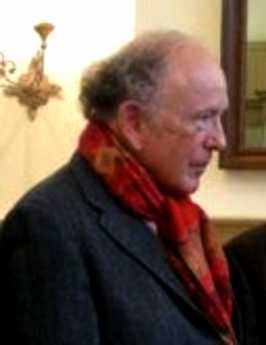
|
| Theodore Friend Sr. |
*To the rumor that Baltzell became a Roman Catholic before he died, a close living relative says no: he very much respected the Catholic Church, was interested in healing the breach with Episcopalians and may have attended some Catholic services. But nothing more.
**A Jewish friend, responding to my inquiries, tells me that he was admitted to The Union League in 1967, and about twenty years later became chair of the Admissions Committee. What percentage of members now are Jewish? He estimates five percent.
Sources:
Baltzell, THE PROTESTANT ESTABLISHMENT: ARISTOCRACY AND CASTE IN AMERICA , (1964)
PURITAN BOSTON AND QUAKER PHILADELPHIA, (1979)
THE PROTESTANT ESTABLISHMENT REVISITED, (1991)
Brief conversations with members of the Franklin Inn:
Daniel Hoffman, Nathan Sivin, and Arthur Solmssen.
William Penn, Excellent Lawyer, Terrible Businessman
Richard Dunn, who with his wife Mary Maples Dunn stand as the two core authorities on the life of William Penn, merely smiles when asked to describe what Penn was really all about. "What we need is to have one good biography emerge," said he, "but it isn't easy to guess what it will say". For the present, let's just sketch a few paradoxes which somehow need threading together.
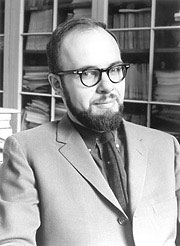
|
| Richard Dunn |
In the first place, the wealth of William Penn can only be described as prodigious. His father had played a central role in restoring the Stuart monarchs, and in the course of it had conquered for the Crown the enormously valuable property of the Island of Jamaica. For these efforts, the father had been rewarded with extensive properties in Ireland and a highly influential position at Court. To all of this was overgenerously added as debt repayment, the American territories which have now become the states of Delaware, New Jersey, and Pennsylvania. Actual ownership of some of this was shared with others, but all of it was quite effectively controlled by young William. No one else stands even close as the largest private landholder in American history. But to appreciate the immensity of his wealth, it should be understood that he treated this property as a sort of hobby. Over the course of his lifetime, the colonies lost money, and Penn subsidized them rather seriously from his other assets.
At the same time, Penn lived vastly beyond his income in ordinary ways, becoming heavily indebted, eventually going to debtor's prison. It probably was not necessary; his sons renounced Quakerism and made a profit on the colonies after they inherited them. Although he could display remarkable organizational talent, particularly in the organization of New Jersey, his management was mostly slack, his judgment of agents often proved too trusting, and he permitted himself to be exploited by poorly-designed contracts to his eventual financial ruin. Even that might not have been serious; he displayed a towering legal mind in the devising of the doctrine of jury nullification and was the winner in a great many lawsuits. He even demonstrated he was capable of winning dubious lawsuits, soundly defeating Lord Baltimore in a border dispute over Maryland which others have said showed Baltimore had the stronger case. We know he had influence at Court, and such legal victories suggest he might on occasion have taken full advantage of it.
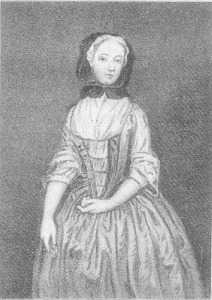
|
| Gulielma Maria Springett Penn |
From the sound of things, some have concluded Penn was so rich and powerful he grew careless about his own best interests, which essentially needed very little defense. In particular, he gave this impression to his fellow Quakers, who concluded he did not need nor likely would stoop to collecting what he was owed in taxes and property sales. This cavalier attitude encouraged the early Quaker merchants to follow their own advantage without shame, and as it happened with great vigor. The Constitutions he devised for the colonies are frequently cited as the brilliant cornerstones of fairness and stability, ultimately the models for much of our present Constitution. Penn really was sincere in wanting to provide a better life for the working people than they could have at home in England. But in the Seventeenth Century, the modest role he devised for the Proprietor commanded little respect and was not one his aggressive clients would have chosen for themselves in his position. Perhaps the most generous description of their passive aggression would be that he taught power and governance to be the collective possession of the whole Quaker meeting, so the leaders of the meeting simply took him at his word. For their part, there can be little doubt of their commercial talents; trade and industry immediately thrived in the colony. However, sharp, aggressive trade and commerce were not things a gentleman would himself want to associate with.
Unfortunately, the historical records of the early colonies are not good; for the most part, we have to surmise the struggles and frictions between a rich, financially careless, and sincerely earnest theologian in his contention with a group of poorly educated strivers who had been told he regarded each of them to be his equal. As the saying goes, he was rich beyond denying. And therefore, he was probably arrogant beyond his own ability to see it as a flaw.
Equal before the law, perhaps, and equal in the prayers of First-day Meeting. But everything about his upbringing, his social circle in London, and his staggering wealth suggested that even a saint would have trouble believing, deep in his heart, that these were truly his equals. And even if perchance he did believe it, they would not have believed it for a moment, had their positions been reversed. Penn certainly acted as though he believed in religious freedom, serene in the idea that if every person earnestly thought hard about ethical issues, everyone would eventually reach about the same conclusion. The elders of the meeting, however, behaved in ways which suggested they would personally prefer non-Quakers to settle somewhere else, and given half a chance would create Quakerism as an established church. There seemed to be those who felt that Friend William was perhaps a little too trusting. And anyway there were some obvious paradoxes. William Penn kept personal slaves.
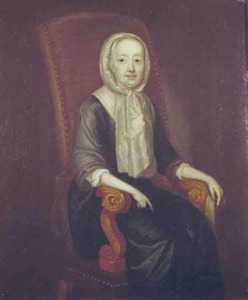
|
| Hannah Callowhill Penn |
With two wives, William Penn had thirteen children. Among them was considerable diversity of opinion, along with the same tendency to rebellion found in any two generations. Early illnesses and chance led to the emergence of those children who renounced Quakerism and showed no shame at all about wanting to have money in order to spend it recklessly. One would have supposed that a man of Penn's intellectual stature would have been able to control his family better, but his own reckless youth had been so extreme that he had few arguments available when, as seems virtually certain, rebellious children defended themselves by reminding him of his own indiscretions. William Penn displayed absolutely no sense of humor; a touch of it would have been useful in mastering a family and friends who were undoubtedly having a little trouble knowing what to make of this apparition in their midst. Some equally pompous Pennsylvania merchants might have had difficulty denying that in their passive aggression, they occasionally resembled the spoiled brats with whom he found he had ample family association.
REFERENCES
| Remember William Penn, 1644-1944: A Tercentenary Memorial : Edward Martin: ISBN-13: 978-1258369934 | Amazon |
Quaker Doctrine and Schism
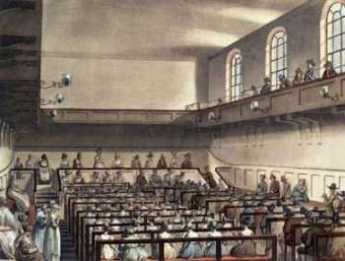
|
| Society of Friends |
The Society of Friends had never promulgated articles of religion to be subscribed, or a catechism to be taught." In this curious manner, a lack of doctrine has become the doctrine. Still more unexpectedly, a religion dedicated to peace and non-violence has mostly defined itself by resisting some proposals so violently that schism was the result. The central propositions can now be best deduced by observing the reasons why dissenters departed the Society, or why agitators were invited to depart. It can be questioned whether the early Quakers who shaped the Society really intended for non-members to define it. And so, eligibility for membership became the place where the doctrine was found, formed and enforced.
In 1691 the first serious rebellion from non-doctrine came from George Keith, who may well have had exactly this issue in mind. Aside from Thomas Lloyd the Deputy-Governor, Keith was the most learned and educated man in the colony, with a large following of admirers. It seems unfair to accuse Lloyd of jealousy, but he was probably Keith's only intellectual equal at the time, and was burdened with the responsibility of governing the colony with full respect for the interests of the then-absent proprietor, William Penn. When Keith raised the concern that unwritten Quaker principles could not be confidently explained or disputed, Lloyd remained silent for a time. However, when antagonism to what Keith was saying reached the point of prosecution and expulsion from the Society of Friends, Lloyd must certainly have been in the background. Keith eventually became an Anglican priest, taking a number of Quakers with him. It must be said on behalf of George Keith that he made the first written protest against negro slavery, sixty years earlier than the more famous actions of the Germantown meeting. His eventual spiritual direction is surely evidence that he longed for closer adherence to Biblical Christian teachings or even rituals. Lloyd, on the other hand, is thought to trace descent from the early Princes of Wales, and could well have over-reacted to ideas which might destabilize power.
Keith may have been more persuasive than he seemed, however. By 1827 the pendulum appears to have swung against excessive thee-and-thou doctrine, however unwritten it may have been. Having experienced one schism from those who wanted more doctrine,
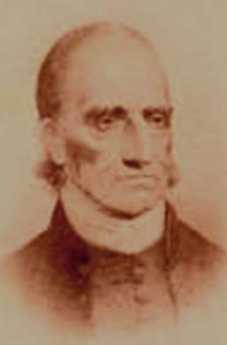
|
| Elias Hicks |
Elias Hicks then split the Society with a return to mysticism, seeking less rigidity and doctrine where Keith had once demanded more of it. After the 1827 separation, Quakers were to remain divided into two religions, the Hicksite and the Orthodox, for a century until Rufus Jones led the two factions to reunite. The banners they waved were "the inner Christ" and the "outward Christ" and for some, the central issue was Biblical doctrine and ritual. For others, it was a matter of balance between obedience and individualism. At present, the Quaker doctrine remains unwritten, although a book called "Faith and Practice" explains what has been customary. Quakers are now a long way from wearing black hats and "plain" speech, and in fact, do come fairly close to what Hicks was striving for. In many ways, the doctrine of "the light within" is held to be sufficient to define the mystical core of Quaker belief, from which everything else may be derived, particularly when it is linked to another central belief, that "there is That of God, in every man." William Penn's famous tolerance of religious freedom, for example, can be viewed as a comfortable belief that if serious people of all religions examine the issues deeply, it can be expected they will all eventually reach about the same conclusions.
The simple formula of "not enough ritual" versus "too much ritual" arriving at its present state of "just enough ritual" must be qualified by two other schisms, however.
When the Revolutionary War came to Pennsylvania, a certain group of Quakers exemplified by Betsy Ross, Timothy Matlack and Nathaniel Greene but led by Samuel Wetherill, wanted to fight for Liberty enough to split off their own church, The Free Quakers.
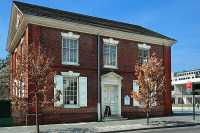
|
| The Free Quakers. |
Although the surface issue was opposition to the war for any reason, in 1781 the Revolutionary War was mostly over, at least in the northern colonies. Several prominent Free Quakers had been read out of the meeting before the Revolution for reasons unrelated to it, and many other joiners to the Free Quakers had apparently not previously been practicing Quakers at all. The larger underlying political upheaval was the Quaker withdrawal from government twenty years earlier. This too was explained as a refusal to fight wars for any reason, but it can also be seen as the dilemma of all religious states, who cannot fairly govern a non-believing minority without either persecuting them or allowing them to usurp. Buying the land from underneath the Indians was one thing; living peacefully alongside the unruly Scotch-Irish of Western Pennsylvania proved to be quite another. The splitting off of a separate sect of Quakers with a different doctrine must be seen in the context of an even larger migration out of Quakerism entirely, into the Anglican, later Episcopal, church, which was favored by the wealthier segment of colonial Quakers, encouraged by some doctrinal adjustments by Bishop White. Even that synopsis fails to capture what was happening. In 1705 the Pennsylvania Assembly, composed entirely of Quakers, signed a petition to King William III ("William of Orange") which had the effect of a bargained compromise: in return for permitting affirmations instead of oaths, the King agreed to extend liberty of conscience under the English Act of Toleration of 1696 to those who subscribed to what would today be called the Apostles Creed. Through the hazy lens of intervening history, it is difficult to see why this was a useful compromise, except for what is implicit. As long as Pennsylvania was firmly Tory, the English king would do any necessary fighting on the frontier, and the pacifist Quakers could continue to control the government. Seventy years later, in 1776, that no longer seemed a workable arrangement, and in fact, the Quakers had withdrawn from the government in 1756.
After the upheavals of adjusting to a new system of government, the nation settled down to enjoy what was the main reward of Independence: vast stretches of unoccupied fertile land to the West. A selectively agrarian segment of Quaker society migrated to Ohio, Indiana, and Iowa. These scattered pioneers did not have Penn, Lloyd, and Logan to guide them, and felt a much greater need for pastoral guidance. In time, mid-western and western Quakers evolved into formal churches with ministers, and colleges to teach the ministers, while the eastern seaboard Quakers remained seated in silent worship, without ministers or music, in "unprogrammed meetings". And so, back to where we started, searching for the proper balance between mysticism and ritual. But primarily among those Quakers who remained unmoved, spiritually and physically, by the fragmentation of what had once essentially been an established religion.
The No-Doctrine Doctrine
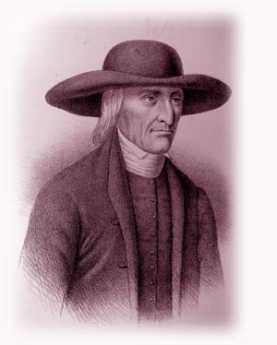
|
| quaker |
Although Quakers have long been famous for good relations with the Indians, both groups strongly prizing simplicity and keeping your word, few Indians converted to Quakerism. Indians would attend the silent meetings and listen respectfully, but in the end, Christian converts were far more likely to convert to the Moravian Church. To resist defining your common beliefs creates automatically a problem for explaining what you believe. It becomes acceptable to believe a wide range of things, but it is also acceptable to believe very little. Not surprisingly, the two great religious schisms of the Quakers have broken their unity on just this point.
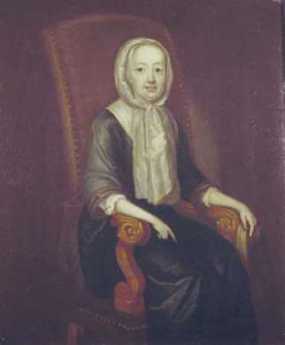
|
| A History |
The first great Quaker schism was created by one George Keith (1638-1716), who was born a Presbyterian and died an ordained Episcopalian. For several decades, however, Keith was one of the foremost leaders of the Pennsylvania Quakers, partly as a result of being just about the best-educated man of the Colony. His leadership, however, led him to crave a more defined set of Quaker doctrines, and when he carried this idea too vigorously, he eventually encountered implacable opposition which in time caused him and his considerable number of followers to be expelled from the Society of Friends. (George Keith should not be confused with Sir William Keith, whom Hannah Penn appointed as governor of Pennsylvania in 1717.)

|
| Elias Hicks |
The first great schism was thus about whether there might be too little defined doctrine in Quakerism. The second great schism, by contrast, grew out of the feeling there was too much doctrine. Led by Elias Hicks in 1830, the Hick sites split off from mainstream Quakerism in a quest for more simplicity, less religiosity, more silent contemplation of the Inner Light. In a sense, the outward show of protest in the black hats, plain dress, the plain speech had provoked a reaction that these things were no longer simple, they were ostentatious. Too many people were being "eldered", too many people were being "read out of the meeting" for violating doctrinal rules.
Curiously, both rebels were cast out, but over each following century the church as a whole gradually adopted what was largely their view of things. After Keith, Quakerism became more rigid and formalized. After Hicks, it became more mystical and free-thinking.
By insisting that in spite of turmoil it caused no doctrine was to be defined, Quakers have edged into the negative position of defining what they are not. Unlike the early sects of Christianity, Quakers have discarded the hope of miraculous divine intervention as a reason to behave in a Friendly Christian way. No one is apparently going to revive your bones from the tomb, feed your multitudes with forty loaves, or descend from Heaven and drive your enemies into the sea. Neither a later reward in Heaven nor a forthcoming everlasting punishment in Hell can be regarded as either very likely or much of an incentive to good behavior. Other religions may believe these things and might even turn out to be right, but Quakers feel the unembellished Golden Rule is a sufficiently understandable motive for conduct.
And gentle indirection is often a better way to persuade others than thundering oratory. The story is told of a visitor who found himself in a Quaker gathering and made polite conversation by asking what the Quaker position was on the Trinity. A sweet old gentleman is said to have smiled and said, "We believe in the following Trinity: The brotherhood of man, the fatherhood of God -- and the neighborhood of Philadelphia."
Free Quaker Meetinghouse
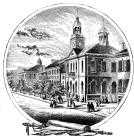
|
| Independence Hall |
Until this year, there was a Beautiful Mall stretching north from the State House (Independence Hall) to the approaches of the Benjamin Franklin Bridge. Concealing an enormous parking garage underneath it, the surface looked like a several-block lawn lined with flowering trees in the spring, framing the beautiful Eighteenth Century building (just as the mall in Washington leads up to the Washington Monument.)
Stretching from Independence Hall east to the Delaware River is another mall filled with historical buildings like Carpenters Hall , the First Bank(Girard's) and Second Bank (Biddle's), the Old and the New Custom houses, the American Philosophical Society, and others. The eastern mall was the property of the State of Pennsylvania when it was created, but it soon seemed more economical to the frugal rural legislature to turn it over to the federally funded National Park Service, joining the mall stretching northward. Well, somebody got another ton of federal money appropriated, and now we are filling the north mall with buildings which largely hide Independence Hall from the passersby. With just a few more Congressional earmarks, the imposing beauty of the mall will be submerged, but it hasn't quite reached that point yet. There is a perfectly enormous New Visitors Center, containing a couple of auditoriums and a big bookstore. Mostly the concept seems to be to provide a place to get out of the rain if you are an out of town visitor, provide public bathrooms, and a place to get a hot dog. At least the visitors center is red brick, and arched, with white woodwork. At the far northern end is an overwhelming stark granite block of a building, which will open July 4, 2003. It is a Constitution Center, claimed to be an interactive museum, and we shall see what we shall see. The looming monolith overwhelms and blocks the view to Independence Hall, and it better be good, when the insides get finished.
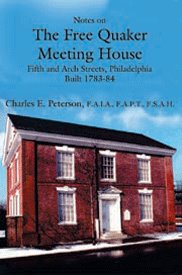
|
| Free Quaker Meeting |
If Independence Hall, which after all is a block long, is overwhelmed by the new constructions, the Free Quaker Meeting is totally hidden. This perfectly charming Eighteenths Century Quaker meetinghouse is just across Fifth Street from Benjamin Franklin's Grave, and just across Arch Street from the Constitution thing, completely in its shadow. Charles E. Peterson designed the restoration of the building, which had been added to and detracted from, over the years, but you can be sure its interior is now both beautiful and authentic. Before you go in, notice the inscription on the plaque under the northern eaves:
By General Subscription for the FREE QUAKERS. Erected in the Year of OUR LORD 1783 and of the EMPIRE 8.
The Quakers who built this building seem to have thought they were part of a new empire, but that implies an emperor, and of course, one was never created. Three years after the dedication of this building the Constitutional Convention met in the same Independence Hall, and our national form of government was somewhat strengthened from the Articles of Confederation also written here. Benjamin Franklin had a hand in both documents, but the first one was mainly composed by John Dickinson, and the second one by James Madison. If you go into the Free Quaker building, it seems to be a single large room with an interior balcony, and a couple of small staircases in the back leading down to what would presumably be restrooms. As a matter of fact, the Park Service extended the basement to include kitchen and dining room, and several offices for themselves which are a surprise if you are allowed to go down to see them.
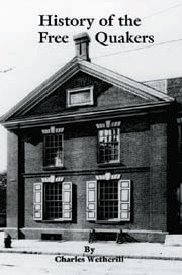
|
| History of Free Quakers |
Charlie Peterson wrote a book about the restoration, but the main book about the spiritual history of this group was written by Charles Wetherill. Quakers, as everyone ought to know, are pacifists. The American Revolution put a number of them in a quandary because they agreed that Great Britain was injuring their rights by denying them a representative in the Parliament which ruled them but resorting to violence was another matter entirely. Eventually, a group did break away from the main Quaker church to fight for independence. They were prompt "readout of the meeting", the equivalent of being excommunicated, not allowed to worship in the regular meeting houses they had helped finance or to be buried in the church graveyards. Samuel Wetherill was one of the leaders of this group, just as his descendants are the most active today in the surviving historical society. Samuel created quite a furor, demanding to use the Orthodox meeting house and burial grounds. He was, in his own view, just as much a Quaker as the others since no doctrine is absolutely fixed in that religion, and was freely entitled to speak his mind to persuade others of the rightness of his sincere positions. The main body of Quakers would have none of it, and the Free Quakers were firmly expelled, forced to hold a public subscription and build their own meeting house. Wetherill of course personally knew every one of the members who expelled him, and there may be some truth to his loud, pointed and unchallenged contention that the true division was not between pacifists and fighters, but between Tories and advocates of Independence. Whatever the truth of these accusations, it does seem in retrospect that the split was fairly divided between wealthy established merchants, and small shopkeepers and artisans. Quite a few now-famous names appear on the rolls of the Free Quakers, like Timothy Matlack the actual Scribe of the Declaration of Independence document, Biddles, Lippincott, John Bartram,Crispins, Kembles, Trippes, and Wetherills. When the meeting had dwindled down in 1830 to two lone parishioners, one was a Wetherill, and the other was Betsy Ross, herself.
A comment is submitted by a reader:
I think your description of the Free Quakers oversimplifies their origins. It is true that Samuel Wetherill was disowned by Friends for his military activities. However, other Free Quaker leaders were bounced -- often years before the Revolution -- for other reasons. Timothy Matlack, for not paying his debts. Betsy Ross, for an improper marriage. Christopher Marshall, for counterfeiting. I haven't traced everyone listed as a member in the (1907?) Stackhouse history of the Free Quakers. But I did search in Quaker records for perhaps a dozen and found no records that people with those names had ever been Quakers. I think it would be more accurate to say of the Free Quakers that the Revolution drew together people of many different types and that when some of those people had things in common -- such as Quaker background -- they united around those things. (Posted by Mark E. Dixon )
Slavery: If This be done well, What is done evil?
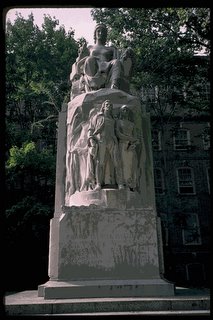
|
| Francis Daniel Pastorius |
The Declaration of the German Friends of Germantown, Against Slavery, in 1688.
These are the reasons why we are against the traffic of men's body, as followeth:
Is there any that would be done or handled in this manner? viz.: to be sold or made a slave for all the time of his life? How fearful and faint-hearted are many at sea, when they see a stranger vessel, being afraid it should be a Turk, and they should be taken, and sold for slaves in Turkey. Now, what is this better done, than Turks do? Yea, rather it is worse for them, which say they are Christians; for we hear that the most part of such negers is brought hither against their will and consent and that many of them are stolen. Now though they are black, we cannot conceive there is more liberty to have them, slaves, as [than] it is to have other white ones. There is a saying , that we shall do to all men like as we will be done [to] ourselves; making no difference of what generation, descent, or color they are. And those who steal or rob men, and those who purchase them, are they not all alike? Here is liberty of conscience, which is right and reasonable; here ought to be likewise liberty of the body, except evil-doers, which is another case. But to bring men hither, or to rob, [steal] and sell them against their will, we stand against. In Europe, there are many oppressed for conscience sake; and here there are those oppressed which are of black color. And we who know others, separating wives from their husbands, and giving them to others: and some sell the children of these poor creatures to other men. Ah! do consider well this thing, you who do it, if you would be done in this manner--and if it is done according to Christianity! You surpass Holland and Germany in this thing. This makes an ill report in all those countries of Europe when they hear of [it,] that the Quakers do here handler men as they handle there the cattle. And for that reason, some have no mind or inclination to come hither. And who shall maintain this your cause, or plead for it? Truly, we cannot do so, except you shall inform us better hereof, viz,: That Christians have liberty to practice these things, Pray, what thing in the world can be done worse, towards us, than if men should rob or steal us away, and sell us for slaves to strange countries; separating husbands from their wives and children. Being now this is not done in the manner we would be done at, [by]; therefore, we contradict [oppose], and are against this traffic of men's body. And we who profess that it is not lawful to steal, must, likewise, avoid purchasing such things as are stolen, but rather help to stop this robbing and stealing, if possible. And such men ought to be delivered out of the hands of the robbers, and set free as in Europe. Then is Pennsylvania to have a good report, instead, it hath now a bad one, for this sake, in other countries. Especially whereas the Europeans are desirous to know in what manner the Quakers do rule in their province; and most of them do look upon us with an envious eye. But if this is done well, what shall we say is done evil?
If once these slaves ( which they say are so wicked and stubborn men,) should join themselves--fight for their freedom, and handle their masters and mistresses, as they did handle them before; will these masters and mistresses take the sword at hand and war against these poor slaves, like, as we are able to believe, some will not refuse to do? Or, have these poor negers not as much right to fight for their freedom, as you have to keep them slaves?
Now consider well this thing, if it is good or bad. And in case you find it to be good to handle these blacks in that manner, we desire and require you hereby lovingly, that may inform us herein, which at this time never was done, viz., that Christians have such a liberty to do so. To this end, we shall be satisfied on this point, and satisfy likewise our good friends and acquaintances in our native country, to whom it is a terror, or fearful thing, that men should be handled so in Pennsylvania.
This is from our meeting at Germantown, held ye 18th of the 2nd month, 1668, to be delivered to the monthly meeting at Richard Worrell's.
Garret Henderich
Derick op de Graeff
Francis Daniel Pastorius
Abram op de Graeff.***
At our Monthly meeting, at Dublin, ye 30th 2d mo., 1688, we have inspected ye matter, above mentioned, and considered of it, we find it so weighty that we think it not expedient for us to meddle with it here, but do rather commit it to ye consideration of ye quarterly meeting; ye tenor of it is related to ye truth.On behalf of ye monthly meeting,
Jo. Hart.
***
This above mentioned was read in our quarterly meeting, at Philadelphia, the 4th of ye 4th mo., '88, and was from thence recommended to the yearly meeting, and the above said Derick, and the other two mentioned therein, to present the same to ye above said meetings, it is a thing of too great a weight for this meeting to determine.Signed by order of ye meeting.
Anthony Morris
AFSC: American Friends Service Committee
Two things uniquely characterize the work of the Friends Service Committee (AFSC): it's often both dangerous and unpopular. That's not required for relief following Indonesian tidal waves perhaps, but the work that really needs someone to do is often both dangerous and controversial.
The Service Committee was founded in 1917, mostly by Rufus Jones and Henry Cadbury, as a way of helping conscientious objectors to World War I. The Mennonites, the Brethren, and the Quakers were opposed to all wars, not just that particular one, but two of those religions are of German ancestry, and lacked the same credibility of the English-origin Quakers in a war with English allies against the Huns, Boche, and Kaiser enemies. The early focus of the Committee was on the Field Service, or Ambulance Corps; which was plenty close to the action, and plenty dangerous. After the War, the defeated German population was starving, and the Quaker Herbert Hoover directed the relief effort with great credit to the Quaker name, and immense European gratitude.
After that, when German Jews were suffering persecution by the Hitler administration, the Quakers initially responded in a uniquely Quaker way. Rufus Jones and two other Quakers went to see Reinhard Heydrich, to tell him the world disapproved of his behavior. They fully realized they represented a pool of important world opinion, particularly within Germany, and it was time to speak truth to Power. The Germans left the room to confer, and the three Quakers bowed their heads in silent prayer. Apparently, the room was tape recorded, and when the German officials returned, they did promise some efforts to improve matters. As the situation for the Jews soon got much worse, many Quakers risked a great deal to shelter and rescue the persecuted exiles. Relief to the defeated German populace had to be repeated after that war, as well. Each effort built up more credibility to be able to switch sides for the next effort, and the sincerity has seldom been seriously questioned.
The Japanese were also our hated enemies in World War II, and once more a long history helped the relief effort. Nearly 100,000 American citizens of Japanese origin were interned on the West Coast as potential traitors in 1941, often under deplorable conditions. Clarence Pickett was a director of AFSC at the time, and his sister had spent years in Japan as a missionary, so his remonstrations with the American government were prompt and credible. One of the more active workers was Esther Rhoads, sister of the famous surgeon, who had spent time in Japan earlier. One of the ingenious efforts with the Nisei was to assist 4,000 of them to get into college and find them hostels and jobs while they were away at school. Many of these college students later became prominent in various ways, greatly assisting the post-war reconciliation between the two countries.
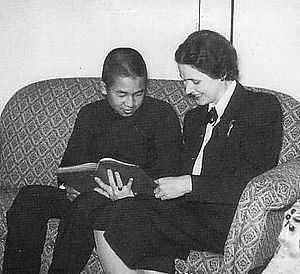
|
| Prince Akihito and Elizabeth Gray Vining |
Two Quaker ladies at the AFSC made a totally unique contribution when a request was received to provide a suitable tutor for the Crown Prince, now Emperor. He didn't convert to Christianity, but he later married a Christian, and you can be sure he got a plenty good dose of Quaker style and belief from Elizabeth Gray Vining. This tall, strikingly handsome Philadelphia woman had Bryn Mawr written all over her and turned heads whenever she entered a room. When she went back home, she was followed as a tutor for seven years by, guess who, Esther Rhoads who by then was the director of the Tokyo girls school. It remains to be seen, of course, what the final outcome of this deeply emotional situation will prove to have been. At the moment, the main sufferer seems to be the immensely talented American-educated woman who married the Emperor. But we will see; these are all powerful women in a very quiet way, unaccustomed to losing. One wishes the royal family all the best in their sometimes difficult position.
And then the Service Committee did its work in Vietnam, in Iraq, in Zimbabwe, and Somalia on the unpopular side, in every case. There are stories of venturing into war zones with hundred-dollar bills scotch-taped to their torso, where every fifty feet there was someone who would cut your throat for a dime. One worker in Laos entertained a group of us tourists with tales of living for weeks with nothing to eat but grasshoppers and cockroaches. Dangerous, unpopular, and uncomfortable. It sounds like a wonderful outlet for someone who is a perpetual rebel without a cause, but if you can find one of those at the Service Committee, you must have done a lot of looking.
The Service Committee, like the Quaker school system, is mostly run by non-Quaker staff. That means that neither of them exactly speaks for the religion itself. This little religious group of 12,000 members is stretched thin to provide a vastly greater world influence than its numbers imply. Hidden in the secrets of the group is an enduring ability to attract sincere non-member adherents to their work. And a quiet watchfulness to avoid losing control to any wandering rebels without a cause.
REFERENCES
| Window for the Crown Prince: Akihito of Japan, Elizabeth Gray Vining ISBN-13: 978-0804816045 | Amazon |
George Willoughby, 95, Peace Activist
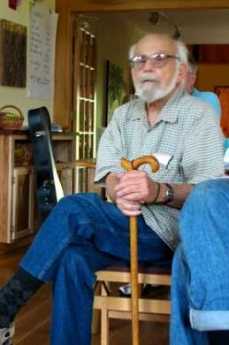
|
| George Willoughby |
Age was nothing but a number for 95-year-old peace activist George Willoughby of Deptford. His worldwide antiwar protests and nonviolent teachings started when he was in his mid-40s and continued until just weeks ago.
Mr. Willoughby was planning a six-week trip this month to India to meet friends he had made during visits to the birthplace of his idol, Mohandas K. Gandhi, and probably to give some of his trademark peace talks.
But Mr. Willoughby died at home of heart failure Jan. 5, a month short of the journey.
A Quaker who led local protests and famous treks from San Francisco to Moscow and from New Delhi to Beijing, Mr. Willoughby recruited many advocates for nonviolent conflict resolution, said a friend and member of the Central Philadelphia Meeting, Nicole Hackel.
"Once you experienced him, you didn't forget him," Hackel said, adding that she became a Quaker in the 1970s because of Mr. Willoughby's influence. "George would engage in conversation with anyone, even a 5-year-old who was attending a meeting for the first time."
Mr. Willoughby became a household name for area Quakers after he became director of the Central Committee of Conscientious Objectors in Philadelphia in 1954. He soon was a frequent presence in the news, mostly under headlines with the words peace, marchers, and protest.
In 1958, Mr. Willoughby was one of five crewmen on the sailboat Golden Rule who received 60-day jail sentences in Honolulu for trying to sail to the area of the Pacific Ocean where the U.S. government was testing nuclear bombs in the atmosphere.
That was Mr. Willoughby's first of many incarcerations, said his son, Alan.
"The Society of Friends in Honolulu brought him a lot of decent food. . . . He always spoke highly" of the Hawaii jail experience, his son said with a slight laugh.
Two years later, Mr. Willoughby organized a dual-continent march to protest nuclear testing. Protesters in groups of about a dozen each covered six countries in 10 months between the United States and the Soviet Union.
Mr. Willoughby joined the group in Poland. Soviet officials stopped them 100 yards short of the Lenin-Stalin tomb in Moscow's main square, according to reports at the time. Instead of delivering speeches, the group was forced to stand in the square in a silent vigil.
In 1963, Mr. Willoughby embarked with about a dozen others on what he intended to be his longest hike - 4,000 miles from New Delhi to Beijing to promote peace between India and China.
Before his journey, a Philadelphia Evening Bulletin reporter asked whether there was a better way than marching to bring about peace.
Mr. Willoughby responded: "Most people of these countries walk; we can reach them. Even if it does no good at all, it is worth it. It's an idea I believe in, and if it produces fruit, so much the better."
After eight months of walking, Mr. Willoughby and company were stopped at the India-China border and barred from crossing into China.
In the next three decades, Mr. Willoughby's projects included the formation of A Quaker Action Group, which opposed the Vietnam War, in 1966; the Life Center Community in West Philadelphia, a training and campaign center for nonviolence, in 1971; and Peace Brigades International, a human-rights group, in 1981.
One of his most memorable contributions to South Jersey, family and friends said, was the creation of the Old Pine Farm Natural Lands Trust, 45 acres of natural conservancy in Deptford.
In his later years, Mr. Willoughby received honors around the world for his peace work, such as the Jamnalal Bajaj Foundation award in 2002 in Mumbai, India, which recognizes those who promote Gandhi's ideas and values.
Born in Cheyenne, Wyo., Mr. Willoughby spent much of his childhood in the Panama Canal Zone, where his father worked in construction.
Mr. Willoughby was part of his high school's JROTC program, but, according to friend and biographer Gregory Barnes, he quickly realized the military was not for him.
A family rift led Mr. Willoughby to live in Des Moines, Iowa, with a family friend, Elinor Robson. In the 1930s, he received three degrees in political science, including a doctorate from the University of Iowa.
In 1940, Mr. Willoughby married Lillian Pemberton, a "birthright Quaker" he met in college. By 1944, he became a Quaker, fully immersed in the Religious Society of Friends' beliefs and ideologies.
In the late 1940s and early 1950s, Mr. Willoughby worked for the Des Moines office of the American Friends Service Committee before moving to Philadelphia with his wife and their four children.
After bypass surgery in 2000, Mr. Willoughby had to slow down. He wasn't able to participate in as many marches and rallies as he would have liked, his son said, but he remained active online.
One of Mr. Willoughby's last protests was in March 2003, an organized obstruction of the entrance of a federal building in Philadelphia to protest the war in Iraq. He took photos of his 89-year-old wife getting her head shaved as part of the demonstration.
"I've never seen her like that, but I like it," he told a reporter. Lillian Willoughby died last year.
One of Mr. Willoughby's last speeches was at Scattergood Friends School in Iowa a few months after his wife's death. He took a road trip with Hackel and one of his daughters to the Scattergood refuge camp's 70th-anniversary reunion, which was held at the school.
Once there, Mr. Willoughby did what he did best: talk. "He just fascinated the young people there," Hackel said.
Some of Mr. Willoughby's last words of advice were: "It is the duty of the opposition to oppose," his son said. "He thought it is your duty to speak up . . . for what you believe is right."
In addition to his son, Mr. Willoughby is survived by daughters Sally, Anita, and Sharon and three grandchildren.
A memorial service will be held at 2 p.m. Saturday at the Friends Center at 15th and Cherry Street
Robert Barclay Justifies Quaker Meetings
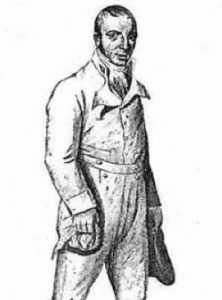
|
| Robert Barclay |
As part of the dissidence and Civil War of 17th Century England, Robert Barclay the Scotsman emerged with a point of view which was structured and reasoned in detail. What was almost unique was his reduction of it to a handful of pithy "Sound Bites". Coupled with membership in a prominent family, these abilities made him a particular friend of James, Duke of York, later King. Barclay became a Quaker at an early age.
The whole point of the Reformation was revulsion against the corrupt Catholic clergy, shielded behind some impossibly convoluted legalisms of doctrine. But for the governing establishment, any reform was going too far if it led to anarchy and chaos; combating disorder was then in many ways the central mission of the Catholic faith. The establishment did recognize that public revolt against universal micromanagement led to the scaffold for Kings who insisted on it. But in their view, the need for law and order still demanded some legitimacy, if not organized law. The Rangers, who paraded about stark naked and lived in ways resembling the hippies of the 1960s, were beyond the pale. Quakers, who professed no formal doctrine except silent meditation, might be possible just as threatening. After all, silent meditation could lead you anywhere including regicide. But the Quakers at least were quiet about it.
George Fox the founder of Quakerism had already provided one basis for containing fears of anarchy, by organizing local monthly meetings for worship within regional quarterly meetings; quarterly meetings, in turn, were within an overall framework of a yearly meeting. Occasional monthly meetings might develop a consensus for wild and antisocial behavior, indeed often did so, but would have to persuade the quarterly meetings whose members naturally outnumbered them. In extreme cases, the whole religion assembled in a yearly meeting. The innate conservatism of the meek would usually silence the extremism of the rebellious few. Very few kings would deny they could go no further toward despotism themselves, without the public behind them. The Quaker problem was to demonstrate what their consensus really was.
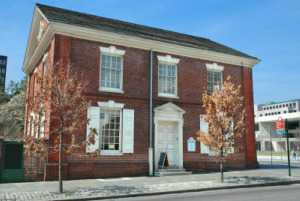
|
| Free Quaker Meeting House |
Essentially, the answer emerged that any religion which renounced a priesthood, which even renounced having a written doctrine, still needed some sort of institutional memory. If every Quaker began with a clean slate, to develop his own organized set of moral principles, then most of them would never get very far. Even if they did, they would have no time left for milking cows and weaving cloth. Single silent meditation was inefficient, particularly if you had faith that everyone was eventually going to arrive at the same convictions as the Sermon on the Mount. The founders of Quakerism took a chance, here. To assume the same outcome, you have to assume everyone starts with the same instincts and talents; even 21st Century America has private doubts about that one. Feudal England would have rejected it contemptuously. Carried to an extreme, it was a claim that everyone was as good a philosopher as Jesus of Nazareth, as good a person, as much a Son of God. That seemed like an arrogant claim. A more humble claim was that collectively, listening respectfully to one another in a gathered meeting, the whole world would over time reach the same truths as the Creator. If not, that still was as about as close as you were going to get to an oral memory, slowly building on the insights of the past.
Like all the early Quakers, Robert Barclay spent some time in jail. He did visit America in 1681, but it is doubtful if he spent any time here while he was Governor of East Jersey, from 1682 to 1688. The King insisted on his appointment, because he seemed the most reasonable man among the most reasonable sect of dissenters, and therefore the rebel he chose to deal with.
Quaker Carillon
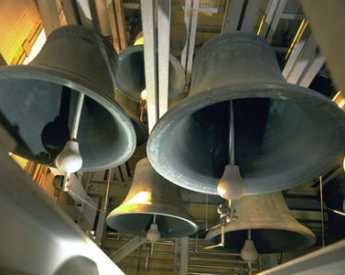
|
| Carillon Bells |
A carillon is a graded series of bells in a belfry, to play tunes. Quakers avoid bells and belfreys, but instinctively grasp the concept of a carillon. Why is that so?
Spoken messages at an unprogrammed meeting, like ringtones of a carillon, are followed by persisting vibrations of varying intensity. Care must be taken, no matter how pure the next message may be, to preserve harmony with the ring decay of the tone it has just followed. Not too soon, not too unrelated.
Overly long delays between messages may be discordant, breaking up the tune unless the message is harmonious. Lacking a tune, the messages fall apart. A silence of even longer length may restore the tune for a gathered meeting, or the next speaker may gently rebuke the interrupter. Sometimes the difference is distinguishable only when you know the personalities. A meeting without a tune is a disappointment, pointing toward individual experience instead of group unity. But death or other catastrophes can have its message destroyed by trite commentary. Rising above triteness can be one way a "weighty" meeting rises above its rank to demonstrate the fearlessness of leadership; failing to rise to an occasion is a way of demonstrating ordinariness.
Quakerism and the Industrial Revolution
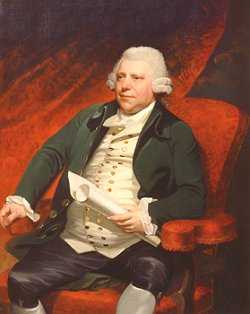
|
| Richard Arkwright |
The Industrial Revolution had a lot to do with manufacturing cotton cloth by religious dissenters in the neighborhood of Manchester, England in the Eighteenth Century. What needs more emphasis is the remarkable fact that Quakerism and the Industrial Revolution both originated about the same time, in about the same place. True, the industrializing transformation can be seen in England as early as 1650 and as late as 1880. The Industrial Revolution thus extended before Quakerism was even founded, as well as long after most Quakers had migrated to America. No Quaker names are much mentioned except perhaps for Barclay and Lloyd in banking and insurance, and Cadbury in candy. As far as local history in England's industrial midlands is concerned, the name mentioned most is Richard Arkwright, whose behavior, demeanor and beliefs were anything but Quaker.
He seems to have invented nothing, stealing the patents and ideas of others freely, while disgustingly boasting about his rise from rags to riches. Some would say his skill was in the organization, others would say he imposed an industrial dictatorship on a reluctant agricultural community. He grew rich by coercing orphans, convicts and others he obviously disdained into long, unpleasant, boring and unwelcome labor that largely benefited him, not them. In the course of his strivings, he probably forced Communism to be invented. It is no accident that Karl Marx wrote the Communist Manifesto while in Manchester visiting his friend Friedrich Engels, representing reasonably well the probable attitudes of Arkwright's employees. What Arkwright recognized and focused on was that enormous profits could flow from bringing piecework weaving into factories where machines could do most of the work. Until his time, clothing was mostly made by piecework at home, with middlemen bringing it all together. The trick was to make clothing cheaper by making a lot of it, and making a bigger profit from a lot of small profits. Since the main problem was that peasants intensely disliked indoor confinement around dangerous machines, the industrial revolution in the eyes of Arkwright and his ilk translated into devising ways to tame such semi-wild animals into submission. For their own good.
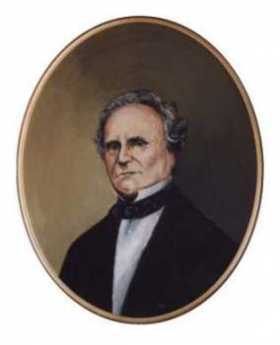
|
| Charles Babbage |
Distinctive among the numerous religious dissenters in the region, the Quakers taught that it was an enjoyable experience to sit indoors in quiet contemplation. Their children were taught to submit to it at an early age, and their elders frequently exclaimed that it was a blessing when everyone remained quiet, enjoying the silence. Out of the multitude of religious dissenters in the first half of the Seventeenth century, three main groups eventually emerged, the Quakers, the Presbyterians, and the Baptists. Only the Quakers taught that silence was productive and enjoyable; the Calvinist sects leaned toward the idea that sitting on hard English oak was good for the soul, training, and discipline was what kept 'em in line.
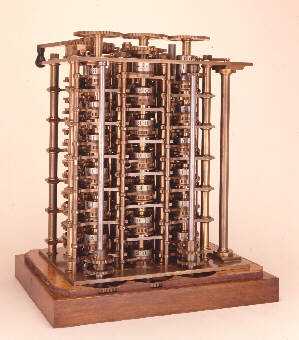
|
| babbagemaq.jpg |
The Quaker idea of fun through daydreaming was peculiarly suitable for the other important feature of the Industrial Revolution that Arkwright and his type were too money-centered to perceive. If workers in a factory were accustomed to sit for hours, thinking about their situation, someone among them was bound to imagine some small improvement to make life more bearable. If such a person was encouraged by example to stand up and announce his insight, eventually the better insights would be adopted for the benefit of all. Two centuries later, the Japanese would call this process one of continuous quality improvement from within the Virtuous Circle. In other cultures, academics now win professional esteem by discovering "win-win behavior", which displaces the zero-sum or win/lose route to success. The novel insight here was that it has become demonstrably possible to prosper without diminishing the prosperity of others. In addition, it was particularly fortunate that many Quaker inhabitants of the Manchester region happened to be watchmakers, or artisans of similar trades that easily evolved into the central facilitators of the new revolution -- becoming inventors, machine makers and engineers.
The power of this whole process was relentless, far from limited to cotton weaving. When Charles Babbage sufficiently contemplated the punched-cards carrying the simple instructions of the knitting machines, he made an intellectual leap to the underlying concept of the tabulating machine. Using what was later called IBM cards, he had the forerunner of the stored-program computer. There were plenty of Arkwrights getting rich in the meantime, and plenty of Marxists stirring up rebellion with the slogan that behind every great fortune is a great crime. But the quiet folk were steadily pushing ahead, relentlessly refining the industrial process through a belief in welcoming the suggestions of everyone.
Christ Church Memorabilia
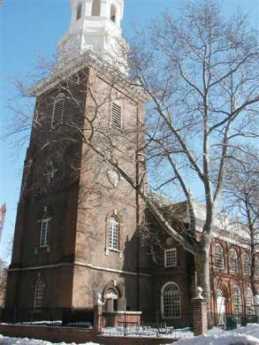
|
| Christ Church Memorabilia |
C hrist Church in Philadelphia was established in 1695, and was thus recently celebrating its 310th anniversary with an exhibition of the church's artifacts. They are listed here after an anonymous article in Beaumont News:
Books were sent in 1697 by Thomas Bray.
In 1701, Queen Anne sent the communion silver.
In 1727 Philip Syng carved the baptismal basin.
There is a prayer book altered on July 4, 1776, to remove King George's name.
Christ Church and Elfreths Alley
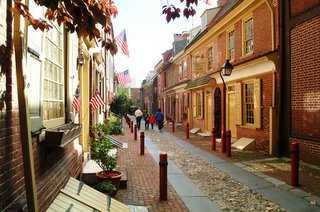
|
| Elthreths Alley |
The north side of Dock Creek (now, Dock Street) was lower than Society Hillside and somewhat swampy. The tendency to flood caused the north side to have smaller and less permanent buildings, and so it became the Colonial waterfront area remaining more commercial, and in parts, shabby, even during the 19th Century. Still further to the north, this was not the case, but the waterfront and food market patch more or less marooned Christ Church, now the single most graceful and elegant Colonial building still standing. This formerly commercial area is now called Old City, with many loft apartments mixed among surviving warehouse outlets, and of course the ethnic restaurants characteristic of such gentrified areas.
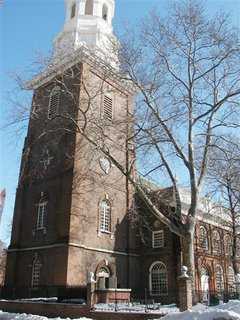
|
| Christ Church |
Elfreth's Alley, running for one block east and west between Second and Front (1st) Streets. Some of the histories of this street is obscure, so some of it is probably synthetic because nothing particularly historic happened there to create detailed records. Elfreth's Alley claims to be the oldest street in America, a claim that can be substantiated back to 1702. The street is filled with little "workers houses", presenting a solid front of buildings on both sides of the cobblestoned street. Most of the houses could vaguely be called "father, son and holy ghost houses", looking as though they consisted of three rooms on top of each other, although in fact most of them are larger. A moment's consideration shows that the street consists of many double houses, with three doorways in front. Each house had a door to the interior, and most of them have a third door opening to a shared tunnel between the two houses, leading to the back yards. These tunnels were called "easements", a term that has migrated from its earlier usage. Although William Penn envisioned large single estates in his "Greene Country Towne", he sold considerable land to people who remained in England as absentee landlords, who soon found that many small houses produced more rent than one or two big ones. One of the houses on Elfreth's Alley acts as a museum, with tours; there is an active civic association, and once a year in June there is a street fair.
Because the land was swampy and the neighborhood congested, Christ Church soon outgrew its backyard burial ground, and burying important people under slabs in the walkways and corridors. Visitors who do not come from that sort of religious background are typically uncomfortable walking over such graves, a quite common arrangement in European cathedrals. But eventually, it was necessary to go several blocks westward to create a "new" burial ground. Most of the famous names from the Revolutionary era, like Benjamin Franklin and four other signers of the Declaration of Independence are found on the tombstones at Fifth and Arch, just across the street from the Free Quaker meeting house, and opposite the Philadelphia Mint. On the remaining corner of Fifth and Arch is the Constitution Center which will open July 4, 2003. It can already be seen that its architecture clashes with the rest of the historic area, but it is fervently hoped that its programs will redeem it.
REFERENCES
| Society Hill and Old City, Image of America: Robert Morris Skaler | Amazon |
Urban Bridges

|
| Reverend Mary E. Laney |
The Reverend Mary E. Laney recently told the Right Angle Club about her experiences in an Episcopal mission church, along with the history behind this innovation, and the establishment of a 501(c)(3) organization to help the idea on a national level. That may mean no more to readers of this site than at first it probably did to the Right Angle Club, before Mary Laney made it all come alive. It was quite moving.
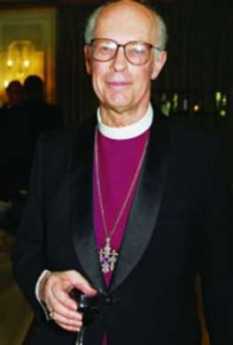
|
| Bishop Alan Bartlett |
During the 1980's she asked Bishop Alan Bartlett, at that time the Bishop of Eastern Pennsylvania for the Episcopal Church, if she might be assigned to an urban mission. As ethnic and religious population migrated around the Philadelphia landscape, quite a few Episcopal churches have been stranded in economically depressed neighborhoods, unable to afford a full-time pastor. The concept of a mission church was developed as a designation for churches that had dwindled to the point where only a handful of parishioners were left and were assigned to a category in which the Bishop would appoint a part-time Vicar to be in charge of what then needed financial support from the main church. Although in a sense Bishop White started the idea two hundred years earlier, there were no mission churches in Philadelphia in colonial times, but there are now over fifty of them, a quarter of the Episcopal churches in the region. Reverend Lancey was assigned to St. Gabriel's at the corner of Front Street and Roosevelt Boulevard, and stayed there fifteen years. She is now with St. Christopher's in Gladwynne.
The initial concept was to identify eight lead mission churches, build them up to be self-sustaining, and then replace them with eight new ones. With all good will and hard work in the world, this concept failed, largely because the social conditions of the poor at that time also depressed their educational level, and had instilled in them a culture of constant failure. In one telling episode, the parishioners said there was no hot water in the church. As a matter of fact, the pilot light of the hot water heater had gone out, and the parish was so sunken in the mindset of failure and despair they had not even looked into it. Mary Laney decided something had to be done to change the model.
What seems to have worked was the creation of a 501(c)(3) organization called Urban Bridges. The original idea behind this organization was that since the Constitutional separation of church and state precluded government grants to church no matter how struggling, but perhaps a tax exemption would make it possible for private donations to accomplish what was needed. There was, in addition, the sad experience that whenever the constitution barriers had somehow been overcome by circumvention, the many layers of bureaucracy usually consumed the money. It had proved disheartening to see four or five years go by after a government grant, with not a cent getting to the programs and all consumed by consultants, advisers and supervisors.
Meanwhile, the poor parishioners continued to base their hopes on this sort of relief, while neglecting things which might be more effective.
The Urban Bridges program evolved from a primarily fund-raising organization into a system of partnerships between prosperous suburban churches and the struggling urban missions. The suburban churches proved to be inspired with a wish to help but frustrated by a lack of means to do anything effective. It thus evolved that the suburban Episcopal churches supplied what was really most needed: practical examples of leadership on a local level, combined with visible evidence of successful effort. Literacy courses, drum and bugle instruction, computer tutoring and a variety of other spontaneous activities led to the example of leadership, and in the long run, was a far more effective fund-raising tool than printed appeals and button-holing. Even in the case of crime, it was the leadership that made the difference.
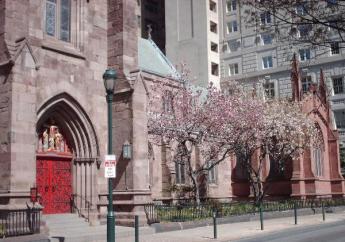
|
| St. Christopher's Church |
The story was told of a drug dealer in the neighborhood who dominated the streets with dogs and blocked access to schools unless the children agreed to sell drugs for him. Local police had proved unhelpful, and hopelessness was rampant. What would prosperous suburbanites do in such a situation? Obviously, suburbanites would not stand for such a situation and called in the Federal Drug Enforcement Agency. The crook was promptly deprived of his dogs and now resides in jail. That may not be wholly in the spirit of peaceful reasoning, but it's the American Way, all right. This was what seemed to be missing in the culture of poverty. It's the determination that whatever the cost, intolerable things will not be tolerated, combined with absolute faith that the system does provide ways to be effective without becoming either lawless or wards of the state. This is America, right?
The Revolutionary Origins of The Methodist Church
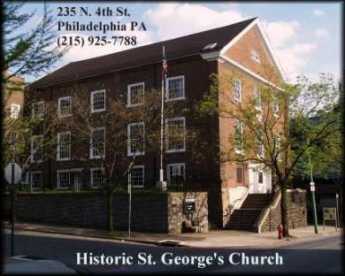
|
| Methodist Church |
There were no signers of the Declaration of Independence who were official Methodists, for the simple reason the Methodist Church was not created until 1784 when John Wesley, secretly ordained its first ministers. However, there is room to believe the movements eventually creating the Methodist Church played a central role in American agitation for independence.
The origins are a little confusing. John and Charles Wesley were both priests in the Church of England, and John famously declared, "I will live and die an Anglican." While at Oxford, they founded a bible and ethical study society which came to be called the Holy Club, and because of systematic thoroughness were familiarly known as Methodists. A systematic study of the Bible in small class groups was a central feature. There was no dissatisfaction with, or rebellion from, the Church of England. Missionary zeal was a second early feature of the group, and some early missionaries like Bishop Francis Asbury were especially active in the American colonies. When Asbury came to America there were 1200 adherents of the general concepts, and when he died there were a quarter of a million formal members of the church. This rapid growth soon became its main problem, because the Anglican Church simply could not supply enough priests, and so the local congregations demanded the right to ordain their own ministers. Wesley agreed but did it secretly. America was a long way from England, and the idea of a local church, independent of England, soon made its appearance, particularly as local practices began to diverge from the Anglican ones.
Missionary zeal soon evolved into a more exhortational evangelism. In Pennsylvania Quaker country, restlessness with Quaker silence produced a reaction of joyous outcry during religious meetings, creating the description "shouting Methodists". Hymn singing was important as a result of Charles Wesley's influence and many Methodist hymns have been adopted by other Protestant denominations. Drunkenness was a major problem in the colonies, and anti-drunkenness or temperance, was the main feature of Methodist attention. A century later, Methodist ministers were to found the Salvation Army, which embodies many of the principles of evangelical, hymn singing anti-drunkenness crusading.
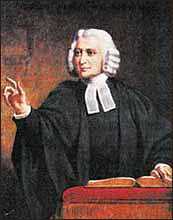
|
| Charles Wesley |
From its earliest days, Methodism welcomed blacks into membership, although a segregationist strain to it ultimately caused trouble. A central figure in the configuration of the early Methodist Church was John Newton, the captain of a slave ship. After nearly perishing in a storm, Newton attributed his rescue to God's intervention, writing the famous hymn, Amazing Grace. He spent the rest of his life in evangelical activities, with particular emphasis on black people.
Although his American visit preceded the formation of the Church, George Whitefield the evangelical preacher played a major role in preparing the Colonial Philadelphia populace for the concepts of Methodism. He attracted great crowds to his sermons, and Benjamin Franklin describes in his autobiography the great impact Whitefield had on him. Now, as it happened, the German Reform church had started but was unable to complete a church building at 235 North 4th Street, which was sold at auction to members of the local Methodist Society. This church building, started in 1763, purchased in 1767, and completed in 1769, can fairly claim to be the oldest Methodist Church building in continuous service in the world, although the dates of these things are pretty confusing for a church officially created in 1784. Just to make things more difficult to understand, Barratt's Chapel, ten miles south of Dover, Delaware, was completed in 1784 on land donated in 1780. If you say it slowly, you can see that it is possible to describe Barratt's Chapel as the oldest house of worship built by and for Methodists. John Wesley's chapel, on City Road, London, is however still the mother church, so to speak. St. George's Church in Philadelphia is notable for ordaining the first black minister, Richard Allen, who had been born a slave of Benjamin Chew (the Chief Justice, whose house was Cliveden, the scene of the Battle of Germantown). Allen was obviously a remarkable person, who bought his own freedom by working as a shoemaker, and who later drove wagons from Rehoboth, Delaware to Valley Forge during the Revolution. (Allen had actually been sold by Chew to Stockley Sturgis, a Delaware plantation owner, who is the one who remorsefully sold him his freedom). Allen often preached five times a day, built up a huge following in the black community, and broke off to form the African Methodist Episcopal Church. The first Church was Bethel, replaced several times at 6th Lombard Streets, but there are now many others across the country.
Visitors from New Jersey, crossing the Benjamin Franklin Bridge, will be able to see the top half of St. George's Church as they descend into Philadelphia. At Christmastime, the windows are lit with real candles, and the interior is a beautifully simple white room. It now has less than a hundred members, but houses the genealogy and other church records for a wide area, and is very popular with people doing research. The bishop's chair dates from Bishop Asbury. Barratt's Chapel is smaller and simpler, but the highway makes a wide swing around it and its burial ground, so it remains a prominent feature of the area around Frederica. It takes several minutes to drive around it, even at high speed, on the way to the Delaware beaches. Wesley College is not far away. Stockley (currently pronounced Stoakly) is commemorated as the name of a small town on the highway, twenty miles south of here.
The Hogan Schism
These issues of controlling authority (ultimately quite parallel to the contrast between a monarchy and a republic) came to a head around 1820, when a charismatic Irish priest named William Hogan came to Philadelphia, and soon became the clear favorite of the trustees of the local church. There had previously been difficulty getting anyone to accept the contentious job of Bishop, but when Henry Conwell took the job, he soon decided that Hogan had to go. The trustees nevertheless supported Hogan, and it became necessary to appeal to Horace Binney,
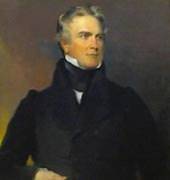
|
| Horace Binney |
a non-catholic, to negotiate a solution. (Binney's son later became a founder of the Union League, and like his father was much respected for many civic accomplishments.) The outcome, unfavorable to Hogan, encouraged the Church to become much more forceful in exerting Vatican control over provincial churches, especially American ones.
So matters turned out one way for the Methodist-Episcopals and the opposite way for the Catholics. Each group now expresses satisfaction with the enduring effect on their system. However, it is clear that both top-down and bottom-up convictions are very unyielding, and are not confined to either religion or politics. Both philosophies are in fact seemingly resoundingly justified by occasional experiences, and therefore strongly persist to this day. Along the same lines, the election of bishops by the priesthood, and selection of the priests by the lay deacons are the central differences between the Church of England and the American Episcopalian Church. The evolved solution among the American Episcopalians has been the latitude to seek a "flying bishop" from somewhere else when the local bishop differs significantly from the viewpoints of some local parish. This has been a source of vigorous debate even recently, and even in the Philadelphia area.
While there is no need to stir up these dangerous embers, anyone who seeks to understand the issues which led to the American colonies going to war for independence from England, must understand this matter. Many historians would agree that the American Revolution was provoked by George III attempting to strengthen the monarchy at a moment in history when the colonists were seeking more local autonomy. All colonial institutions tended to reflect this central disagreement about autonomy in governance, but it is conceivable that the religious influenced the political more than the reverse. Tensions about authority were of course greatly magnified by the other notoriously strong religious dissensions of the Seventeenth and Eighteenth Century.
Stephen Girard and Religion
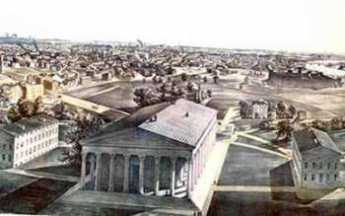
|
| Girard College |
In 1950, an elderly retired gentleman named Witherbee paid me a visit when I was temporarily covering practice for a doctor in Woodbury, New Jersey, in locum tenens, as we say. His medical problem was easily tended, and we chatted.
He told me that he had attended Harvard Divinity School many years before, and one day was about to graduate as an ordained minister. His family and many other proud families were gathered on folding chairs on the lawn in Cambridge to watch the graduation ceremonies. The graduates were called up one by one, in alphabetic order.
Since Witherbee is at the end of the alphabet, he had a lot of time to think over the significance of what the members of his class were doing. In time, thinking over the personal defects of each classmate who preceded him, he became overwhelmed with a personal question. "How can I tell others how to behave, when I don't know how to behave, myself?"
And so, when his turn came, his name was called out, and he rose in his seat. "I decline to graduate."
The consternation of his family can be imagined, along with the stir in the audience, the astonished face of the Dean, and his own confusion about the uproar he had just caused. But although the die was cast, and the action a final one, it had a surprising outcome. The next day, he received a telegram from the Girard College in Philadelphia, inviting him to be considered for the position of Director of Religious Studies. It seems that Stephen Girard had provided in his will that no ordained minister might set foot within the walls of Girard College, and yet they felt they needed someone to oversee the religious study. Witherbee was perfect: he had the credentials, but he did not have the ordination curse.
And so he happily remained in that capacity for the rest of his employed life.
REFERENCES
| Girard College It's Semi Centennial of Girard College: George P. Rupp ASIN: B000TNER1G | Amazon |
Religion at Girard College:Spiritual But Irreligious
According to Cheesman A. Herrick, "After Girard had dictated that famous section of his will excluding clergymen and William J. Duane had written it down, Girard asked Duane what he thought of it. Duane, being quite unprepared for the question, and somewhat at a loss to interpret the section, answered, ' I can only say now, Mr. Girard, that it will make a great sensation.' To this Girard replied, ' I can tell you something else it will do -- it will please the Quakers.'"
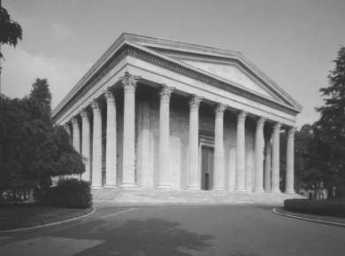 |
| Stephen Girard College Founders Hall |
In the Western part of America, Quaker meetings sometimes do have paid ministers, but the Philadelphia Yearly Meeting and it is component monthly meetings have held steadfastly to the tradition of "unprogrammed meetings"-- without ministers. Girard was not a Quaker, but he greatly admired them, and three of the five executors of his will were Quakers. It, therefore, seems likely, at a minimum, he hoped that Quaker sentiment would fortify his intended banishment of clergymen from his school for orphans, and he might well have got the basic idea from them. Quakers have long noted with disapproval that paid ministers have often publicly supported wars, and Quakers notice that governments waging wars have typically sought to stir up warlike feeling by persuading ministers to help them do so. Another behavior which is almost inherent in the clergy is for ministers to feel that they are measured by the size of the congregation they attract, and hence almost invariably proselytize for new membership. Girard had firm ideas about influencing impressionable orphans, and he did not wish to have outside ideologies capture the administration of the school. 1830 was an evangelical time, and Girard could easily imagine some highly charismatic minister captivating the school.
Other motives may, of course, be imagined. This is what is actually in the will:
Prohibiting any ecclesiastic, missionary or minister of any sect from holding or exercising any station, no such person should ever "be admitted for any purpose or as a visitor, within the premises occupied by the College...I do not mean to cast any reflection upon any sect or person whatsoever, but inasmuch as there are such a multitude of sects, and such a diversity of opinion amongst them, I desire to keep the tender minds of the orphans free from the excitements which clashing doctrines and sectarian controversy are so apt to produce." As matters were to turn out, religious meetings have been conducted by laymen almost every day at the College, and the custom grew up that the boys themselves were often called upon to conduct religious meetings. A great many graduates of Girard College eventually went on to careers in religious ministry, so it even seems likely that their experience at the school had the effect of interesting them in the ministry by giving them a taste of it.
In 1844, the numerous relatives of Stephen Girard tried to break the will. No one has seriously proposed their grievance was anything but financial. However, they sought the services of the most noted lawyer, orator, and statesman of his day, Daniel Webster. Webster would have been wise to refuse to take the case since he could think of no better argument to use than that -- the exclusion of ministers demonstrated the school for orphans was not a true charity, and only a true charity would be allowed to exclude ministers. Several days of oratory enveloped this preposterous argument, which today reads like pure bombast and humbug. The U.S. Supreme Court in time unanimously rejected his brief, with the generous comment that the law was not on his side. Other lawyers have privately remarked that such oratory was never intended to persuade a court, but to impress a rich client.
 |
| Horace Binney |
Horace Binney, the lawyer son of another Horace Binney who established an enduring reputation for calmness in midst of a religious storm during the Hogan Schism, was the successful defender of Girard College. In contrast with the flowery reverberations of Webster's voice, Binney confined himself to short words in short sentences, sticking strictly to the point without appeal to emotion. In fact, one wonders why Webster stooped to it. Historians credit him for the arguments that later inspired the defenders of the Union with enough conviction to win the Civil War. Essentially, he convinced Unionists that the Constitution had not created a confederacy, but a Union, which implicitly must have all the powers needed to preserve itself. Half the nation would not accept his reasoning, however, and his willingness to proclaim nonsense in the Girard case confirmed many Southern suspicions that the Union argument was also specious. Fifteen years later, Philadelphia was quite slow in coming to the Union side, for a variety of reasons. His attacking a cherished Quaker belief in a Quaker city was certainly not useful. In time, it would be possible to hear a quiet parody of the Union's marching song, that "He died to make men holy -- we will kill to make men free."
 |
| Advice to Young Men and Boys |
It is unfortunate that the one thing most people think they know about Girard College is that religion is excluded. Far from it, there is more attention to morals and ethics than in public schools. Indeed, Girard College compares well with Phillips Exeter Academy, Webster's prep school and perhaps his model. One of the great concerns about orphans is that they may be easily led into a life of crime; there is no doubt that Girard College makes unusual efforts to keep that from happening. In fact, the school may be said to have written its own prayer book during the late 19th Century. Books of devotion were written and then organized by committees of laymen, eventually published by the Chairman, Benjamin B. Comegys. Entitled Advice to Young Men and Boys", Comegys notes that the book was published "in the hope that it may be the means of helping some boys and young men other than those to whom the Addresses were made." It would have to be observed that Girard College inspired an unusual interest in the ministry among the boys, by encouraging them to lead in the ceremonies themselves. And by having the Board of Trustees participate in the construction of books of moral principles, they no doubt similarly evoke a high sense of fidelity within the businessmen trustees. Since those entrusted with huge amounts of money are faced with huge temptations, the Trustees quite possibly need the stimulus as much as the students do.
REFERENCES
| Girard College It's Semi Centennial of Girard College: George P. Rupp ASIN: B000TNER1G | Amazon |
Colleges and Religions Drift Apart
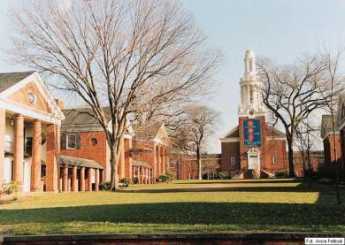
|
| Yale Divinity School |
Until fairly recently, academic institutions have existed as an outgrowth of religion, sort of enlarged monasteries charged with acting in loco parentis. The Catholic Church in Europe had its medieval universities, but could probably have got along without them. It was Protestantism, especially American Protestantism, which needed a place to train ministers. Harvard, William and Mary, Yale, Princeton and the other early American colleges were established to train ministers. If there was room, they sometimes took students with no intention of entering the ministry; more often, the non-ministers had enrolled with a religious vocation but drifted away from it. In time, the professional schools of medicine and law joined theology as learned professions, and of course, the colleges needed a supply of educated teachers for themselves.
And so it evolved that colleges and universities of the Philadelphia region almost always had religious sponsors, sometimes rather remotely connected, and among Catholics, the different Orders had their own colleges. Temple had Baptist origins, Princeton was Presbyterian, Eastern University was originally Eastern Baptist Theological Seminary. There is Moravian College, and so on. Since this was once an entirely Quaker region, we have Bryn Mawr College, Haverford College, and Swarthmore, although the Quakers were slow to trust the idea of colleges, since they hoped their members would remain unmoved by clergymen. The other dominant religion of the colonies, the Anglicans, split off from the British church as Episcopalians and then got somewhat scattered by the awkwardness that many Anglicans were Tories. The non-Tory Anglicans tended to wander off into Methodism, a form of Episcopalianism formed by non-ordained leaders cut off from British influences by the Revolution. The Presbyterians, however, were the heart of the American Revolution; their Scotch-Irish ancestors had no trouble saying what they thought of the British. With the attainment of Independence, they prospered as victors. Gradually, the original idea of a college to train ministers evolved into a college to teach future lay leaders of religious groups about their faith. Hidden in this transformation of the schools was an acknowledgment that leadership was migrating away from the clergy. Even the Atlantic Seaboard Quakers, who always declared they had no truck with clergy and had no fixed doctrine to teach, grasped the central point of this and formed their three colleges so that Quaker children could acquire a Quaker education, and presumably, find other Quakers to marry. That was the slogan of the times, but the underlying realization was that the enduring values of religion are guarded and promoted by an educated elite, not an ordained clergy.
This drift toward what is called secularism had some peculiarly Philadelphia variants. The University of Pennsylvania was founded by Benjamin Franklin, a deist, and has never had a divinity school, although it has a school of religious studies. A deist is someone who believes that something called God may have created the world and established its rules. Perhaps so, but since that original and final act of creation, God has simply left the world to run along on its own. Out of this arms-length piety and the dissensions of the Revolution, grew up the tradition of wealthy Philadelphia families sending their children to Harvard and Yale if Episcopalian, and to Princeton if Presbyterian. Princeton was a natural direction to take during the 19th Century when wealthy estates occupied the banks of the Delaware River all the way up to within walking distance of Princeton, and the River was the main highway. This hurt Ivy League University of Pennsylvania by draining off sources of support, either toward other Ivy League schools or to the trio of Quaker colleges. It particularly hurt Penn's undergraduate college, since the Quaker Colleges, and Princeton, held back from forming professional and graduate schools, and looked to send their graduates to Penn after the formative undergraduate years. Dickinson, Franklin and Marshall, Ursinus, Muhlenberg, and Lafayette did the same, remaining content to provide a sound liberal education rather than training for a career. Consequently, an opportunity was created for free-standing graduate schools without an undergraduate base, like Hahnemann, Women's and Jefferson Medical Colleges, or Lehigh and Drexel for engineering,, Moore School for Art. Mergers and academic imperialism have tended to push all of these free-standing units toward fuller university status. All in all, nearly a quarter of a million students now attend colleges in the Philadelphia region, and almost a million in the broad exurban area, depending on what you call a college. But a sound liberal and practical education has long ceased to be the same as a sound religious one.
Meanwhile, religion has lost its dominance in American life. Things reached some sort of climax in 2000 when Yale University officials contemplated closing the Yale Divinity School. It was said to be an expensive distraction, out of the mainstream of University life. Momentarily forgetting that the teaching of Divinity was the main reason for founding the University, those former flower children of the sixties, now fortified with tenured rank, abruptly learned that religious feeling in America is not entirely dead. Dying, perhaps, but not so dead as to forget the legalities of restricted endowment funds.
The next step in this evolution is not so clear. In 2006, while the majority of older colleges may be concentrated in "blue" states, the majority of Americans nevertheless live in "red" states, where religion is both strong and actively displeased with ceding spiritual leadership to secular universities. The decisive outcome becomes whether this topic is deemed mainly educational (decided by professors), or mainly religious (decided by clergy). At the moment it is not decisively either one.
The Rights of Man
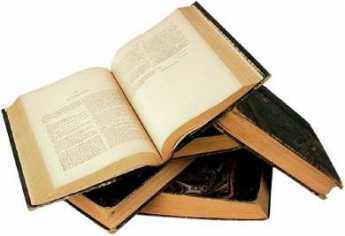
|
| Law Books |
Until the time of our Civil War, a lawyer had two sets of books on his shelves, roughly equal in size. One was the Common Law, evolved by the Courts over thousands of years. The other was Statutory Law, created by Congress and the Legislatures in about a hundred years. Today, the Statutory Law is vastly larger in size, as our elected representatives keep adding to it. Thomas Jefferson would be greatly pleased with this result, disappointed only that it was not even more unbalanced. John Marshall is the name most often associated with resistance to this trend. Marshall and Jefferson hated each other.
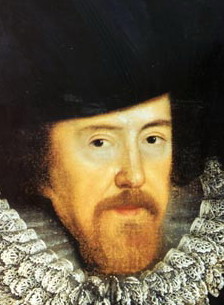
|
| Sir Francis Bacon |
There are many ways to define the essential difference between the two kinds of law, coming down ultimately to the question of Who Decides. The Common Law was created by judges, who purport to be experts or at least serious students of the subject, attempting to be impartial referees of people with major disputes. If they are running smoothly, the judges leave things alone. In the early part of the Sixteenth Century, Sir Francis Bacon was instrumental in organizing the Common Law process into an acknowledged pattern much like the scientific method being developed at the same time by people like Galileo. A theory was propounded, and then tested by actual disputes; when the theory was found to be flawed in some way, it was modified and offered for further testing. The Law evolved. Oliver Wendell Holmes is famous for the remark that "The life of the law has not been logic, it has been experienced." But Holmes' quip is incomplete; the common law is logic, constantly tested by experience. And a major feature of the experience is that if things are running well, remain silent.
Statutory law bases its claim to preeminence on the reasoning that elected representatives in Congress assembled are more likely to express the collective wishes of the whole nation that are a cloistered minority who spend their lives listening to disputed arguments. One group tends to develop an inflated view of the importance of mass opinion, while the other group is perhaps a little too disdainful of it. In the end, the authors of the Constitution elected to set the two against each other, hoping the tension would reach a balance point.
There were historical reasons for concern, both ways.
Joseph Priestley, Shaker and Mover
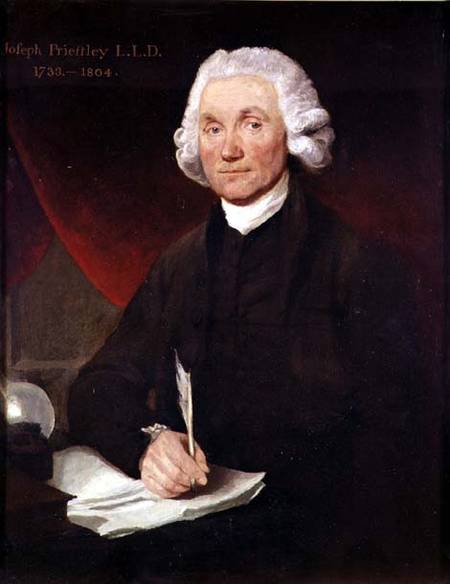
|
| Priestley |
Joseph Priestley, sometimes also spelled Priestly, is surely one of the more undeservedly neglected men of history. He has been called, with justice, the Father of the Science of Chemistry. He might also be called with equal justice, the father of the First Unitarian Church . The First Unitarian Church of Philadelphia, at 21st and Walnut, is the first and oldest Unitarian church and was indeed started at the urging of Priestley, whose principal residence was in Northumberland PA, at the confluence of the West and North Branches of the Susquehanna. Priestly wrote a scholarly work on the teachings of Jesus, which so captivated Thomas Jefferson that Jefferson wrote him the outline of another book that needed writing. Apparently, Priestley didn't have time, so in 1803 Jefferson wrote it himself, in the four languages he was fluent in, English, French, Latin, and Greek. Although those were simpler times, there have been few if any others who have told a President of the United States that he was just too busy to respond to a presidential request, particularly when the President could then find he had time to do it himself.
Priestley's theological teachings were based on scientific reasoning. They were highly controversial views, to say the least. He rejected the concept of a Trinity (he was a Calvinist minister, mind you), the divinity of Christ, and the immortality of the soul. Essentially, he rejected the concept of an immortal soul on the reasoning that perceptions and thought were functions of material structures in the human brain (Edmund O. Wilson's idea of Consilience is largely similar), and therefore will not outlive the cerebral tissue which produced them. In 1791, mobs burned his house in Birmingham, England, his patronage was revoked, and he hastily emigrated to Philadelphia. It isn't hard to see why these ideas were particularly unpopular with the Anglican church, which is probably the main reason England made him into a non-person, and his scientific ideas were denigrated as the product of other people.
That's too bad because he really was a scientist of immense importance. As a young man, he encountered Benjamin Franklin in England and was certainly a man after Franklin's heart. He noticed funny things about gases that rose from swamps and over mercury salts, and Franklin encouraged him to systematize and analyze his observations into theory. Although he called it anti-phlogiston, he had discovered oxygen. And then hydrogen, and nitrous oxide, and sulfur dioxide, and hydrochloric acid. Priestley really was the first organized and coherent scientific chemist, the Father of Chemistry. Franklin, Lavoisier, and Priestley became scientific friends, and enthusiastically exchanged ideas and observations, eventually leading to Lavoisier's fundamental principle: Matter is neither created nor destroyed, it only changes its form. In the end, it made no difference; Priestly had offended some pretty large religions, and nothing he did in chemistry was going to get much attention. Perceiving the value of the land at the confluence of rivers, he made his home for the last ten years of his life in Northumberland, Pennsylvania, now three hours drive Northwest, somehow managing to maintain an active scientific, political and theological influence worldwide. Visiting this rather sumptuous estate in a little river town is well worth a tourist visit. He died in 1804, just after his friend and kindred-religionist Thomas Jefferson became President of the United States.
Priestley's life can be summarized in one of his own most quoted remarks. "In completing one discovery we never fail to get an imperfect knowledge of others of which we could have no idea before so that we cannot solve one doubt without creating several new ones."
REFERENCES
| The Invention of Air: A Story of Science, Faith, Revolution,and The Birth of America, Steven Johnson ISBN: 978-1-59448-852-8 | Amazon |
Joseph Priestley of Northumberland, PA
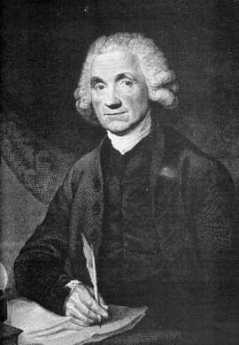
|
| Joseph Priestly |
There's one good thing about living near the confluence of two big rivers, and one very bad thing about it. The rivers provide transportation in three directions, but about once every twenty-five years the rivers rise astonishingly and threaten to carry everything away. That deposits rich topsoil, making it even more attractive for settlers to locate there. At what we now call Northumberland located on the junction of the North and West Branches of the Susquehanna, there is a monument marking off the flood levels of the past two centuries. Even the least of these floods must have covered a lot of ground, and the highest one is so far above the head of a visitor that it is hard to see how anything could have survived it. Right now, the little town of Northumberland is a burnished little jewel. One hopes the Army Corps of Engineers either has or soon will abate the potential flood danger. It would be interesting to know if flood insurance is available, just as a sign of how experts currently evaluate the risk. The Endless Mountains (that's really their name) stretching almost to Cooperstown, catch a lot of rainwater and snow and occasionally funnel it all down the North Branch to Northumberland. The West Branch is even bigger. Having observed the 1936 flood in Pittsburgh, I can testify it isn't an experience soon forgotten.
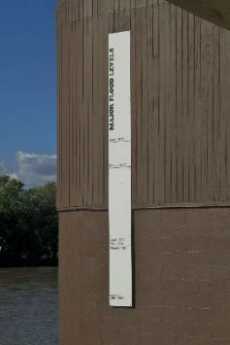
|
| Flood Levels |
It happens the most prominent resident of the area arrived there in 1794 and lived out the last ten years of his life as a widower. Joseph Priestley, an English dissenting minister had stirred up enough uproar to cause his house to be burned to the ground. No doubt, the English wanted to suppress any repetition of the French Revolution but were willing enough to be rid of a protege of Lord Shelbourne so the government made full restitution of the value of his property when he finally agreed to emigrate. Pennsylvania was chosen on the advice of his good friend Benjamin Franklin. He bought extensive land at the river junction and constructed what most people would describe as a beautiful mansion on reasonably high ground with a river entrance. Although it is built of wood and William Penn's Pennsbury was brick, there is a definite similarity. Priestley's house somehow seems more open and livable, although the outhouse reminds us that plumbing costs were moderate at the time. And furthermore, the original building survives as Pennsbury did not. The original plans for it were later discovered in England, and so it has been possible to make it what it used to be, outbuildings and all. Priestley and Lavoisier did not get along even though they share the honors for discovering Oxygen. Lavoisier was a rich aristocrat, while Priestley was a prominent member of the dissenting class with advanced ideas about democracy. It is said that many of the ideas Thomas Jefferson had about the natural rights of mankind were brought into sharper focus by his association with Priestley. Priestley was primarily a political theorist, acting in the role of a minister. He regarded his chemical experiments as a hobby, motivated by the hope of discovering a bridge between religion and science. The relationship between Priestley and Lavoisier was a strange one, but it had political conjunction as well as a scientific one. Priestley was driven to America by English Tories the same year that Lavoisier was guillotined by French revolutionaries.
Although oxygen had been discovered while Joseph Priestley was still in England, he discovered carbon monoxide in Northumberland, using retorts and scientific instruments he designed and sent to his friend Wedgwood to manufacture. He also devised the idea of carbonated water while he was here. For these as well as chemical methodologies he has been described, at least by Anglo Saxons, as the Father of Chemistry. Following what he considered to be his main occupation he meanwhile founded the Unitarian Church in America. In the little town at the Susquehanna forks, he was unable to establish a viable Unitarian congregation beyond a few followers who came to his home. So, he somehow found the energy to establish the First Unitarian Church in Philadelphia, at 21st and Walnut Streets. (Aside from its historic significance, the present church building is a distinguished work of architecture designed by Frank Furness). Meanwhile, he was very active in national politics; Jefferson's defeat of John Adams' reelection is often ascribed to his efforts.
His wife died of tuberculosis before they could move into the Northumberland plantation, but he lived there with his son and daughter-in-law for ten years, dying in 1804. The son was concerned with founding a utopian colony, but the wealthy daughter-in-law forced a return to England. The grandson generation returned to Northumberland, where the graveyard now has an impressive array of Priestley tombstones.
REFERENCES
| The Invention of Air: A Story of Science, Faith, Revolution,and The Birth of America, Steven Johnson ISBN: 978-1-59448-852-8 | Amazon |
The Swedenborgian Church
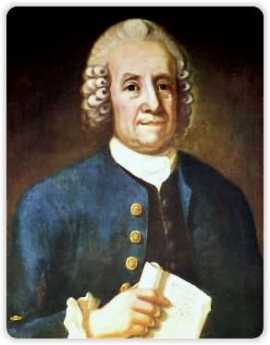
|
| Emanuel Swedenborg |
Among the many churches centered in Philadelphia, the Swedenborgian is probably the least typical and most difficult to understand. The church does not actively seek out a new membership, but it welcomes everyone, in the spirit of Emanuel Swedenborg's observation that "All people who live good lives, no matter what their religion, have a place in Heaven." Without attempting to define the teachings of Swedenborg (1699-1772), who was quite able to speak for himself, it can be approximated that Heaven plays a central role in this belief system, and predestination does not. Although the ceremonial features of this religion are very similar to the Episcopal Church, its main emphasis is on good works as a way of attaining the reward of Heaven. In some ways, that is an unexpected position for a noted scientist like Swedenborg to take, since generally scientists lean toward Calvinism, with the mechanistic view that if God is all-powerful, then human free will must be impossible.

|
| cross |
There are at least four divisions of the Swedenborgian religion, but the Bryn Athyn branch is most notable in the Philadelphia region. A very wealthy adherent of Swedenborg named John Pitcairn bought a large tract at Bryn Athyn and gathered the local church to live around a perfectly magnificent cathedral and church school. It is hard to think of any church in the Philadelphia region which approaches the magnificence of the Bryn Athyn cathedral. It has a special character that it was conceived and built during the crafts movement of the early twentieth century, with imported European workmen deliberately organized like medieval craft guilds. The central features of this workmanship reflect and then project the belief in personal individuality within the whole religion. No two windows, or doorknobs, or carvings are the same in the cathedral, reflecting the wish for each workman to devise his own unique creation and show the way of personal responsibility to the faithful. This cathedral is one of the things in the Philadelphia region most worth visiting, but to appreciate its quality you have to know what you are looking at.
Everybody in this church is unexpectedly hard to characterize. The Pitcairn Foundation was such a successful investor that it formed a mutual fund for others to share in its good fortune. Its central philosophy is to invest only in corporations which have been dominated by a single family, preferably the founding family, for at least fifteen years. There are about six hundred eligible corporations, and recent management scandals in the newspapers illustrate the Pitcairn's exactly knew the dangers of handing your assets over to a hired manager. This family-centered investing approach consistently yields better than the S & P 500, which in turn beats ninety percent of investment managers. You sort of get the idea you know where this family is coming from when you meet a courtly, meek, retiring but friendly person, who can say, "My mother is the only person I ever met who looked perfectly at home seated under a sixty-foot ceiling."
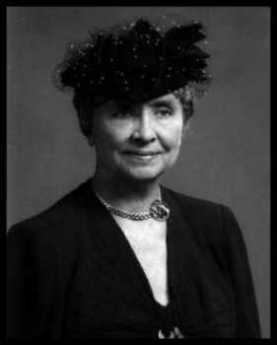
|
| Helen Keller |
Two other famous Swedenborgians illustrate the unusual individualism of this religion. Helen Keller, the deaf-blind girl who overcame her handicap by going to Radcliffe and becoming a successful author and lecturer, for one. The other would be Johnny Appleseed (1774-1845), whose real name was John Chapman. Grammar school legends would have this bearded, barefoot vegetarian adopting a life of poverty like St. Francis, but in fact, he was an extremely shrewd businessman who died rich. He developed the business plan that American settlers would be going West into what was then the Northwest Territory, and having a tough time getting enough to eat the first year or two. So, he anticipated the paths of frontier settlement, and went ahead among the Indian tribes, planting apple trees. When the settlers arrived in the region, he sold them young apple trees and showed them what to do with them. Apples grown from seed are not the tasty morsels we know today but tend to be rather shriveled and bitter. So Johnny showed them how you make cider, and if you let it sit around a while, hard cider. The settlers would use the pulpy squeezing for compost, and he would be back to collect the seeds from them so he could continue his business plan in the next county. In short, he showed them how to drink the apples. He also let the Indians pick the apples, so they liked him and spared him the common troubles of the frontier.
If you are going to boil apples, you need a pot, and Johnny often carried his like a hat. He wasn't a nut, at all, he was a showman. In his backpack, he was also carrying a Bible. And in his head, he carried a motto, "All religion has to do with life, and the life of religion is to do good."
Franklin Declares Independence a Year Early
Joseph Priestly became a close friend of Benjamin Franklin almost as soon as they met. Priestly was an Anglican clergyman who broke loose and formed the Unitarian Church, and meanwhile, his scientific discoveries also entitle him to be called the Father of Chemistry. Franklin, of course, was the discoverer of electricity; it would be hard to be sure which of the two was more brilliant. In July, 1775, Franklin wrote the following letter to Priestly, which makes a trenchant case that the American colonies should, and would, break away from England. Since some legal authorities, following Lincoln's lead, maintain that Jefferson's manifesto "informs" the United States Constitution, it might be well to begin referring to this letter as an even clearer statement of the mindset of America's founding leaders.
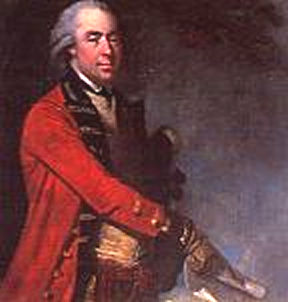
|
| General Thomas Gage |
" Dear Friend (wrote Franklin),
"The Congress met at a time when all minds were so exasperated by the perfidy of General Gage, and his attack on the country people (i.e. Of Lexington and Concord), that propositions of attempting an accommodation were not much relished; and it has been with difficulty that we have carried another humble petition to the crown, to give Britain one more chance, one opportunity more of recovering the friendship of the colonies; which however I think she has not sense enough to embrace, and so I conclude she has lost them forever.
"She has begun to burn our seaport towns; secure, I suppose, that we shall never be able to return the outrage in kind. She may doubtless destroy them all; but if she wishes to recover our commerce, are these the probable means? She must certainly be distracted; for no tradesman out of Bedlam ever thought of increasing the number of his customers by knocking them on the head; or of enabling them to pay their debts by burning their houses.
"If she wishes to have us subjects and that we should submit to her as our compound sovereign, she is now giving us such miserable specimens of her government, that we shall ever detest and avoid it, as a complication of robbery, murder, famine, fire, and pestilence.
"You will have heard before this reaches you, of the treacherous conduct to the remaining people in Boston, in detaining their goods, after stipulating to let them go out with their effects; on pretence that merchants goods were not effects; -- the defeat of a great body of his troops by the country people at Lexington; some other small advantages gained in skirmishes with their troops; and the action at Bunker's-hill, in which they were twice repulsed, and the third time gained a dear victory. Enough has happened, one would think, to convince your ministers that the Americans will fight and that this is a harder nut to crack than they imagined.
"We have not yet applied to any foreign power for assistance; nor offered our commerce for their friendship. Perhaps we never may: Yet it is natural to think of it if we are pressed.
"We have now an army on our establishment which still holds yours besieged.
"My time was never more fully employed. In the morning at 6, I am at the committee of safety, appointed by the assembly to put the province in a state of defense; which committee holds till near 9, when I am at the Congress, and that sits till after 4 in the afternoon. Both these bodies proceed with the greatest unanimity, and their meetings are well attended. It will scarce be credited in Britain that men can be as diligent with us from zeal for the public good, as with you for thousands per annum. -- Such is the difference between uncorrupted new states and corrupted old ones.
"Great frugality and great industry now become fashionable here: Gentlemen who used to entertain with two or three courses, pride themselves now in treating with simple beef and pudding. By these means, and the stoppage of our consumptive trade with Britain, we shall be better able to pay our voluntary taxes for the support of our troops. Our savings in the article of trade amount to near five million sterling per annum.
"I shall communicate your letter to Mr. Winthrop, but the camp is at Cambridge, and he has as little leisure for philosophy as myself. * * * Believe me ever, with sincere esteem, my dear friend, Yours most affectionately."
[Philadelphia, 7th July, 1775.]
REFERENCES
| The Invention of Air: A Story of Science, Faith, Revolution,and The Birth of America, Steven Johnson ISBN: 978-1-59448-852-8 | Amazon |
Sacred Places at Risk
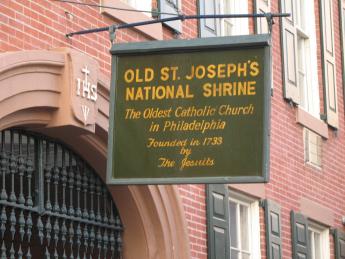
|
| Old St. Joe's |
When William Penn invited all religions to enjoy the freedom of Pennsylvania, he created a home for the first churches in America of many existing religions, and furthermore the founding mother churches for many new religions. Regardless of the local congregation, there is obviously a strong wish to preserve the oldest churches of the Presbyterian, Methodist, United Brethren, African Methodist Episcopal, Baptist, Mennonite, and many other denominations. While the founding church of Roman Catholicism was obviously not in Philadelphia, St. Josephs at 3rd and Willing was for many decades the only place in the American colonies where the Catholic Mass could be openly performed. The towering genius of William Penn lay in the combination of an almost saintly wish to spread religious toleration, combined with what must have been a sure recognition that the motive of Charles II in giving him the land, was to get rid of all those dissenters from England.
Philadelphia now has a thousand church structures within the city limits, and more than a thousand in the suburbs. However, many church buildings find themselves stranded by the migration of local ethnic groups to other locations, and a decision must be made whether to demolish a relic or sell it to a new population who have moved into the old neighborhood with a new religion. There is still greater discomfort with selling an old church to a commercial enterprise, but even that happens. The resulting bewilderment and dissension among the surviving parishioners is easy to imagine as they face these choices, or fail to face them, and it is readily imagined that the establishment in 1989 of Partners for Sacred Places filled a very important need.
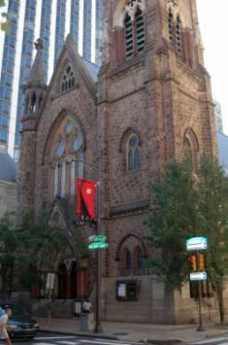
|
| First Presbyterian Church |
The Executive Director, Robert Jaeger, recently described to the Right Angle Club how the Partners operate. First of all, the Constitutional separation of church and state makes it difficult to seek funding or even advice from the Federal government. Pennsylvania has been less hesitant than most states in this regard, but even here the issue of fund-raising is a central issue. One only has to look at the Aztec and Mayan religious sites in Mexico to grasp that there are circumstances when the parishioners of a religion may have completely died out, but their monuments justify state assistance. Private, nondenominational philanthropy seems the easiest route for a society to take, in avoiding the obvious political and legal entanglements of seeming to assist one denomination more than others.
And then there are architectural issues;, can the building be saved at a reasonable cost, is it truly a unique or outstanding piece of art, can a reconstruction go ahead in an incremental way, are the necessary stone or other materials any longer obtainable, do the workman skills exist? In addition to these issues which are commonly presented to a congregation, there are issues they probably have never considered. As congregants move from center-city to the suburbs, they become commuters to church, largely out of touch with the local community and its activities. A survey conducted by the Partners suggests that 81% of the activity which takes place in church buildings on weekdays is conducted by and for non-members of the church; if the two groups lose touch with each other, opportunities are missed, and eventually there may be unnecessary friction. On the other hand, those non-religious activities probably escape the legal prohibitions against government assistance, and may suit themselves as vehicles for indirect government support. The approach has so much promise that Partners for Sacred Places has devised a computer program on their website which provides a way for congregations to assess their assets, and their problems. In fact, the organization conducts extensive training programs for church preservation, and has been forced by the size of the demand to exclude churches that are clearly failing beyond reasonable hope of recovery by their church membership.
The Partnership was originally founded by consolidation of the New York and Philadelphia organizations, to make a stronger national effort. But now things are going the other way. New chapters are springing up in Texas and California. Partners for Sacred Places is obviously proving to be a good idea, effectively managed.
WWW.Philadelphia-Reflections.com/blog/1269.htm
Tree Huggers: Delaware Valley College
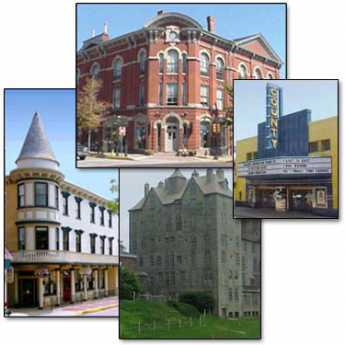
|
| Doylestown, PA |
At the time when Philadelphia and New York were both occupied by the British during the Revolutionary War, a backwoods highway connected the thirteen colonies. Doylestown is 35 miles due north of Philadelphia City Hall, at the point of intersection of this variant of the Ho Chi Minh Trail with the path which Philadelphia Tories took in their flight to Kingston, Ontario. No doubt there were some interesting conversations in Mr. Doyle's tavern at the crossroads.
Doylestown is also on the invisible border between the hegemonies of Philadelphia and New York, where descendants of German and Quaker farmers make a cautious contact with the distinctly non-Quaker artists and writers fleeing south from New York. James Michener and Pearl Buck once represented Philadelphia in the cultural stew with New Yorker ex-patriots, Somehow in this interface, a place is found for the Delaware Valley College, which started life in 1896 with Jewish founders of the National Farm School. The original board of trustees included such names as Gimbel, Lit, Snellenburg, and Erlanger, but the three-year curriculum was entirely agricultural. The founder himself was Joseph Krauskopf, who got the idea after an inspiring interview with Count Leo Tolstoy.
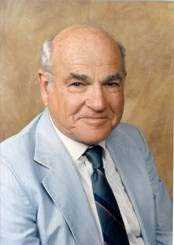
|
| Baruch Blumberg |
From a single building which served as classroom and dormitory, the college has grown into a four-year institution in numerous buildings scattered over a 570-acre plot with a second 120-acre farm in Montgomery County. The school is determinedly non-sectarian, and for forty years has been coeducational. It has had several changes of name, from the National Farm School, eventually to its present name. The curriculum has expanded as well, with masters degree programs in business and education. Baruch Blumberg, the Nobel Prize winner in Medicine, maintains an office there, and it is clear the college means to shift its emphasis toward the scientific basis of agriculture and the environment. It's also pretty clear that rising agricultural prices will soon re-establish agriculture as a dominant feature of our economy, although agriculture in the modern sense is quite a distance from farming in the old sense, and requires a different sort of educational preparation.
The Right Angle Club of Philadelphia recently heard from Joshua Feldstein the chairman of the board of trustees, and the brand-new president, just moving in from Columbia University. Sixty-eight years of driving ambition is personified in one, and the bright shining future in the other. We wish them well.
By the way, the tree hugger nickname comes from a campus tradition of this college, very much an active ceremony, of hugging the 400-year-old oak standing beside the president's house on the campus. The College, of course, is 250 years younger than the tree.
WWW.Philadelphia-Reflections.com/blog/1295.htm
Onward, Christian Soldiers
Among the ten largest cities in the United States, Philadelphia at 24% has the highest poverty rate. Why that should be so, and what should be done to change it, are questions for another article. Meanwhile, many helpless hopeless people need immediate help with problems of daily survival. No doubt, Philadelphia's long history of practical charity has acted as a magnet for victims of social problems caused elsewhere, and many of our locals who deserve some blame have moved away to more promising environments. For those who remain and want to help the immediate need, these things don't matter, just so long perhaps as emergency measures do not interfere with long-term solutions.
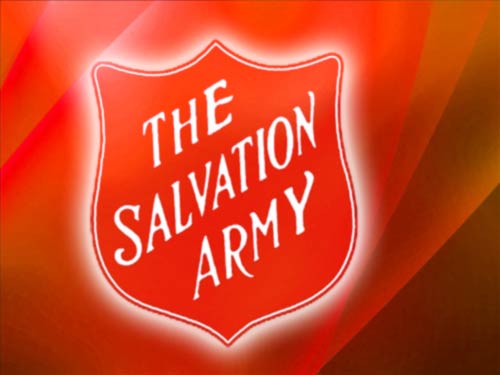
|
| Salvation Sign |
Among many private relief efforts, the Salvation Army is widely acknowledged to be the most efficient and most effective, as well the largest. Before the big event in 2004, it had a $3 billion budget and 3 million volunteers; an army, indeed. Except for Quaker charities, which mean to spend nothing on solicitation except through their own example, the Army spends a notable record of 91% of its budget for direct relief. In Philadelphia, they have 9 community centers, 8 residential centers, and 2 children's shelters. This is the largest charity in the United States, with branches in 110 other countries. There are 65,000 homeless people sheltered, every night.
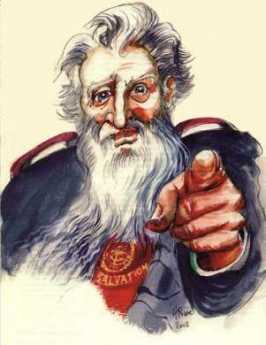
|
| William Booth |
A moment should be spent on the history of the Army. It was founded by William Booth, who was a London pawnbroker before he became a Methodist minister. Sir Arthur Sullivan wrote "Onward, Christian Soldiers" in 1871 a decade before it became so aptly associated with the Salvation Army, and indeed before it became attached to the words of Sabine Baring-Gould . Originally the music had to do with St. Gertrude. The militarism of the organization has offended some people, even elders of the Methodist Church, and the Christian emphasis offends non-Christians. United, or Community, Funds are miffed that the Army usually will not agree to limit its solicitations to their umbrella, and modern sophisticates scorn the 19th Century traditions of Christmas Kettles, and such like. Since the main emphasis of the Army has been on relieving the problems of the Industrial Revolution, like alcoholism, drug addiction, prostitution, some see an implied criticism of modern progress, or of capitalism, or the entertainment business in general. Some people don't like the fact that most of the causes of poverty could be described as self-inflicted. You simply can't satisfy everybody. But when the rehabilitation of alcoholism and drug addiction generally carries a success rate of 25%, the Salvation Army approach -- no matter what you may think of its symbols -- is able to defend the claim of 65% success. If you don't like "Human Needs in Jesus' Name", just try "Practical Success in a Difficult Field" for a subtitle.
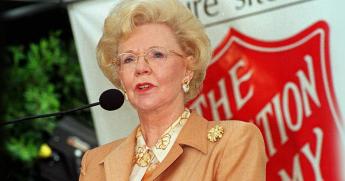
|
| Joan Kroc |
It thus becomes understandable that when in 2004 Joan Kroc, the widow of the founder of McDonalds Hamburger chain, decided to leave her estate of $1.5 billion to relief of the poor, she chose the Salvation Army to run things for her. Her interesting will divide the country into four parts, with 28 cities to receive $36 million grants for the construction of community centers, plus an equal amount for the endowment to run them. The size of the grants was calculated to force the local cities to match them (Philadelphia still has $20 million to go) and the endowments specify no income to be derived if the amount falls below the original $36 million, or otherwise to be limited to a 5% spending rule. She was perhaps optimistic that investment advisors could regularly produce a 17% return, and really truly optimistic if she believed our government could restrain inflation within those bounds. But a sharp business mind shines through these covenants, a very necessary ingredient of successful philanthropy.
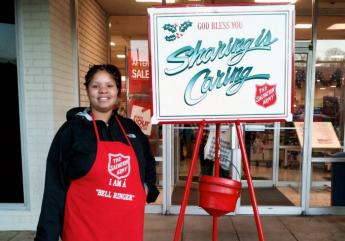
|
| Salvation Workers |
Mrs. Kroc wanted these centers to be located in the areas of worst need; that explains the choice of a 12-acre plot in Nicetown, at the corner of Wissahickon and Hunting Park Avenues. The area now surrounding a former factory for the Budd Company has a 35% poverty rate. But after 2009 it will have an aquatic center of several swimming pools, gyms and fitness centers, a computer laboratory, arts and performing theater centers, and other more traditional Salvation Army facilities. It will also have 27 other American cities with comparable centers to share experiences with, to compete against, and to be put to shame by Philadelphia's superior ideas. We hope.
www.Philadelphia-Reflections.com/blog/1425.htm
On the Subject of Rights
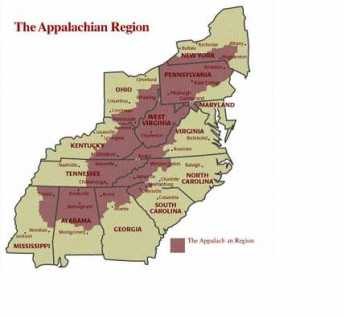
|
| Scotch-Irish Presbyterians of Appalachia |
MOST Americans of the 18th century regarded themselves as members of some minority group. The constitutional Founding Fathers, mindful of Cromwell and the English Civil War, were concerned that majority rule might evolve into tyranny. They searched to protect minorities. Because everyone could imagine being outvoted on some dispute, minority status was a universal American concern about democracy. There was a particularly hot political center of Bill of Rights agitation among Scotch-Irish Presbyterians of Appalachia which persists after two centuries, consequently among Southerners and western Pennsylvanians. In those strongly religious days, it seemed self-evident minorities had "divine" rights, conferred by God, which legislatures must not violate, and legislatures repeatedly seemed to agree. As dissenting minorities later became increasingly secular, the language of rights shifted to "natural" rights, without changing much else. Created by the purely logical analysis of the Enlightenment: a right was something anyone would willingly confer to others in order to preserve it for himself. In more contemporary language, the evolving demand is now for "human" rights, whose mystical authority grows from the intensity with which it is demanded. Although "Vox populi" sounds Roman, the concept of infallibility ("Vox Dei"), is an outgrowth of victory in the American Revolution. Underneath semantic wrestling, one essential is demanded: no government, whether by the king or elected majority, may overrule it. The unthreatened majority easily wearies of such agitation and remains more pragmatically concerned with efficiency, peace, and prosperity. Our two political parties began with Bill of Rights outcry, one party appalled by the French Revolution, the other applauding its feisty spirit.
 A little rebellion now and then is a good thing . . . .It is a medicine necessary for the sound health of government... God forbid we should ever be twenty years without such a rebellion. The people cannot be all, and always, well informed. The part which is wrong will be discontented, in proportion to the importance of the facts they misconceive. If they remain quiet under such misconceptions, it is lethargy, the forerunner of death to the public liberty . . . . and what country can preserve its liberties, if its rulers are not warned, from time to time, that these people preserve the spirit of resistance? Let them take arms. The remedy is to set them right as to the facts, pardon and pacify them. What signify a few lives lost in a century or two? The tree of liberty must be refreshed, from time to time, with the blood of patriots and tyrants. It is its natural manure. 
|
| Thomas Jefferson, 1787 |
The founders of the American republic arrived at a compromise formula: strengthen majority-rule government to a point where it can be effective, but keep government too weak to tyrannize a minority. This Constitutional effort first grew out of a general perception that the Articles of Confederation were too weak to be effective, so the new federal government must be able to control the states in a small number of specified areas. But having achieved that, a reverse concern immediately arose. Since slaves and poor people would probably always outnumber rich ones, how can a democracy be prevented from freeing slaves, or poor people from voting themselves the property of rich ones? This concern was surely heightened by earlier maneuvering by two Virginians. Madison and Washington pressed to have Convention delegates be made up of prominent people, preferably former officers of the Continental Army. Their plan to ensure ratification was for legislatures to make way before a Convention of celebrities. It probably did not occur to the two Virginia plantation owners that this selection process might seem to be purely motivated to ensure the best interests of rich people. Rich people usually have power, regardless of not having a majority. Except for perhaps Gouverneur Morris, Convention delegates, however, were not aristocrats but self-made men, and with few exceptions successful ones. It remains hard to argue with their instinctive reaction that if laws make it impossible for those who have been successful in the past to become a self-made success, then it is impossible to see anyone achieving success. Eighty years subsequently the slave component of this issue was finally settled, but sectional bitterness took its place.
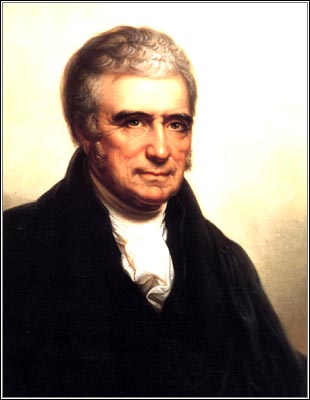
|
| Chief Justice, John Marshall |
The Constitutional Convention weakened the new government to avoid its misuse by a popular majority. They designed separation of its powers, perhaps hoping a balance of power would develop among the Legislative, Executive and Judicial branches, each selected in different ways. As the matter was finally ratified, it seemed a little inadequate. James Madison, in particular, rebelled against the final step of giving the Supreme Court the power to review for constitutionality the laws passed by Congress and signed by the President. It remained for the fourth Chief Justice, John Marshall, to assert judicial review in 1803, sixteen years after the Constitutional Convention. Perhaps with an eye toward symbolism, he did so in a case called Marbury v. Madison.
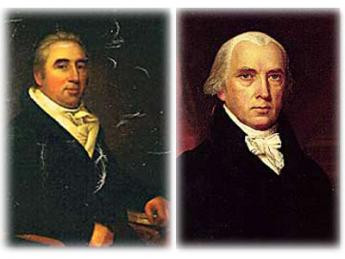
|
| Marbury v. Madison |
This case, strengthened and amplified by later cases with the same outcome, was to enshrine the Constitution as the capstone of the enforcement system of the United States, with all lesser laws consistent with constitutional powers enumerated -- powers implied, and powers are forbidden. This capstone structure, rather than American provincialism so noticed by Europeans, explains why American law has drifted from common law to statutory law, while references in Supreme Court opinions to viewpoints in foreign law are greeted with derision. Foreigners are not given a vote in our system, and our system is grimly determined to recirculate the opinions of its own citizens through the system, especially through the choke-point of the Constitution. In biochemical terms, the Constitution is the rate-limiting factor. It is far too late to try to make it easier to amend the Constitution, just as it is surely too late to eliminate the Electoral College for selecting the President. Too many balance-wheels have been hooked to these fundamentals. Blame it on interest groups if you please, but seriously disturbing these fundamentals will prove unsettling enough to undermine any interest groups that assail them.
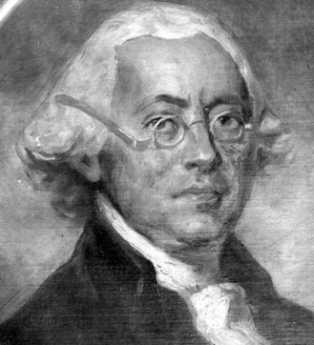
|
| James Wilson of Pennsylvania |
With the blocking of other avenues to constrain majority rule, the system has possibly provided a new one, which may someday be named after James Wilson of Pennsylvania. Wilson lived at the corner of 3rd and Walnut, making it convenient to sign both the Declaration of Independence and the Constitution. Although he spoke 168 times at the Constitutional Convention, his name is most often associated with the idea that basic legal principles should be part of the general background of all educated citizens. Sometimes referred to as the founding professor of the first law school, the University of Pennsylvania, Wilson recognized that the actual practice of the law soon drifts from legal principles to settling on legal mechanics. Law students eventually come to learn that what matters most is what a judge recently handed down as an important opinion setting a new precedent. Step by step the law moves from principles to precedents, and from early precedents to recent precedents. The system is said to be a higher variant on the scientific method -- hypothesis, tests of the hypothesis, modified hypothesis and then tests of the modified version -- first created by Sir Francis Bacon. The law, in short, drifts away from Original Intent but does so proudly, denying a subversion of original principles but asserting a reasoned response to actual experience. Perhaps, in this enlightening process, new human rights can be discovered. Such as a right to abortion based on a right to privacy, based on something else you will have to read the original opinion to recall. It is not necessary to be a fundamentalist Christian to be alarmed by this process when it travels so far from the choke point of the Constitution, overturning dozens of state laws as it goes. Perhaps the most serious criticism of Roe v. Wade is that only two alternatives exist for those who wish to modify it: either undermine the Supreme Court by packing it with supporters of change or else amend the Constitution, which would be nearly impossible to do. Entirely too many plain non-lawyers who have no objection to abortion have read the Constitution and are now mistrustful. Mistrustful of the reasonings of Justice Blackmun, of the profession which acquiesced to his action, and of the intellectual migration process being defended. Whether they know it or not, they are followers of James Wilson, of 3rd and Walnut, Philadelphia.
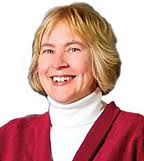
|
| Jennifer Nedelsky |
Jennifer Nedelsky is a Canadian lawyer who has been active in promoting an alternative to our system of using a constitutional right as a legal "trump card for displeasing laws.", as well as the failed European attempt to invent dozens of new human rights as a way of limiting government power. In Canadian law, a feature is called the "time-limited notwithstanding clause." The legislative branch in Canada is permitted to pass laws which violate a constitutional right, "notwithstanding that right for five years". It is possible to understand the appeal of this legal safety valve, to wait out the popular appeal of a mere fad, or to provide emergency relief in the face of unexpected circumstances. Some of the enduring problems with the legislation passed during the Roosevelt court-packing era might have been more generally acceptable with this clause attached. And it might even address the temptation recently embraced by Rahn Emanuel, that no crisis should ever be wasted. It is true that some appalling legislation does occasionally turn out to be useful. More often, however, it is a well-intended and highly acclaimed law which turns out to create a muddle.
Ultimately, however, we are likely to fall back on the comfort that our Constitution more or less as originally created, has lasted over two hundred years while no other constitution can match that claim. Others have their proposed systems but we have our proven one.
Gross National Happiness In Bhutan
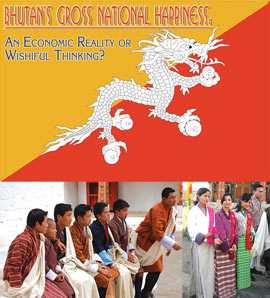
|
| Gross National Happiness |
When feudal and primitive cultures come in contact with more advanced ones, their response is apt to be to reject modernism in all its forms and trappings. The Pennsylvania Amish, the American Indian, and most Middle-Eastern countries display this response. After a while, the advanced countries just give up appealing to them, and resort to extermination, with results that are very sad. The Kingdom of Bhutan has a 28 year-old king who went to Oxford, a long-rejected Mongolian Genghis Khan heritage, and a reflective self-denying Buddhist religion. Twenty-five Stanford professors who every year come and study the place may possibly contribute something to locally prevailing ideas as much as they learn from them. In any event, the charming Bhutan response of Karma Galay (Gross National Happiness) ought to be deeply thought-provoking.
Unlike so many other countries in this position, Bhutan does not resist progress but fully anticipates it. They also anticipate the disorder which will result when their young people watch satellite television and want to have some of those consumer durables for themselves. Buddhist culture teaches you to keep your life simple, and the root of all observable evil is -- craving. What's obviously more important is to be happy, so why not measure happiness in some Western way and see how you are collectively doing. From this comes the idea that since economic strivers and cravers measure their economic progress by Gross National Product, why not apply a statistical approach to what Buddhists truly want, which is happiness, and see how they are making out?
That includes a broad methodology. Buddhist teaching emphasizes never harming any sentient creature, but rather devoting constant attention to removing impediments to happiness from themselves and others. A country dead-set against consumerism recognizes that Internet and TV are going to assault them with consumerism, and they want to preserve an open mind about whether it is improving happiness or injuring it. Most American parents would agree that a case can be made in both directions, so let's be fair, let's measure it. No doubt many of the monks harbor a suspicion that happiness will lose, and proven deterioration in GNH can be used to show why they should close their borders and hunker down. Others, probably including those Stanford professors, probably anticipate that a demonstrated rise in GNH can be used to pacify the conservatives whenever the facts show the whole country is happier if they substitute something else for rancid butter tea, rice and potatoes. On a less grandiose level, perhaps different strategies of education can be tested as Bhutan goes from the Fifteenth Century to the Twenty-first, relieving stress when it appears, and augmenting community contentment if something probably has that result.
Maybe all Americans should give some thought to what is being said, here. Maybe in a strange way that's what Castro was failing to do in Cuba, and Cuba could now become an experimental laboratory for GNH measurement. Or Iraq or Russia. And of course, let's measure the consequences of our own cravings for achievement. Is, or is not, most of this self-denial just a lot of sour grapes? Let's give some thought to this, because if Thou shouldst mark iniquity, Oh Lord, who shall stand?
A Just Society
Recently, Chip Kelly prodded us into trying something new; it was a straight-faced rise-from-your chair discussion of the meaning of a just society. Perhaps that should be capitalized: A Just Society.
It could be that the club has for so long adopted a habit of fixed presentations, that members begin to look around for a mechanism, any mechanism, to create a general conversation among a group of fellows who have grown to know each other very well. But the tone of the ensuing remarks suggests something more is afoot, very likely growing out of the current economic Recession, with the new President calling for disruptive Change of a redistributionist sort. The old saw has it that politics and religion are best avoided in conversations among friends, but once every eighty years cannot do much damage.
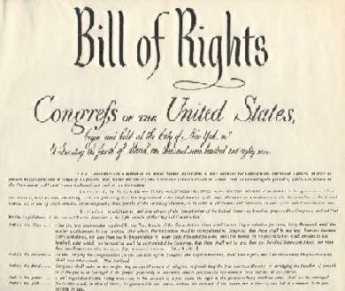
|
| Bill of Rights |
Allusions to the Marxist doctrine of "from each according to his ability, to each according to his need" were actually offered, and praise was openly made of the Chinese Communist system. To which were rejoined remarks about the 40 million Chinese who died in the Cultural Revolution, and the apparent effort to add a new right to the Bill of Rights, this one called the right to a job. This suggested right implies that people have a right to insist that someone else start a business; that's not how businesses have been started in the past. That such a broad new entitlement could be suggested at a time when the nation is plainly unable to afford the existing health and retirement entitlements -- makes it clear this discussion is not entirely about economics. People in the general public are tentatively feeling each other out on these sensitive subjects, and not always pleased with what they discover. Although the demeanor is invariably civil and tentative, one has to worry that hot words are not far away.
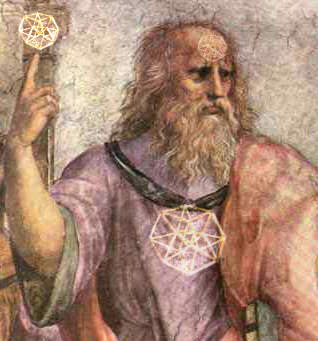
|
| Plato |
Even more remarkably, a lawyer stood to warn against excessive lawyering; the physician who followed him pointed out that all Utopias since Plato's have suggested that physicians should run any utopia -- a questionable notion in view of the examples of Che Guevara, or Assad the current dictator of Syria, or the behavior of German doctors under the Nazi regime. In fact, the behavior of medical students has traditionally been rowdy. It isn't the training that makes the characteristic personality of a physician, it is the experience of practice. Put all doctors on salary, and you may not get the same result.
First Amendment: Separation of Church and State
 Amendment 1 Congress shall make no law respecting an establishment of religion, or prohibiting the free exercise thereof; or abridging the freedom of speech, or of the press, or the right of the people peaceably to assemble and to petition the government for a redress of grievances. 
|
| The First Amendment |
Simplified histories of America often declare that other Western Hemisphere colonists mostly came to plunder and exploit; whereas English Protestant colonists came with families to settle, fleeing religious persecution. That's a considerable condensation of events covering three centuries, but it is true that before the Revolutionary War, eleven of the thirteen American colonies approximated the condition of having established religions. Massachusetts and Virginia, the earliest colonies, had by 1776 even reached the point of rebelliousness against their religious establishments. The three Quaker colonies (New Jersey, Pennsylvania, and Delaware) were late settlements, in existence less than a century before the Revolution, and still comfortable with the notion they were religious utopias. While differing in intensity all colonials respected the habits of thought and forms of speech, natural to utopians residing in a religious environment.
Once Martin Luther had let the Protestant genii out of its religious bottle, however, revisionist logic was pursued into its many corners. Ultimately, all Protestant questers found themselves confronting -- not religious dogmatism, but it's opposite -- the secularized eighteenth-century enlightenment. Comparatively few colonists were willing to acknowledge doubts openly about miracles and divinity. However, private doubts were sufficiently prevalent among colonial leaders to engender restlessness about the tyrannies and particularly the rigidities of the dominant religions. To this was added discomfort with self-serving political struggles observable among their preachers, and alarm about occasional wars and persecutions over arguably religious doctrines. Arriving quite late in this evolution of thought -- but not too late to experience a few bloody persecutions themselves -- the Quakers sought to purify their Utopia by eliminating preachers from their worship entirely. Thus, the most central and soon the most prosperous of the colonies made it respectable to criticize religious leaders in general for the many troubles it was believed they provoked.

|
| London Yearly Meeting |
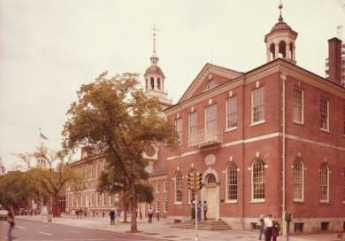
|
| Congress Hall |
In all wars, diplomatic arts and religious restraints get set aside as insufficient, if not altogether failures for an episode of utter barbarism. In the Revolution, some Quakers split from pacifism and became Free Quakers, many more drifted into Episcopalianism, never to return to pacifism. The Constitutional Convention of 1787 was eventually held in this persisting environment; the previous service in the War counted for something, and the great goal was to strengthen the central government -- for more effective regional defense. A great many leaders were Masons, holding that much can be accomplished by secular leadership, independent of religious reasonings. Neither Washington nor Madison revealed much of their religious positions, although Washington the church attender always declined communion; Franklin and probably Jefferson were at heart deists, believing that God might well exist, but had wound up the universe like a clock to let it run by itself. The New England Calvinist doctrines have since evolved as Unitarianism, which outsiders would say theologically is not greatly different from deism. Physically surrounding the Philadelphia convention was a predominantly Quaker attitude; entirely too often, preachers get you into trouble.
When the first Congress finally met under their new constitution, they immediately confronted over a hundred Constitutional amendments, mostly submitted from the frontier and fomented by Jefferson and Patrick Henry, demanding a bill of rights. The demand within these amendments was overwhelming that the newly-strengthened central government must not intrude into the rights of citizens. Recognizing the power of local community action, states rights must similarly be strengthened. Just where these rights came from was often couched in divine terms for lack of better proof that they were innate, or natural. From a modern perspective, these rights in fact often originated in what theologians call Enthusiasm; the belief that if enough people want something passionately enough, it must have a divine source. The newly minted politicians in the first Congress recognized something had to be done about this uproar. Congress formed a committee to consider matters and appointed as chairman -- James Madison. Obviously, the chief architect of the Constitution would not be thrilled to see his product twisted out of shape by a hundred amendments, but on the other hand, a man from Piedmont Virginia would be careful to placate the likes of Patrick Henry. The ultimate result was the Bill of Rights, and Madison packed considerably more than ten rights into the package, in order to preserve the cadence of the Ten Commandments. The First Amendment, for example, is really six rights, skillfully shaped together to sound more or less like one idea with illustrative examples. Overall freedom of thought comfortably might include freedom of speech (and the press), along with freedom of religion and assembly, and the right to petition for grievances. But what it actually says is that Congress shall not establish a national religion. Since eleven states really had approximated a single established religion, the clear intent was to prohibit a single national religion while tolerating unifications within the various states. Subsequent Supreme Courts have extended the Constitution to apply to the states as well, responding to a growing recognition that religious states had the potential to get so heated as to war with each other. No matter what their doctrines, it seemed wise to deprive organized religions of political power as a firm step toward giving the Constitution itself dominant power over the processes of political selection.
At first however it was pretty clear; one state's brand of religion was not to boss around the religion of another state. Eventually within one state, Virginia for example, the upstate Presbyterian ministers were not to push around the Episcopalian bishops of the Tidewater. Madison and Jefferson saw well enough where political uprisings tended to start in those days, in gathered church meetinghouses. In this way, an Amendment originally promoted to protect religions had evolved into a way to ease them out of political power. The idea of separation of church and state has grown increasingly stronger, to the point where most Americans would agree it defines a viable republic. No doubt, the spectacle of preachers exhorting the same nation in opposite directions during the Civil War, settled what was left of the argument.
For Quakers, the most wrenching, disheartening revelation came when they were themselves in unchallenged local control during the French and Indian War. The purest of motives and the most earnest desire to do the right thing provided no guidance for those in charge of the government when the French and Indians were scalping western settlers and burning their cabins. Yes, the Scotch-Irish settlers of the frontier had unwisely sold liquor and gunpowder to the Indians, and yes, the Quakers of the Eastern part of the state had sought to buffer their own safety from frontier violence by selling more westerly land to combative Celtic immigrant tribes. A similar strategy had worked well enough with the earlier German settlers, but reproachful history was not likely to pacify frontier Scots in the midst of a massacre. The Quaker government was expected to do what all governments are expected to do, protect their people right or wrong. To trace the social contract back to William Penn's friend John Locke was too bland for a religion which prided itself on plain speech. Non-violent pacifism just could not be reconciled with the duties of a government to protect its citizens. The even more comfortably remote Quakers of the London Yearly Meeting then indulged themselves in the luxury of consistent logic; a letter was dispatched to the bewildered Quaker Colonials. They must withdraw from participation in a government which levied war taxes. And they obeyed.
Although the frontier Scots were surely relieved to have non-Quakers assume control of their military duty, the western part of the state has still neither forgotten nor forgiven. In their eyes, Quakers were not fit to be in charge of anything. Quaker wealth, sophistication and education were irrelevant; only Presbyterians are fit to rule. A strong inclination toward pre-destination lurks in that idea. Once more, the attractiveness of clear separation of church and state is reinforced.
The French and Indian War in fact had turned out fairly well; most of its victories were located on the European side of the Ocean, anyway. But twenty years later the Revolutionary War turned into a reassertion of the British conquest of all of North America, not merely the part to the west of the Appalachian mountains. To Americans, this came in the form of a demand for taxes to help pay off the costs of a war which greatly benefitted them. The Quaker colonies did not fully sympathize with rebellion, but they had once given up control of a territory larger than England rather than pay war taxes, so they were resistant to both sides in the dispute. Many prosperous and educated Quakers solved their dilemma by fleeing to Canada, but the ardent Quaker proposal for dealing with a coercive British government was not at all impractical. John Dickinson, in particular, argued that since the British motives were economic, success was most likely to come from economic counter-pressure, adroitly leveraged by three thousand miles of intervening ocean. That was shrewd and potentially effective. But the Scots-Presbyterian position was simpler and more direct. If you want us to fight your war, you are going to have to fight to win. The Virginia Cavaliers were probably more likely to win a conventional war if put in charge, but the blunt and almost savage frontiersmen were ideally suited for what has come to be called guerrilla warfare. Washington was a leader, French money was welcome and Ben Franklin was a diplomat, but the clarion call to this particular battle was the voice of Patrick Henry. All in all, the issue of established religion was far more complicated than merely the affirmation of a right to free exercise of religious belief. What united all the colonies was a recognition that, using the church, an arm of the government was just as likely to cause trouble as conducting the state as an instrument of church interests. Eventually, considering how religious America was at the time, there was remarkably little resistance to the firm separation of Church and State in its Constitution.
Christmas Reflections
My father in law, a prominent obstetrician in Binghamton, New York, regularly took his family to New York City sometime between Thanksgiving and Christmas. The three-day junket was described as a visit to do Christmas shopping. Another relative made similar trips from home in Tyler, Texas. Several of my patients made such visits to Philadelphia from their homes in West Virginia, stopping by to make a medical visit to me during the same trip. From the seasonal crowds in Penn Station and in the shops on Chestnut Street, it was clear that an annual visit to the big city was a common custom in the upper crust of small to medium-sized cities, for whom the more expensive shops of the bigger city provided big-ticket items bought infrequently, and the distinctive luxuries which made them stand out from the socially less-enlightened back home.
These shopping visits were not confined to purchasing, although that was the main focus. It was a time to go to the theater, orchestra and opera, maybe an occasional ballet and art exhibit. The choice of a large city might be related to returning to the University, or another period of professional training for a drop-in visit because these associations made it possible to observe the latest trends and innovations, a useful issue in the smaller towns. The ladies could observe the trends in fashions, and everyone would have a chance to dress up in the better hotels and restaurants. This recirculation between the small towns and the big one at the hub unified the region, establishing hierarchy rather widely. And it hardened traditions in the big city, since islanders tend to return to the same hotel, restaurants and social gathering spots even more than the local residents do; there isn't time in a brief visit to shop for new venues, unless the trip itself reveals that times and places have somehow changed in an important way.
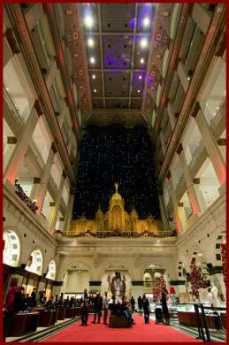 |
| Wannamakers Pipe Organ |
That's all changed, today. The pipe organ at Wannamakers, the cluster of department stores around Eighth and Market, the theater district, Caldwell's and Bailey Banks and Biddle upscale jewelers, the fancy women's clothing shops on Walnut and Chestnut Streets, and the bespoke men's tailor shops -- have disappeared in a slew of retail despond. The excited crowds of upscale shoppers have dwindled, at least in the center city shopping area. Students of sociology point to the decline of the department store as a central commotion in the center of this phenomenon, blaming that in turn on the spread of national brand names by television and more electronic forms of advertising. The department store did your comparison shopping for you, putting its brand name on the product and placing its reputation behind the choice. If Wannamaker could determine that a Japanese radio was of high quality, it became Wanamaker's radio. Today, Samsung and Sony do their own advertising, sell their products through outlets in the suburban malls. Philadelphia residents enjoy as much retail choice and pricing as ever, they just shop in the malls located along the Interstate circumferential highway, just outside what used to be the outermost suburbs. So the volume of retail shopping among Philadelphians probably hasn't changed a great deal; it has merely shifted to the malls where there is parking for your car to transport goods which the department stores used to deliver. It is the annual visits from the subordinate small cities at moderate distance that has disappeared. Small cities now have their own shopping malls, carrying national brand name merchandise. Losing this source of business, the associated entertainment industry has declined to a point below sustainability for most of them -- in the center city hub. Along with the disappearance of this regional recirculation, small cities have lost their sense of affiliation with a bigger one. The small-town professional class which was the biggest participant in this annual migration is professionally more isolated but so are their clients. The upper crust of the small town now must constrain its horizon to the smaller town professionals, with their lesser claim to distinction. For a while, the disparity can be overcome by specialization, but ultimately the distinction of the big-city specialist rests on assembling a richer experience from wider drawing power. In Medicine at least, the insistence of Medicare on paying the same fee for the same service lessens the economic incentive for self-repair of the system.
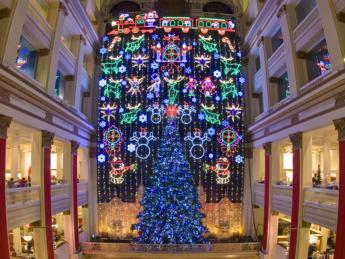 |
| Wannamaker's Christmas Light Show |
Meanwhile, nature of Christmas itself is becoming standardized. Fewer people make their own Christmas presents, whether through knitting or baking. If the process of commercial gifts goes the full distance, eventually the joy of searching for exactly the right gift will seem more like paying your taxes. These things already cost too much, are worth too little, and neither the process of giving a gift nor the process of receiving a welcome gift will retain much joy. Or significance. What was until recently a Christian religious celebration has become diversified into a generic "Happy Holiday", presumably in order to avoid offense to other religious groups who themselves likely persist in their old traditions of ritual greeting. The assault on Christmas is however not primarily cultural, but commercial. The silent ostentation of elaborate outdoor lighting and the secular versions of Christmas carols endlessly replayed over loudspeakers in stores, probably have a more destructive effect on the community winter solstice ceremony than any competition for religious adherence.
The coming next step in the modification of the Christmas season is dimly visible in the assault of pocket telephones on the suburban shopping mall. After enjoying only a few years of victory over the center city department store, malls must now confront shoppers with portable telephones containing a camera and GPS geographical locator. Seeing something he likes, the shopper of the future can photograph its bar code in the shop display, and be immediately told of all the neighboring stores which sell the same product for a lower price. Electronics are thus about to turn Christmas shopping into an electronic auction, no doubt making it eventually easier to do the shopping from home.
What Christmastime means to me is a recollection of what it once was like at the nation's oldest hospital, and not so terribly long ago, at that. Before 1965, the Pennsylvania hospital had been staffed for centuries with unpaid student nurses, working under the direction of unpaid doctors in training, supervised by volunteer attending physicians. Of the five hundred beds, only forty were filled with paying patients and the rest were housed in long communal halls. On Christmas morning at 7 AM, the drowsy patients were astonished to be awakened by a procession of very pretty student nurses, led by Miss McClellan the grim-looking Directress of nursing, and followed by a handful of internet and residents, all singing Christmas carols and carrying lighted candles in the dark. Miss McClellan herself was never heard to utter a note, but the student nurses had been trained in four-part harmony, and the interne doctors were enthusiastic followers. The faces of the poor old indigents in the beds were filled with pure delight as we traipsed past, chanting of the travels of Orient kings, the pregnancy of virgins, and other miracles of the occasion.
What's Different About Kosher ?
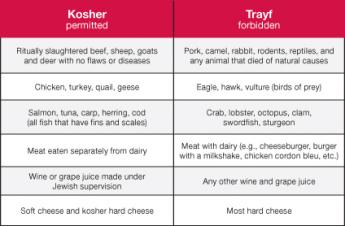
|
| Kosher Foods |
About half of the labeled food products in a typical supermarket are designated Kosher, displaying a "K". That seems remarkable when only about 1 million American Jews are observant or Orthodox, thus eating only Kosher food for religious reasons. So, the Chemical Heritage Foundation recently decided it would be interesting to examine the definition and details of the Kosher designation, which presumably has some chemical basis. The CHF was right about the interest in the topic; attendance at the auditorium was packed. The following is entirely derived from what was discussed there.
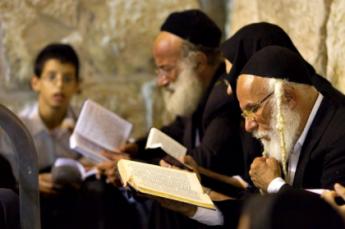
|
| Rabbi |
One might have carelessly supposed that a religious designation of food products would have an exclusively religious basis, probably related to preparing the product according to a religiously defined method or ceremony. That's essentially true, but what is unexpected is that the choice of food to be included or excluded must obey a strict and extensive set of rules. The basis for the rules is found in the Old Testament, but specifics have been evolved by designated Rabbis, rather like the way the interpretation of the U. S. Constitution is left to the U.S. Supreme Court, and has considerably evolved in the process. An examination of these evolved rules is what leads other denominations of Jews to avoid the issue or even to decline to endorse it. That makes it rather awkward for chemists to understand the Kosher process in strictly chemical terms. For a perhaps extreme example, hard cheese but not soft cheese is strictly forbidden within Kosher rules. That's because the rules state that eating meat is fine, eating cheese is fine, but six hours must elapse between eating either one. What's forbidden, then, is a mixture of meat and dairy. Hard cheese is produced by exposing soft cheese to rennin, or rennet. Rennin is produced from the stomach of cows, so the interaction is deemed to be simultaneous rather than separated by more than six hours. It certainly is true that a chemical reaction between two ingredients is difficult to imagine if it is anything but a simultaneous contact between the two. So, chemists would have to agree that hard cheese involves less than a six-hour separation between meat and dairy. But most chemists would regard this interpretation to be somewhat strained; to punish people for disregarding it seems excessive. Whatever disagreement there may be is not based on the facts, but on the importance to be attached to them.
Similarly, most chemists would resist the idea that a chemical product derived from two different sources differs in any way at all. The most important example of this issue is glycerine, a common food additive. A fat consists of three fatty acids attached to glycerin; pure glycerin is produced by separating the fatty acids from it, and in any event, the fatty acids of pigs and cows are also chemically identical, at least in the view of chemists. Glycerin derived from pig fat thus seems to chemists to differ in no meaningful way at all from glycerine derived from cow fat. To those in charge of Kosher rule making, however, the difference in the source is vital, needing to be searched out in minute detail. Since Coca-Cola contains traces of glycerin, and the Coca-Cola manufacturer wished to have a Kosher label, the company somehow had to satisfy the Rabbinical demand that the sources and processing steps of the glycerin be identified in minute detail. Coca-Cola contains a secret ingredient which some believe is essential for the true Coke taste; the company was not going to reveal its processes. Somehow, this quarrel was resolved privately, although it is not easy for outsiders to imagine how it could be.
And so on. There may, of course, exist many Kosher rules which make perfect sense; the speakers did not go into that. What remains of general interest is the question why so many non-Orthodox Jews, in fact so many people who are not Jewish in any sense, insist on eating only food with a Kosher label. At the conference, it was explained that many people who have been told they are lactose-intolerant, or allergic to some protein, become fanatic in their fear of contact with such chemicals. That is, as a matter of fact, a common observation in many doctors' offices. These people seem to have developed the idea that they can trust the Orthodox rabbis to be even more fanatic than they are if anything more rigid and unyielding in their pursuit of particular exclusions. While that has driven many Jews away from Orthodoxy into other religious directions, it has served to reassure the health fanatics. The food manufacturers don't particularly care about the social features; if that "K" sells the product, they want to have it.
On hearing of these issues, one of my Jewish friends suggested an extension to Jewish kitchens. It was his view that if a real estate agent shows you a house with two or more ovens, two or more stoves, or even two or more kitchens, it probably had a Jewish owner at some time in the past. Multiple kitchen arrangements are much less likely to reflect an owner who likes to entertain a lot, than an owner who has been told of the six-hour mandatory wait between eating both meat and dairy, and has persuaded himself this rule extends to the separation of stoves. There's no great harm in any of these beliefs, of course, unless it is somehow represented that they improve the health of the believer, which would drag a highly reluctant Food and Drug Commissioner into a dispute he can't win, no matter how he rules.
Whatever the complete truth of all these suppositions, they lead the casual reader to let his thoughts meander. There's a similarity here to a great many other prohibitions and adherence, tenaciously adhered to, resulting in elections won and lost, provoking scorn heaped on non-believers. And even to totally unrelated legislation getting derailed because legislative representatives were unwise enough to take a stand on this one. Pro or con.
Unalienable Rights Before 1776
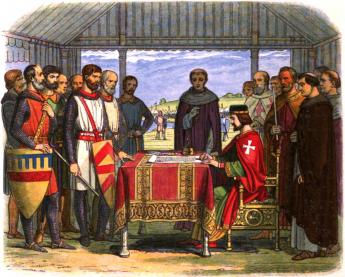
|
| Magna Carta |
In 1976, the bicentennial birthday celebration of the Declaration of Independence contained two major exhibits of its conceptual origins. Mr. H. Ross Perot of Texas loaned his copy of the 1215 Magna Carta, and the Proprietors of West Jersey loaned their 1677 original of William Penn's Concessions and Agreements to the colonists of New Jersey. The purpose of the exhibit was to emphasize the historical origins of the concepts within the Declaration, but even the language of the Concessions is remarkably similar, quite evidently lifted by Jefferson when he was writing. On one point, Penn had the better of Jefferson; he correctly wrote about inalienable rights, while somehow Jefferson gave us unalienable ones.
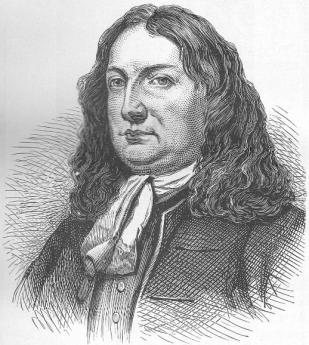
|
| William Penn |
The matter came up recently at a Socrates meeting of the Right Angle Club, where at least one member felt there was no such thing as a natural right, while others wavered. In discussing the rights which the Creator, William Penn and/or Thomas Jefferson may have given us, the various contexts must be held in mind. At the time of declaring our intention to sever relations with Britain's King, there was no Constitution to refer to as a source, and it was impolitic to assert the rights had been given by English kings, like King John. Therefore, the language cleverly short-cuts around the divine right of kings to make a direct connection between the Creator and the colonists. William Penn on the other hand, was a real estate promoter, offering enticements and assurances to prospective colonists who were naturally fearful of risking their lives in sailboats, only to face the possible tyranny of a vassal king who might be even worse than the anointed one. Not only did Penn renounce any suggestion of a Royal role for himself, but went to considerable length describing the legally binding concessions and agreements he was offering. The right of trial by jury, for example, became a right to be punished only by a jury of twelve of one's neighbors. He wasn't talking to lawyers, he was making important distinctions very clear to laymen. These were not rights given by a Divinity who could be trusted, nor something which grew out of Mother Nature. They were the personal promises of William Penn, in personal legal jeopardy of the English courts if he reneged on them. He even had a ready answer for those who discovered the religious language in legal documents -- the Quaker belief that, occasional appearances to the contrary notwithstanding, There is That of God, in every man.
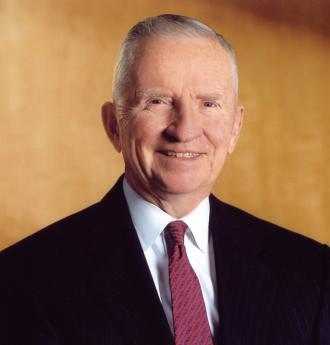
|
| H. Ross Perot |
As a small sidelight of the Concessions document, it had long been housed in the little brick hut on Main Street in Burlington NJ, where the Proprietors of West Jersey keep their treasures. The obscurity of these papers was probably their best protection, but the risk of displaying them in Philadelphia at the centennial brought out the need to ensure them, hence to appraise their value. The figure of four million dollars was kicked around. Ross Perot might have felt comfortable with this sort of expense as the natural cost of being a rare book collector, but it seemed highly unnatural to Quakers. Sometime afterward, the Surveyor General, William Taylor, was awakened by a call from Burlington neighbors that someone was trying to break in the roof to steal contents of the Proprietorship building. The burglars were unaware that underneath the shingles, the roof was actually made of concrete a foot thick. So the perps were frustrated in their aims, but Bill Taylor was greatly troubled by the implications, actually unable to sleep at night worrying about what was in his custody. So, in time the State of New Jersey constructed a suitable archives building, and the valuable documents were transferred up to Trenton. Time will tell what the Soprano State does with such a valuable possession, but at least the Quakers can now sleep at night.
Inalienable Rights Before the Magna Carta
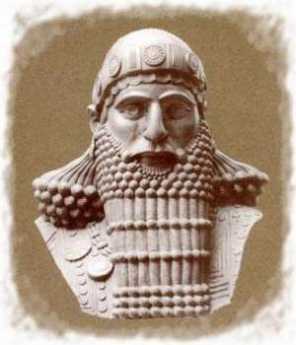
|
| Hammurabi |
Although we have had Judges for thousands of years, it's only one of the three branches of American government, and the last to be adopted, even in rudimentary form. Perhaps the framers felt the legal profession could handle the matter without much specification, just as at least so far, we have no cabinet minister or separate department for Medicine, in spite of its coming close to twenty percent of the national budget. At least it is certain that the award of a cabinet seat does not relate to the size of its national cost. The main function of the Supreme Court seems to be to enforce the Constitution on the elected branches, and the main rule is to limit the federal branches to making war and levying taxes. That's under constant attack, but at least it's the theory. An invisible rule is to avoid non-federal rules; we rejected the League of Nations, and essentially ignore the United Nations. The surest way to defeat a law is to say the Europeans have one like it.
This seems to be partly a human jealousy, quite similar to the way the federal government constantly seeks to invade the territory the Constitution gives to state legislatures. One of the central attractions of Roman citizenship was the set of rights afforded the citizens, and definitely not afforded to other people. St. Paul made good use of the rights of a Roman citizen, available to those who could announce civis Romani sum . These were, however, the exclusive gift of the Roman Senate, which for a long time Emperors feared to tamper with.
Chip Kelly of the Right Angle Club points out that Hammurabi intended the right of a tooth for a tooth and an eye for an eye as a limitation of rights. If someone offended you or your family, you were definitely not entitled to overreact by massacring his whole tribe but limited to exact equality of the punishment to fit the crime. An eye for an eye, tooth for a tooth -- and no more.
Somewhere, there may be a reasoned argument for natural rights or divine rights, but outside the French Revolution, it is a little hard to find anything but legal rights, as consistent rights which society, in general, has decided to give you. That's somehow related to the concept of extending those rights to everyone, which everyone would want to have for himself. Anything more restricted than that is not a human right, it is political favoritism. It may even be much of the reason the French and English rejected the European Union.
A cynic might say that an inalienable right is one which is impossible to bargain for. It will only be conferred if you are willing to die for it in a war which you win. When it comes down to it, that is the reason professional soldiers regard religious wars as the very worst kind and may just be a driving force behind the First Amendment.
REFERENCES
| Magna Charta: PartI Romance Part II Pedigrees | Amazon |
Great Bend: Joseph Smith Translates the Golden Plates
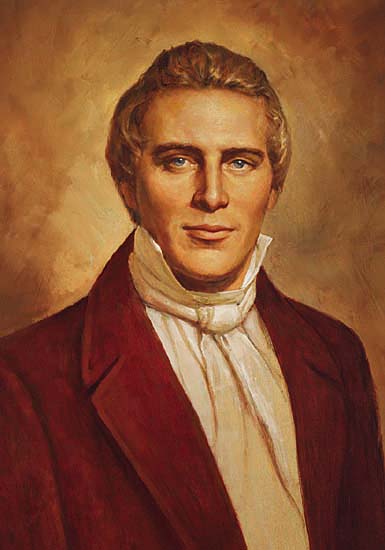
|
| Joseph Smith |
As the traveler up the Pennsylvania Turnpike Northeast Extension approaches the New York border, there's a chance for a fleeting glance at an exit sign pointing to Great Bend, without additional comment. The comment is definitely needed because a ten-mile detour at this point is rewarded by two interesting attractions. In the first place, the Susquehanna does indeed make a great bend there. Starting in Cooperstown, New York at a beautiful mountain lake which resembles Lake Geneva in Switzerland, the Susquehanna heads south for ninety-six miles and then turns around at Great Bend and goes back fifteen miles north to Binghamton. After that, it goes west for forty miles to Sayre and then goes south again as it picks up other branches. Greatly enlarged, it reappears to Turnpike travelers at Wilkes Barre. Thousands of travelers have sped up the wide valley without noticing that the same river which flows south from Wilkes Barre apparently starts flowing north at Great Bend. The traveler's eye is deceived by the apparently continuous long valley which the highway follows. At Binghamton, the Susquehanna starts flowing west, but that too is overlooked in whizzing past the cloverleaves and traffic directions. The Great Bend itself is a lovely water gap with a couple of small towns on its shores, but is otherwise pretty deserted.
For two and a half years, Joseph Smith the founder of the Mormon religion spent full time five miles away from the Turnpike exit, at the real bend in the river (not the town of Great Bend) writing the 275,000 words of the Book of Mormon. Although Smith was a native of Palmyra, New York, and Mormonism is most easily viewed as an outgrowth of wide-spread religious uproar in upper New York State during the 1820s, it undoubtedly provoked malicious gossip from those who resist all claims of miracles, as well as staunch defense from those who believe. It's comparatively safe to say the prophet was living at the Great Bend in his wife's tiny home while she wrote down his dictated translation. The source of his vision was said to be John the Baptist, which others have since taken literally to varying degrees. Those who believe in the pregnancy of virgins and reappearances after a death must be tolerant of the sometimes overstated beliefs of others. Smith never let anyone see the golden plates from which the writings were derived, however, and ultimately it must rest that he was relating what he believed he had seen. His father-in-law described him as a charlatan, an attitude not completely rare among other fathers in law. His wife, caught between conflicting family loyalties, declined for years to join the religion that flowed from her own pen.
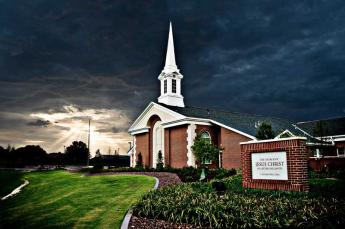
|
| The Church of Jesus Christ of Latter-day Saints |
However, with the publication of the Book of Mormon, Smith rapidly gained adherents numbering in the thousands. He moved the center of the religion westward in several steps and was shot to death by a mob, variously styled as militia and vigilantes, in Illinois at the age of 38. Just who killed him and what the motives were are matters we normally leave to courts rather than newspaper accounts. There is little doubt that many other religions of the time were outraged by the tolerance of polygamy, and so the account that he was assassinated by offended husbands of those to whom he proposed marriage, must be somewhat discounted. All religious disputes have a tendency to get out of hand, and the frontier religions of that time were particularly feverish, flaring up in an environment of the rule of the six-gun.
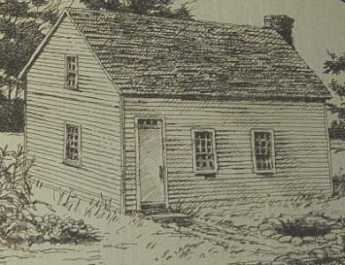
|
| Joseph Smith House |
The attraction of this religion seems to an outsider to have been based on its forgiveness for sinners, offering them tolerant heaven rather than the vindictive hellfire and brimstone which more puritanical protestant sects at that time envisioned for even well-behaved converts. There is a certain echo in Smith's Mormonism of the tolerant Quaker view that "There is that of God, in everyone." Similarly, although it is difficult to accept his idea that the American Indian tribes might be descendants of a lost tribe of Israel from the 7th Century B.C., the Mormon, and Quaker, teaching of tolerance to the Indians was in keeping with changing racial views in the early 19th Century, and softens somewhat the former Mormon distrust of the black race; although that, too, must be seen in the context of the then-approaching Civil War.
The best-known feature of this religion used to be polygamy, however, which is difficult to defend with theological, demographic or even romantic reasonings. With a few exceptions among Mormon extremists, the religion has moved away from any defense of polygamy. As the center of Mormonism moved to Utah, Congress outlawed polygamy, and the church officially condemned the practice and gave it up. Since it is still not rare to encounter a kindly decent gentleman on the streets of Salt Lake City whose grandmother or great-grandmother had been a polygamous wife, the whole subject has come to be treated there as an ancient embarrassment, best left unmentioned, but never quite forgotten. As a matter of fact, all religions have so much to account for in their past that they are most fairly judged by the sort of behavior they seem to inspire in their followers. By that standard, the earnest, decent, hard-working Mormons of today have earned their right not to be sneered at.
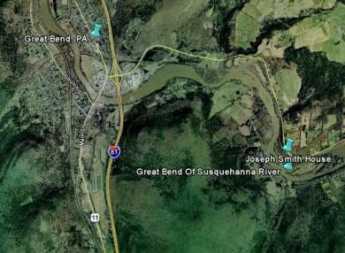
|
| Great Bend PA |
As for the simple little memorial along the river, it may seem a disappointment to some. It has not been made into a tourist attraction or a place of pilgrimage. It may even be a little unprotected from vandalism. But is surely worth the small trouble to visit, adding only half an hour to anyone's trip. One does not have to accept either the history or the theology in order to wish to see the place, which is a sweet little neglected clearing with a railroad running between it and the river. As a backdrop, the great bend in the Susquehanna is a remarkable sight in itself, because the river seems to be running in the wrong direction while no one notices. But one final double-take about polygamy simply cannot be resisted. One of the members of the Right Angle Club spent many years in the Middle East as a diplomat, where every Muslim man is permitted to have four wives. He reports that the younger Muslim men will often have nothing whatever to do with polygamy. Having watched the scheming, conniving jealousies of that custom from a front-row seat, the sort of Arab who always wears western clothes has firmly decided from personal observation that one woman, or at least one woman at a time, is quite enough.
The newspapers tell us a Mormon tabernacle or church may soon be constructed near the new Barnes Museum on the Parkway in Philadelphia. It could even resemble the one in Washington DC, with a statue of the Angel Moroni, blowing a gleaming gold trumpet. The Mormons seem to want Philadelphia to notice them and form an opinion, which indeed we probably will.
Mennonites: The Pennsylvania Swiss
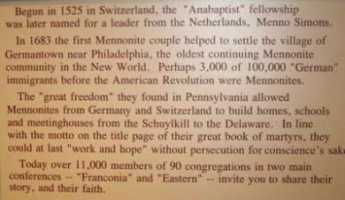
|
| On the Wall of the Mennonite Heritage Center |
Anabaptism, originally attributed to Ulrich Zwingli around 1525, centers around believing a baby is too young to understand baptism, so adults need to be re-baptized. The idea arose independently in Switzerland and Holland, and probably thousands of believers were unmercifully martyred for holding the belief. Because the worst persecutions took place during the War of Austrian Succession (1740-50), they are often attributed to the Roman Catholic Inquisition, but Magisterial Protestants, believing in the separation of church and state, were often also responsible. Many seemingly unrelated issues were introduced locally, and this period of unrest is known as the French and Indian War in America; its major battle took place in Louisburg, Nova Scotia, although George Washington's skirmish around Fort Duquesne (Pittsburgh) has acquired local fame as a major American manifestation.
The Swiss adherents moved to the Rhineland Palatinate, and from there were among the first to accept William Penn's offer of religious freedom. They were the settlers of Germantown, but have mainly moved a few miles west to southern Montgomery County, where the confusion about Pennsylvania Dutchmen is further confounded by the fact that they were Swiss. Menno the Dutchman gave his name to the order, but they themselves regard their true ethnic background as Swiss from the Zurich region. That, by the way, is not to be confused with Calvinism, which also comes from Switzerland, but by way of Geneva, not Zurich. The pacifism of the Mennonites made them mutually attractive with the English Quakers, who had made an appearance fifty or so years later in the region around Manchester, England; each group seems to have adopted some of the features of the other.
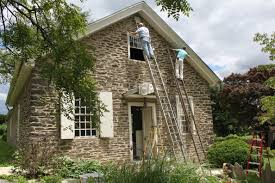
|
| Franconia Mennonite Meetinghouse |
Determined use of the German language has always held the Mennonites apart, however. From the start, it was really necessary to be somewhat bilingual in Montgomery County, using English for business conversation, and German at home and in the church. The idea of using a foreign language is based on the hope it would thus maintain a sense of distinctiveness or even remoteness from non-believers, without adopting the least hostility to them. It almost inevitably follows that the group has used its own schools, attached to their meeting houses. This sense of remoteness has persisted for almost four hundred years, surrounded by entirely different cultures. Starting only around 1960, this attitude has gradually softened, however, and it is widely assumed that in another few decades Mennonites will come to resemble the people in their environment a great deal more than they do at present. If you want to know where to find them, Harleysville is a good place to start. As the tinge of Pennsylvania Dutch accent gradually fades, and fewer of them wear the old costumes, a curious remaining hallmark of their presence can be noticed: an avoidance of foundation planting around their houses. The Mennonites themselves seem to be entirely oblivious to this unintended distinctiveness, which is however quite striking to non-Mennonite passers-by. Those who work in the fields all day have little interest in digging around their houses for decoration; those who have moved away from farming have seemingly adopted the bush-less style as a natural way of arranging things. There's no particular reason to change it, and so, there's no particular reason to notice it.
History of the Mennonites
Glorious Revolution: Nov. 5, 1688
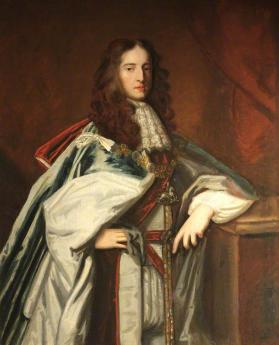
|
| William III of Orange |
The history of William III, or William of Orange, or the William of William and Mary, is mentioned in American history but not much noticed. In academic parlance, it's a topic which probably won't be on the test. By contrast, British schoolboys do learn a lot about Winston Churchill's ancestor the Duke of Marlborough who was William's commander against the French, and also the religious troubles William provoked in Ireland, but Britons mainly seem to express a bewildering relief that religious quarreling in England finally came to an end with the ascension of William and Mary to the throne. What the Irish thought about the same events is apparently just ignored. But what Pennsylvanians (and residents of Delaware and New Jersey, too) should mainly note is that when William came to the British throne, the era of William Penn's special protection by the Monarchy was over. Penn's heirs changed both their style and their religion, and worked hard to be friends of the King; but it was never going to be the same as it had been when Charles II made a promise to William Penn's father on his deathbed, that he would look after the troublesome boy.
The British populace had thought they became a Protestant nation under Henry VIII and solidified that situation under Elizabeth I. But somehow the religious issue violently re-arose under "Bloody" Mary and Cromwell. And even that was not enough; Charles II and his brother James II were secret Catholics, there seemed to be no end to this. An American gets the feeling that the British citizenry was more fed up with wrangling about Royal Religion than so much exercised about its theology. In any event, when James II produced a royal son who would almost certainly be raised a Catholic, it was just too much for most of his subjects. James just had to go.
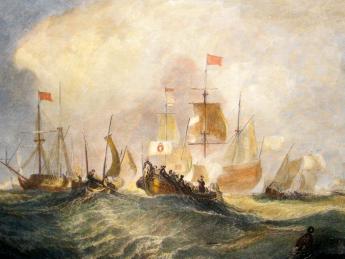
|
| Landing at Torbay |
The most likely Protestant king available was William of Orange, the Dutch king. William himself was eager to have more allies for the Netherlands because the French king Louis XIV was busily swallowing up his weaker neighbors and the Netherlands were probably next. His wife, Mary, was the daughter of James II, so the legitimacy of his line was assured. Urged on by members of the British aristocracy and several powerful members of Parliament, he built a fleet which was alleged to be needed against Algerian pirates and soon set sail for England. Fearing French attack while his troops were in England, William had made extensive alliances in British military circles, and when he arrived he was more or less acclaimed, bloodlessly. For whatever reason, James II put up a very little fight was imprisoned briefly in a way that invited escape and left for France. And so William and Mary were victors in a bluffing game which James did not resist very hard, and were the monarchs of a Protestant nation. However, Ireland was Catholic and resisted, leading to bloody suppression which is still muttered about in Irish taverns, and fought over in Northern Irish elections.
Meanwhile, we all know what was happening to William Penn. He had a stroke, his steward in England and Logan in Pennsylvania "stole him blind", and the greatest private landowner in British history went to debtor's prison. Hardly any of this is imaginable under the Stuart kings. And for that matter, the later behavior of George III is not imaginable under the Stuart kings, either.
Labyrinth, Episcopalian Version
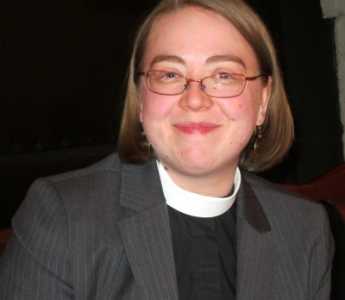
|
| Reverend Diana Carroll |
The Reverend Diana Carroll, Assistant Rector of Holy Trinity Church on Rittenhouse Square, recently addressed the Right Angle Club about the labyrinth to be found there. The fact is, it is there because she put it there, where it is open to the public on Saturday afternoon a month. There are half a dozen other labyrinths in Philadelphia Churches, mostly forgotten, so this is a revival of a custom rather than the invention of one. St. Asaph's on City Line Avenue, St. Stephen's at 10th and Market and a few others have them, most neglected and forgotten. Reverend Carroll admits to importing the tradition to Holy Trinity, persuading everybody in charge to nurture it, and setting aside one Saturday afternoon for the public to visit each month. Labyrinths differ in their design; this one copies the design within Chartres Cathedral in France. In England, labyrinths are much more popular and have other designs.

|
| Labyrinth |
Contrary to popular belief, a labyrinth only has one entrance, which is also its only exit. The visitor goes in, goes round and round and comes to a dead end, and then goes back out the same way. There's no great problem about getting lost; the confusing puzzles of ancient lore are not labyrinths, they are mazes. Whether with walls or simply lines on the floor, labyrinths are designed for meditation and symbolism. It's possible to bump into other people on the way out, it's possible to be struck by the symbolism of reaching the center of things, it's possible to imagine the human condition of getting into things and then getting yourself out. Diana Carroll says the labyrinth evokes the image of feminism to her, entering or leaving the uterus. That thought might not have occurred to everyone else, but an agreement isn't central to appreciating labyrinths.
The Nazca lines, best seen from an airplane over Chile, evoked the image of labyrinths to several Right Angle members. Those lines are a couple of thousand years old, in a decidedly non-Christian environment at the time. Forty-five centuries B.C. could safely be judged to precede Christianity, so it becomes clear that this concept is discontinuous, popping up in many minds in many circumstances. Some theologians might well contend this proves that meditation labyrinths are therefore not part of any fixed religious doctrine. But others, with equal justice, might say it proves that labyrinths are part of the essential nature of contemplative man. Or as in Reverend Carroll's case, woman.
Heavenly House
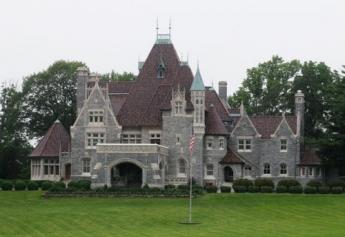
|
| Father Divine House |
While prosperous people, on deciding to enter a retirement community, are often heard to say they are tired of managing a big house, it can also be noticed that people who get the foreign travel bug usually drift around to see the palaces, castles, and estates of kings and emperors. The king's bathroom plumbing is a stop on most tours. Places like Buckingham Palace, the Vatican, the Temples of Karnak, Fortresses of Mogul Conquerors of India, or similar places in Cambodia, are all vast looming piles of stone dedicated to the memory of departed leaders who Had it All. That's probably all you need know, to understand that Americans who have it all tend to build huge show places, too. A great many do discover the castles to become just too much bother. Safe protection and privacy are somewhat separate issues, reasons given for putting up with a big place past the time the thrill has worn off. Perhaps such jaded feelings appear at the end of the wealth cycle. Nevertheless with enough affluence, if you had unlimited money and inclination, where around Philadelphia would you put a dream palace, one built for a modern Maharajah? Answer: close to Conshohocken.
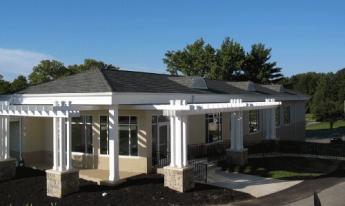
|
| The Philadelphia Country Club |
The Schuylkill takes a sharp bend at Conshohocken because it flows around a big cliff on the west side of the river. It was there the White Steel Company built the first wire suspension bridge in the world, as distinguished from cable (twisted wire) suspension bridges invented by Roebling at Trenton. The bridge was swept away by a flood, the steel mill replaced by the Alan J. Wood Steel Company. Alan Wood prospered mightily, and built his mansion ("Woodmont") on 75 acres on the top of the big rock on the west side of the Schuylkill, in such a way he could watch the smoke rising from his factory down below at the foot of the cliff. The Philadelphia Country Club is across the road from Alan Wood's mansion, with fairways clinging to the cliffs, a Gun Club for trap shooters who want to aim away from houses and toward mountainsides, and a cliff-top road leading straight for Gladwyne between dozens of mansions with five-acre lots. Down the hill, however, rocky projections force the road to funnel into a winding crooked road which ends up near the filling stations of Conshohocken, passing ancient farm structures on the way. Railroads and expressways tend to fill the valley, the old White bridge is gone, and two distinct cultures are within a few hundred oblivious yards of each other. To the west stretches the Main Line, now filled with houses almost as large as the mansion, but air-conditioned and filled with other modern amenities. Seventy acres of a lawn is nice, but it's a lot of grass to cut.
The Alan Wood Steel Company had a hard time in 1929, recovered somewhat after World War II, and then declined to the point where Lukens and Phoenix Steel took over. And then Indians from India took over the lot, forming part of the largest steel complex in the world, now headquartered abroad. In 1952, one of Father Divine's religious followers named John Devoute gave Father the Wood mansion; which then became the new headquarters of his religious sect. He died in 1965 but Mother Divine still lives there in stately and tasteful semi-seclusion. The grounds of the estate are beautifully tended by various of the twenty-five attendants of Mother. Father's mausoleum is near the house.
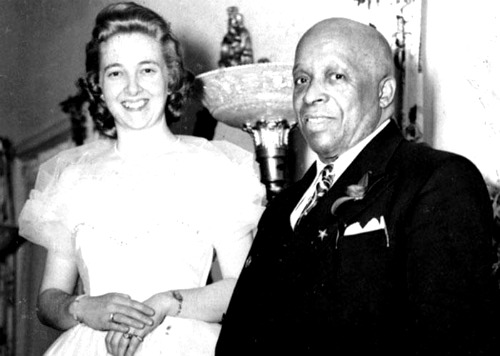
|
| Father and Mother Divine |
The house itself is patterned after Biltmore in Asheville, NC, although perhaps only a quarter as large. Just inside its portecachier, the oak-paneled living room has a ceiling 45 feet high, and many oriental rugs. There is a music room, off to the side of which is Father's former office, bearing a strong resemblance to the Oval Office in the White House in Washington. As planned, the living room window looks down the valley to the site of the old steel mills, although when the trees are leafed out it may be difficult to see. The dining table probably seats forty people, although the paneled dining room was fitted with electronics and used to broadcast sermons to religious adherents across the country. In the living room are testimonies to the many who seemed to rise from the dead, or who had their blinded sight restored, or who were crippled but enabled to walk. The attendants take visitors on tours, but Mother Divine likes to meet them, coming down the sweeping staircase without noticeably showing her age. The greeting of "Peace" replaces the usual "hello" and "goodbye".
At one time, the Religion housed a large number of single women in several hotels, and the invested proceeds of their work as domestics still supports the Religion. The religion frowned on gambling, drinking, smoking, and sex. However, celibacy inevitably leads to a decline of numbers, particularly evident since the death of the founder.
State in Schuylkill Fishing Club
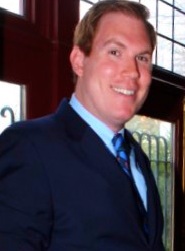
|
| Richard Romm |
Richard Romm, a rising historical scholar with a special interest in early Philadelphia, recently educated the Right Angle Club in the history of the Schuylkill Fishing Club in the State in Schuylkill, and was immediately accepted into membership. Of the Right Angle, that is, which is an old club by some standards, but scarcely a hundred years old in the eyes of the really old, old clubs.
The State in Schuylkill is an eating club, originally a fishing and eating club, apparently organized around the annual shad run up the river. The clubhouse, or Castle, was moved several times, in response to damming of the river, and is now located on the grounds of, or adjoining the edge of, Nicholas Biddle's estate on the Delaware River called Andalusia. One by one, the Atlantic Ocean rivers of America have been dammed and their annual shad migrations brought to an end, except through the city of Richmond, Va, so there was little point in moving The Castle to follow the fish. It remains, overlooking Delaware in spite of its name.
There seems to have been several name changes, the most important of which was to change the Colony of Schuylkill to the State of Schuylkill for obvious reasons. Originally, the Castle was roughly opposite the falls of Fairmount on the West Bank of the Schuylkill at about Girard Avenue; thus, from 1732 to 1822 located on Baron Warner's property called Eaglesfield. In 1822 it moved to Rambo's Rock (the Rambo family is said to be the oldest European settler family in Pennsylvania) opposite Bartram's Gardens, then finally in 1887 to Andalusia, Nicholas Biddle's country estate. The club was founded in 1732, and dates of movings are possibly hazy, possibly somewhat because of the reluctance of club officers to return the calls of inquiring historians. The State in Schuylkill claims to be the oldest organized men's club in the world, an honor contested by White's in London. The roots of this argument are found tangled in the vital issue of whether their age should be based on the formal organization of the clubs, or on the establishment of the coffee houses which housed the original clubs. Four books are said to have been written about club history, but we depend here on Mr. Romm.
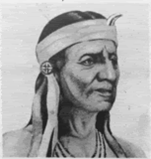
|
| Chief Tammenend |
There is also an unclear relationship with Chief Tammenend, possibly traceable to the shad run, but in any event to the Indian chief depicted with William Penn in the paintings by Benjamin West and Edward Hicks. May 1 is St. Tammany's day, growing into the fancy that he was the "Patron Saint of America", before a branch of the nation-wide Tammany association opened in New York and sort of tarnished up the name. Other traditions of the Fishing club have to do with wearing Mandarin hats, possibly having to do with the export of ginseng which was once abundant in our colonial suburbs, with a return cargo of Chinese dishware. All of the cooking is done by official citizens of the club. The quantities of food are remarkable; one 19th Century menu listed eleven pounds of meat per member. The club drink is a punch, the famous Fishhouse Punch, widely recognized to be rather strong. Its inventor is reputed to be Edward Shippen Willing, on the occasion of the first visit to the clubhouse by women guests. The quantity of alcoholic beverage at these events is especially remarkable in view of the Quaker origins of many original members of the club, but not necessarily of the guests. Among the various guests were Generals Grant, Meade, and McClellan. Dinner begins with two traditional toasts: to George Washington, and to Captain Sam Morris. Washington was appropriate enough, having a history of drinking a bottle of Madeira every day at lunch. But Sam? Captain Sam the Quaker?
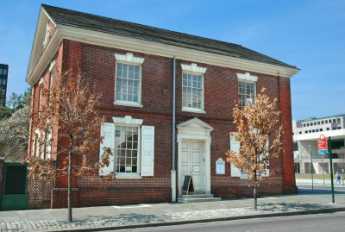
|
| Free Quaker Meetinghouse, Fifth and Arch Streets |
Somewhere in this tradition are allusions to the Free Quakers, Quakers who abandoned the peace testimony to fight the British. There is also the tradition of hostility to British rule which antedates the Revolution and may have some connection to the fanciful contention that their little state was not really part of Penn's colony. Captain (of the City Troop) Sam was a stalwart, possibly the sole founder, of the Gloucester (N.J.) Fox-hunting club. The history is passed down that 22 of the original 26 members of the First City Troop were members of the fox-hunting club, and many if not most were Quakers. The first "Governor" of the State in Schuylkill was Thomas Stretch, but the second Governor, from 1766 until his death, was Captain Sam. He was repeatedly referred to as the life of the club and held in the highest esteem by all. He was "read out" of the main Quaker Meeting, not so much for his drinking as for his flouting of Quaker belief in pacifism. He reputedly led a saber charge at the Battle of Trenton and was a leader of the City Troop in that revolution within a revolution at James Wilson's house, which rescued at least four future signers of the Constitution from a mob of militia which momentarily turned Jacobin.
Naturally, descendants of Quakers on both side of this uproar have been reluctant to say much about it. But somewhere within the history of Samuel Morris must be some important clues about the 18th Century splits within the Quaker Church, to say nothing of the revolt of the three Quaker colonies against British rule.
Museum of the American Revolution
The Right Angle Club of Philadelphia was recently pleased to be visited by Michael C. Quinn, the President, and CEO of the forthcoming Museum of the American Revolution, which will be built at Third and Chestnut Streets, on the site of the former Visitors Center. Mr. Quinn comes to us from the Mt. Vernon and James Madison Museums in Virginia and expects to spend another three years getting the new Museum built and established. It's also expected to cost about $150 million, so look for something really special. The great majority of the required money is expected to come from Philadelphia and surrounding territory, led by a challenge grant from Gerry Lendfest of $40 million.
The collection of Valley Forge and related Revolutionary artifacts was begun by Herbert Burk, an Episcopal rector in Norristown, Pennsylvania, and the son of another Episcopal rector of Clarksboro, New Jersey, and who graduated from the University of Pennsylvania toward the end of the Nineteenth century. The Valley Forge area was pretty well deserted at that time, and the local bishop expressed doubt that it could support both an Episcopal and a Baptist church, particularly since an earlier rector named Guthrie had attempted it and finally disappeared. Reverend Burk, however, was fired with the vision of Washington kneeling in the snow, and highly scornful of doubters who insisted on seeing his footprints in the snow before they would accept it. These were the days just after the German historian Leopold von Ranke had started a movement of great enthusiasm among historians for documents to prove almost anything calling itself history, so there was more than the usual amount of harumphing among academics about authenticity, which Burk dismissed with scorn. Since his second wife was a Stroud, there may have been social issues as well. About all, we really know of George Washington's religious beliefs was that he regularly went to Christ Church and sat in Martha Washington's pew; but he resolutely refused to take Communion. It sounds to some of us as though he was more of a politician than a theologian. But the Museum now has picked up successor enthusiasts, determined to make the Museum a success; so let's let that religion matter drop.
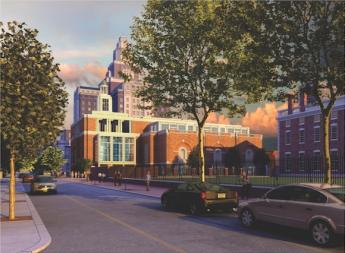
|
| Museum of the American Revolution |
The old visitors center was given a bell by Queen Elizabeth II, who brought it over on the royal yacht and gave a memorable speech at its installation. The deed to the property does not include the bell, and its future is presently uncertain. However, the building will be torn down and replaced by a much larger structure, intended to house many rooms and a tour lasting hours, to show off Washington's military tent and similar artifacts of the low point of the Revolution, when it rested with the personal character of a few founding fathers, to preserve the drive and idealism of the freezing, starving troops. It's a tall challenge for Mike Quinn to carry it off with the right mixture of showmanship and concern for accuracy. After all, no good story is improved by exaggeration.
Adoption
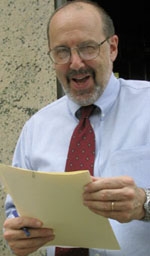
|
| Peter Conn |
Peter Conn, a member of the Franklin Inn of Philadelphia, is recently retired from the University of Pennsylvania. Since he has adoption in his family, he became curious about the matter, found that almost nothing has been written about the history of this topic, and decided to write a book about it himself. At a recent monthly meeting of the club, he described his findings, which are pretty surprising.
In a vague sort of way, everyone's general readings do confirm his findings that adoption was frequent among the American Indians, and also among the ancient Romans. In early 6th century Europe, however, it seems to have died out, only to return as a common experience in the 16th century. The first American law that Dr. Conn could find establishing the rules and legal conditions of adoption was passed in Massachusetts in the 19th century, at roughly the time American states were passing laws forbidding abortion. Whether there is a connection between the two movements or not is speculative. However, it does seem pretty likely that our current perceptions about adoption are surprisingly recent, reflecting a strong likelihood that Roman and Indian traditions have nothing to do with it, but fairly recent history might well have a lot to do with it.
Just a little reflection about all the stories we read, alluding to orphanages, foundlings, wards, primogeniture, romantic love, choices of marriage partners, and the like, quickly confirm a realization that conditions and attitudes about reproduction must have changed a very great deal, and fairly recently. It was not very long ago that children were apparently so numerous they could be treated as expendable. Considering how dangerous childbirth has been until recently, current attitudes about "valuable babies" , motherhood, and even the role of women in society must be evolving quickly without our realizing it, and in directions so recent they may well require further revision. Just whose views are old fashioned and whose views reflect modern insights are both judgments we probably should classify as tentative for at least a few more decades.
For example, the dates of major changes in attitudes about foundlings inevitably generate reflections about the attitudes of the Catholic Church. That ancient organization probably has enough troubles with bedroom issues, without adding this one. But the coincidence of the dates with the rise of the Church in Europe, and the subsequent rise of Protestantism, inevitably generate questions about Church attitudes as the cause, or possibly some sociological changes in society which transform both church and reproductive attitudes at the same time. What were the roles of the Crusades, and the Arab invasion of Europe, or the Ottoman invasion? Or the black plague and the white plague, or the Industrial Revolution? We have to know more about these cataclysmic events in order to have even a small idea of whether they might have influenced each other.
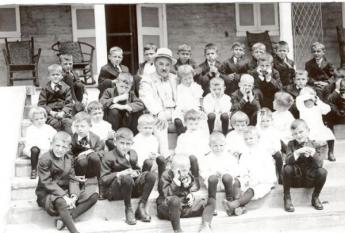
|
| Milton Hershey founded the Hershey Industrial School |
It makes a lot of difference whether a culture needs agrarian workers or not, to understand why "the best interests of the child" should only recently have been established as a legal basis for oversight of contested adoptions. Or why inheritance by adoptive children has only been such a recent phenomenon, endorsed by law. What happened to cause the abandonment of all the orphanages we used to have? Why have we chosen to split the issue between adoption and foster care, and treat the two so different? Where do the Girard College and the Hershey School fit into this transition? Why do the Russians feel they are injuring America by forbidding American adoption of Russian orphans?
And get this: during the 19th century in America, when there was a surplus of women on the East Coast resulting from a massive migration of males to the West, about 250,000 American orphans were packed on various trains and sent West. We are told they stopped at a station and let the local settlers select a few, and then the train continued going West, letting off more and more adoptees until they were all gone. Transcontinental railroads were only built after the Civil War, so this sort of child disposal was not more than a century before the political battles of Roe v Wade. We have a lot to learn, and probably a lot to be humble about. So let's not bury the truth under a mountain of political correctness, but let's not have any witch-hunts, either.
REFERENCES
| Adoption: A Brief Social and Cultural History: Peter Conn: ISBN:ISBN-13: 978-1137332202 | Amazon |
45 Blogs
Puritan Boston & Quaker Philadelphia
 The University of Pennsylvania Sociology professor E. Digby Baltzell drew attention to the strong persistence of earlier elite influences, using Philadelphia's Quakers and Boston's Puritans as prime examples.
The University of Pennsylvania Sociology professor E. Digby Baltzell drew attention to the strong persistence of earlier elite influences, using Philadelphia's Quakers and Boston's Puritans as prime examples.
TOAST TO E. DIGBY BALTZELL (1915-1996)
 A toast to E. Digby Baltzell (1915-1996), given by Theodore Friend, Sr. at the Franklin Inn Club annual dinner on Franklin's birthday, where toasts are customary.
A toast to E. Digby Baltzell (1915-1996), given by Theodore Friend, Sr. at the Franklin Inn Club annual dinner on Franklin's birthday, where toasts are customary.
William Penn, Excellent Lawyer, Terrible Businessman
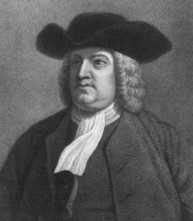 William Penn was the central force in the establishment of a religion, Quakerism, certain central features of the legal system, three colonies of America, and many of the central concepts of Constitutional Law. He leaves us over three thousand documents, but it remains very hard to form a picture of what he was like.
William Penn was the central force in the establishment of a religion, Quakerism, certain central features of the legal system, three colonies of America, and many of the central concepts of Constitutional Law. He leaves us over three thousand documents, but it remains very hard to form a picture of what he was like.
Quaker Doctrine and Schism
 Without a written doctrine, outsiders get a glimpse of Quaker belief from what they think is worth arguing over.
Without a written doctrine, outsiders get a glimpse of Quaker belief from what they think is worth arguing over.
The No-Doctrine Doctrine
 The doctrine of Quakerism is to have no doctrine. It has provoked two main schisms in the church; George Keith making a plea for at least some doctrine, Elias Hicks leading a later move back to simplicity.
The doctrine of Quakerism is to have no doctrine. It has provoked two main schisms in the church; George Keith making a plea for at least some doctrine, Elias Hicks leading a later move back to simplicity.
Free Quaker Meetinghouse
 It's only open a few days each year, but the red brick building at 5th and Arch was the meeting house for those few Quakers, including Betsy Ross, who fought for the Revolution. The Park Service has made a beautiful restoration, which deserves to be seen by more people.
It's only open a few days each year, but the red brick building at 5th and Arch was the meeting house for those few Quakers, including Betsy Ross, who fought for the Revolution. The Park Service has made a beautiful restoration, which deserves to be seen by more people.
Slavery: If This be done well, What is done evil?
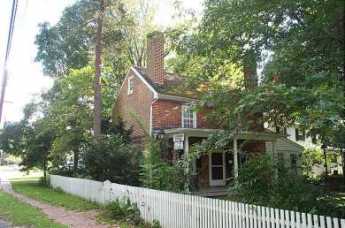 Philadelphia German Quakers were the first to protest the evils of slavery.
Philadelphia German Quakers were the first to protest the evils of slavery.
AFSC: American Friends Service Committee
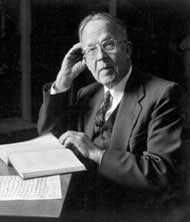 Quakers serve, without fear or favor.
Quakers serve, without fear or favor.
George Willoughby, 95, Peace Activist
 In The Philadelphia Inquirer for February 4, 2010, By Claudia Vargas Inquirer Writer.
In The Philadelphia Inquirer for February 4, 2010, By Claudia Vargas Inquirer Writer.
Robert Barclay Justifies Quaker Meetings
 Robert Barclay, one of the handfuls of English philosophers of enduring note, came close to establishing the doctrines of the Quaker Church, a religion with no formal doctrine.
Robert Barclay, one of the handfuls of English philosophers of enduring note, came close to establishing the doctrines of the Quaker Church, a religion with no formal doctrine.
Quaker Carillon
 In an unprogrammed Quaker meeting, respectful pauses between messages should be long enough to form a "gathered opinion". Not too long, of course, or lacking some external signal of what the subject is. Gathered meetings and fragmented ones may sound alike to strangers, but little signals that others are listening can be found in the intervals of silence.
In an unprogrammed Quaker meeting, respectful pauses between messages should be long enough to form a "gathered opinion". Not too long, of course, or lacking some external signal of what the subject is. Gathered meetings and fragmented ones may sound alike to strangers, but little signals that others are listening can be found in the intervals of silence.
Quakerism and the Industrial Revolution
 The Industrial Revolution extended over two centuries and was more important than all the wars, governments, and agitations of its time. Quakerism began at the same time, in the same place. Was that only coincidence?.
The Industrial Revolution extended over two centuries and was more important than all the wars, governments, and agitations of its time. Quakerism began at the same time, in the same place. Was that only coincidence?.
Christ Church Memorabilia
 (To be completed.)
(To be completed.)
Christ Church and Elfreths Alley
 Two of our oldest and most charming tourist attractions are just across the street from each other.
Two of our oldest and most charming tourist attractions are just across the street from each other.
Urban Bridges
 The Episcopal Church has found a practical way for its prosperous suburban branches to form partnerships with struggling urban parishes.
The Episcopal Church has found a practical way for its prosperous suburban branches to form partnerships with struggling urban parishes.
The Revolutionary Origins of The Methodist Church
 The Wesley brothers converted so many Americans to the Anglican church, they couldn't ordain enough ministers. Reluctantly, Americans were allowed to ordain their own ministers. When the Revolution was over, they had drifted into a new Protestant denomination.
The Wesley brothers converted so many Americans to the Anglican church, they couldn't ordain enough ministers. Reluctantly, Americans were allowed to ordain their own ministers. When the Revolution was over, they had drifted into a new Protestant denomination.
The Hogan Schism
 What happens when the parish likes the local priest better than the Bishop, and the Bishop is stupid enough to make an issue of it?
What happens when the parish likes the local priest better than the Bishop, and the Bishop is stupid enough to make an issue of it?
Stephen Girard and Religion
 The great philanthropist was, to say the least, anti-clerical. A real-life story tells how far this was carried.
The great philanthropist was, to say the least, anti-clerical. A real-life story tells how far this was carried.
Religion at Girard College:Spiritual But Irreligious
 In his will, Stephen Girard famously banished all clergymen from the grounds of his school for orphans, even as visitors. Nevertheless, the school's atmosphere is a highly ethical, even religious, one. Many graduates have become ministers.
In his will, Stephen Girard famously banished all clergymen from the grounds of his school for orphans, even as visitors. Nevertheless, the school's atmosphere is a highly ethical, even religious, one. Many graduates have become ministers.
Colleges and Religions Drift Apart

The Rights of Man
 The current dispute about the judicial interpretation of the law has its origin in the different way that Common Law was once made.
The current dispute about the judicial interpretation of the law has its origin in the different way that Common Law was once made.
Joseph Priestley, Shaker and Mover
 The father of the science of chemistry was also the founder of the Unitarian Church in America.
The father of the science of chemistry was also the founder of the Unitarian Church in America.
Joseph Priestley of Northumberland, PA
 If asked to name the residence of Joseph Priestley, the Father of Modern Chemistry, most people would not think of Northumberland, PA.
If asked to name the residence of Joseph Priestley, the Father of Modern Chemistry, most people would not think of Northumberland, PA.
The Swedenborgian Church
 The Swedenborgians belong to the Church of the New Jerusalem, following the teachings of Emanuel Swedenborg, and strongly emphasizing personal responsibility, individuality, and good works. The Philadelphia branch is particularly strong, centered around a magnificent medieval cathedral in Bryn Athyn. Johnny Appleseed and Helen Keller were notable adherents, and a driving force has been the Pitcairn family of industrialists.
The Swedenborgians belong to the Church of the New Jerusalem, following the teachings of Emanuel Swedenborg, and strongly emphasizing personal responsibility, individuality, and good works. The Philadelphia branch is particularly strong, centered around a magnificent medieval cathedral in Bryn Athyn. Johnny Appleseed and Helen Keller were notable adherents, and a driving force has been the Pitcairn family of industrialists.
Franklin Declares Independence a Year Early
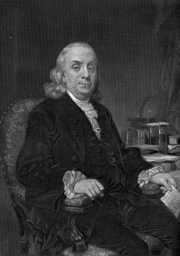 Franklin made no secret of his goal of national independence, at least a year before the Continental Congress voted and Thomas Jefferson composed his rather rambling declaration.
Franklin made no secret of his goal of national independence, at least a year before the Continental Congress voted and Thomas Jefferson composed his rather rambling declaration.
Sacred Places at Risk
 Church structures don't migrate, but church members do. A volunteer organization in Philadelphia has formed, to help endangered congregations decide how to review their options and act on the best choice.
Church structures don't migrate, but church members do. A volunteer organization in Philadelphia has formed, to help endangered congregations decide how to review their options and act on the best choice.
Tree Huggers: Delaware Valley College
 Delaware Valley College is a curious mixture of farm school with scientific aspirations and a Jewish history, located in Doylestown, where New York City and Philadelphia meet,
Delaware Valley College is a curious mixture of farm school with scientific aspirations and a Jewish history, located in Doylestown, where New York City and Philadelphia meet,
Onward, Christian Soldiers
 Like a fairy godmother, Jane Kroc has dropped a spectacular gift on the poor of North Philadelphia, and the Salvation Army. Opening in 2009.
Like a fairy godmother, Jane Kroc has dropped a spectacular gift on the poor of North Philadelphia, and the Salvation Army. Opening in 2009.
On the Subject of Rights
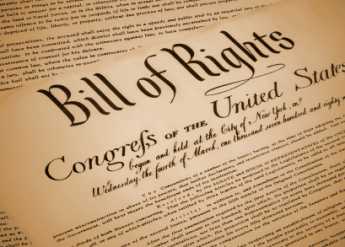 Human rights were mainly a religious issue to the Founding Fathers, demanding a Bill of Rights to signify God's supremacy over legislatures. When John Marshall transformed the Constitution into the capstone of the legal system, constitutionally affirmed rights became a legal trump card for those who feared or opposed the actions of the government. With that difference, it's little different, two hundred years later.
Human rights were mainly a religious issue to the Founding Fathers, demanding a Bill of Rights to signify God's supremacy over legislatures. When John Marshall transformed the Constitution into the capstone of the legal system, constitutionally affirmed rights became a legal trump card for those who feared or opposed the actions of the government. With that difference, it's little different, two hundred years later.
Gross National Happiness In Bhutan
 In Bhutan, Buddhists rule, and the government responds to modernization with GNH or Gross Domestic Happiness. Pause a moment, ye strivers and cravers, and think about this. Just because these guys wear funny clothes, doesn't mean they are from Hicksville.
In Bhutan, Buddhists rule, and the government responds to modernization with GNH or Gross Domestic Happiness. Pause a moment, ye strivers and cravers, and think about this. Just because these guys wear funny clothes, doesn't mean they are from Hicksville.
A Just Society
 The Right Angle Club tries something new.
The Right Angle Club tries something new.
First Amendment: Separation of Church and State
 Eleven of the original thirteen colonies had,"established" religions. The separation of church and state by the First Amendment was not a statement of fact, but a worrisome departure from the past, mostly prompted by the behavior of the Virginia Episcopalians. For the Pennsylvania Quakers, disestablishment was a most disheartening event.
Eleven of the original thirteen colonies had,"established" religions. The separation of church and state by the First Amendment was not a statement of fact, but a worrisome departure from the past, mostly prompted by the behavior of the Virginia Episcopalians. For the Pennsylvania Quakers, disestablishment was a most disheartening event.
Christmas Reflections
 It once was a tradition to go back to the big city for Christmas shopping..
It once was a tradition to go back to the big city for Christmas shopping..
What's Different About Kosher ?
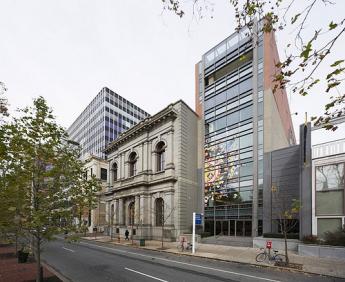 A recent conference at the Chemical Heritage Foundation examined the perplexing question of just what is signified by Kosher designation of food. Most of the curious audience were themselves Jewish.
A recent conference at the Chemical Heritage Foundation examined the perplexing question of just what is signified by Kosher designation of food. Most of the curious audience were themselves Jewish.
Unalienable Rights Before 1776
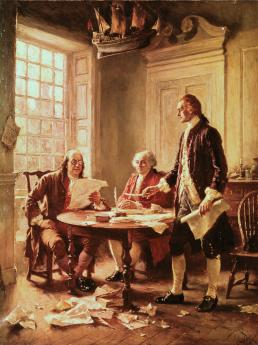 Lawyers commonly say the Declaration of Independence "informs" the Constitution. But prior informing was performed by William Penn, the Roman Empire, and Hammurabi.
Lawyers commonly say the Declaration of Independence "informs" the Constitution. But prior informing was performed by William Penn, the Roman Empire, and Hammurabi.
Inalienable Rights Before the Magna Carta
 Human rights of some sort can be traced back to 1800 B.C The question is not whether they are ancient, but who gave them out.
Human rights of some sort can be traced back to 1800 B.C The question is not whether they are ancient, but who gave them out.
Great Bend: Joseph Smith Translates the Golden Plates
 Joseph Smith announced he discovered the Golden Plates of Mormonism near Palmyra, NY. He spent three years translating them at his wife's home in Great Bend, Pennsylvania.
Joseph Smith announced he discovered the Golden Plates of Mormonism near Palmyra, NY. He spent three years translating them at his wife's home in Great Bend, Pennsylvania.
Mennonites: The Pennsylvania Swiss
 Mennonite Pennsylvania Dutchmen actually came here from Switzerland. The book of their religious martyrs is more than a foot thick since they practice non-resistance, a belief significantly more pacifist than non-violence. Nevertheless, they prosper abundantly in Montgomery County.
Mennonite Pennsylvania Dutchmen actually came here from Switzerland. The book of their religious martyrs is more than a foot thick since they practice non-resistance, a belief significantly more pacifist than non-violence. Nevertheless, they prosper abundantly in Montgomery County.
History of the Mennonites
Although an occasional member is irked by the world's neglect of his church and speaks out in annoyance, the Mennonites, in general, prefer to do good, unnoticed.
Glorious Revolution: Nov. 5, 1688
 William of Orange triggered three centuries of Irish conflict, more than a century of conflict between England and France, and spoiled the fortunes of William Penn. American history scarcely heard of him.
William of Orange triggered three centuries of Irish conflict, more than a century of conflict between England and France, and spoiled the fortunes of William Penn. American history scarcely heard of him.
Labyrinth, Episcopalian Version
 There's thirty-foot labyrinth in the Holy Trinity Church on Rittenhouse Square. The tradition of meditation walks reached a peak in the 12th and 13th Centuries, but examples can be found dating back to 4500 B.C.
There's thirty-foot labyrinth in the Holy Trinity Church on Rittenhouse Square. The tradition of meditation walks reached a peak in the 12th and 13th Centuries, but examples can be found dating back to 4500 B.C.
Heavenly House
 In or around Philadelphia, money no object, what's the best place to build a super-mansion?
In or around Philadelphia, money no object, what's the best place to build a super-mansion?
State in Schuylkill Fishing Club
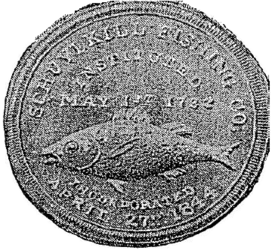 Unless you listen to some quibbles from White's in London, the Schuylkill Fishing Club of the State in Schuylkill is the oldest organized men's club in the world. And even if that exception is admitted, it's the oldest men's club in America. It's no secret, but it's very private.
Unless you listen to some quibbles from White's in London, the Schuylkill Fishing Club of the State in Schuylkill is the oldest organized men's club in the world. And even if that exception is admitted, it's the oldest men's club in America. It's no secret, but it's very private.
Museum of the American Revolution
 The old Visitors Center at Third and Chestnut has been vacant for more than a decade. Its new occupant is going to be a Museum dedicated to the causes and sacrifices of the American Revolution.
The old Visitors Center at Third and Chestnut has been vacant for more than a decade. Its new occupant is going to be a Museum dedicated to the causes and sacrifices of the American Revolution.
Adoption
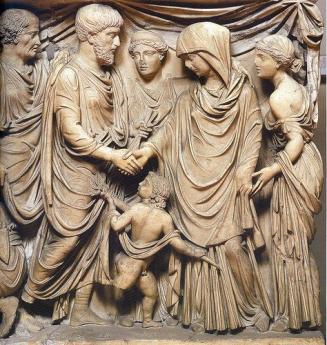 Although the Romans frequently adopted children, the practice died out in the 6th century, and only became common a thousand years later. Curiously little has been written about this matter, so speculation is probably unwise.
Although the Romans frequently adopted children, the practice died out in the 6th century, and only became common a thousand years later. Curiously little has been written about this matter, so speculation is probably unwise.